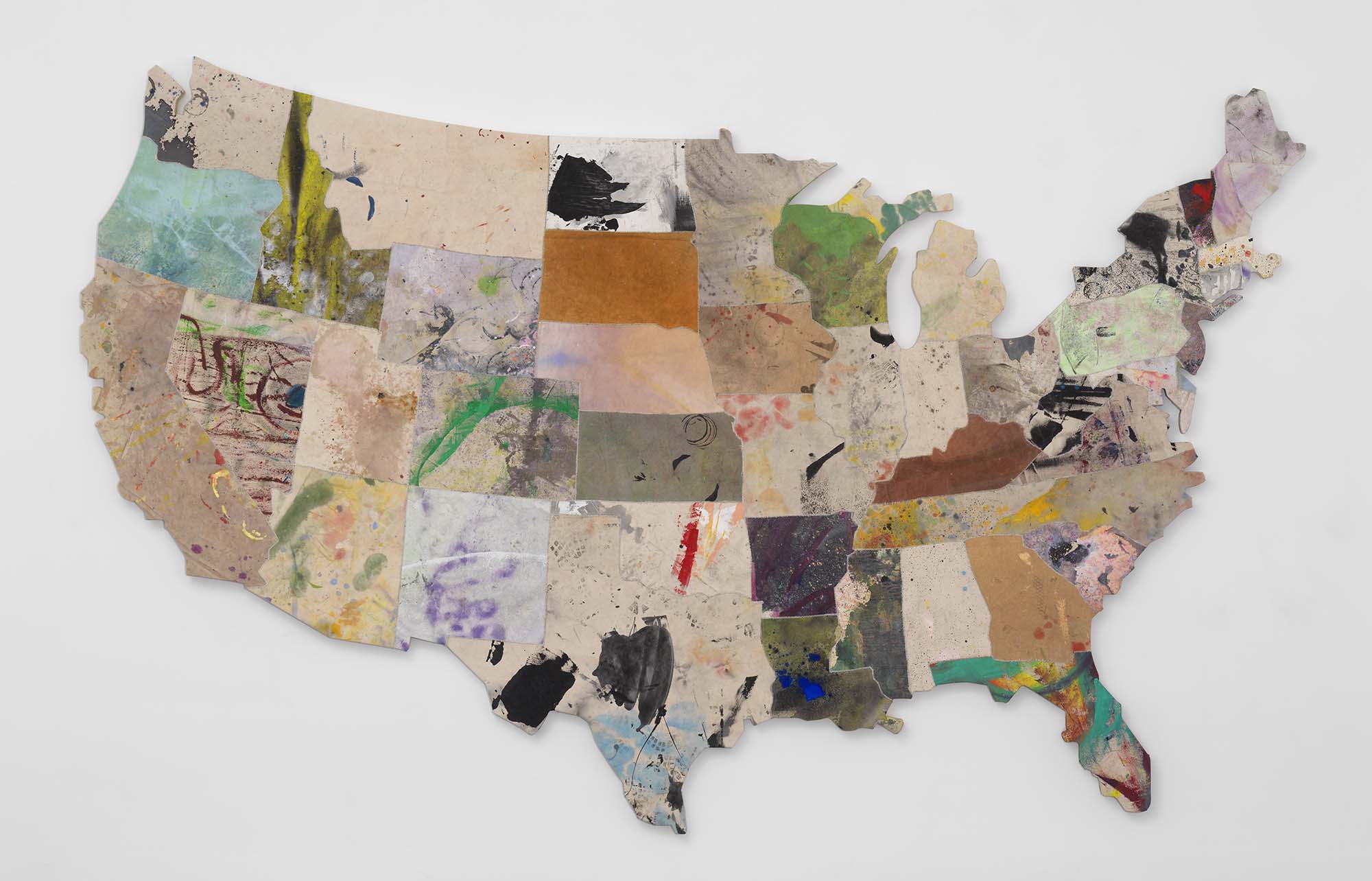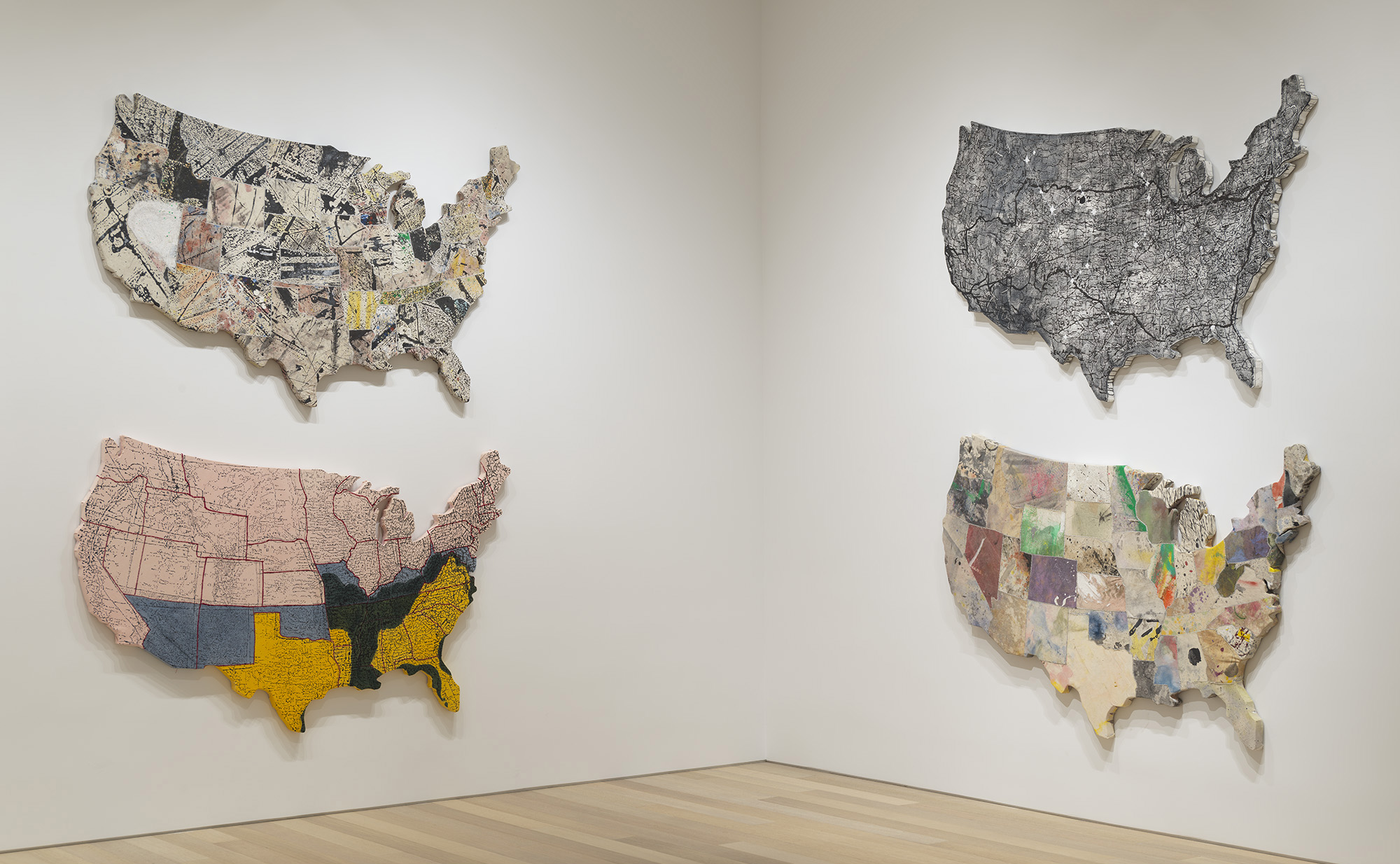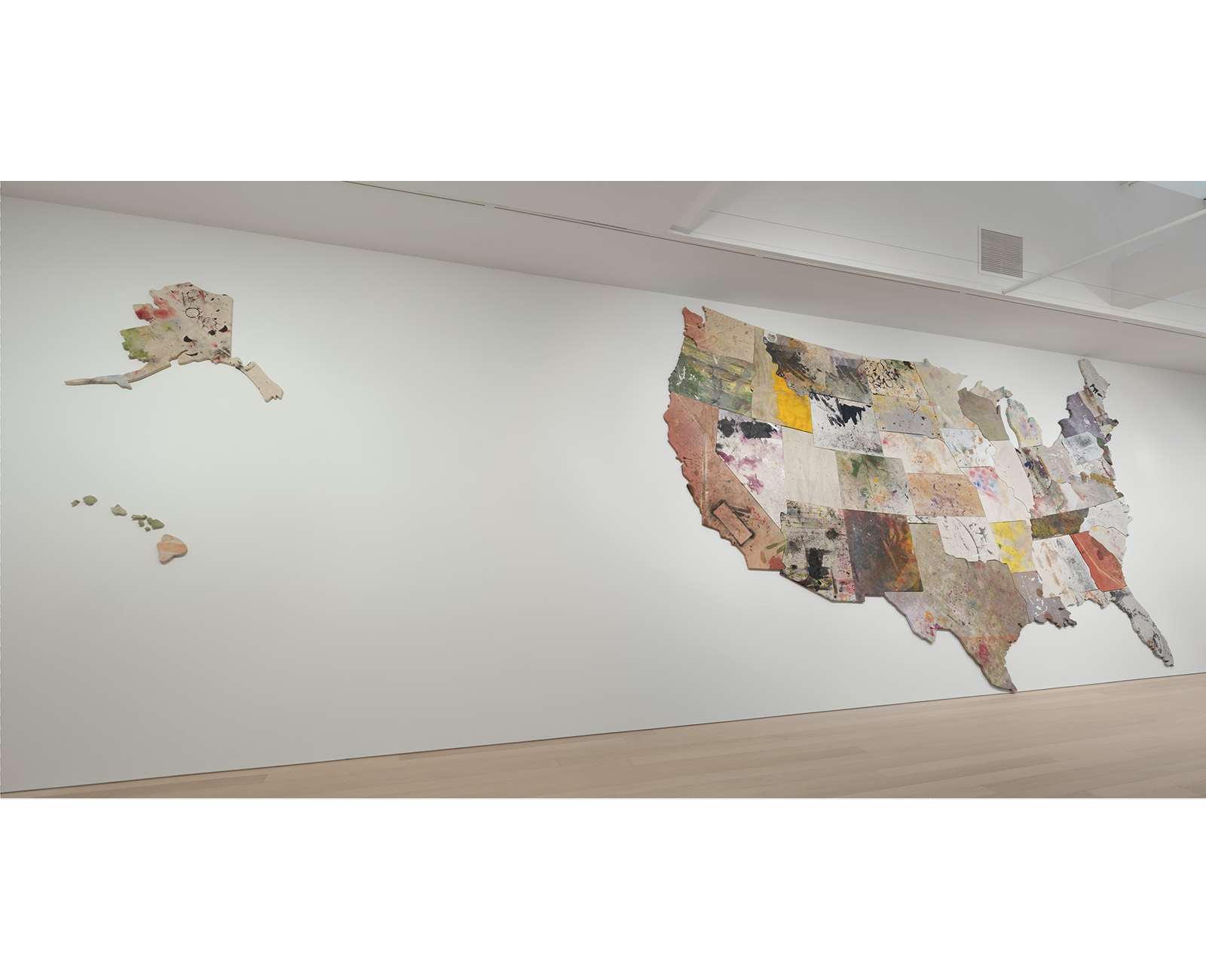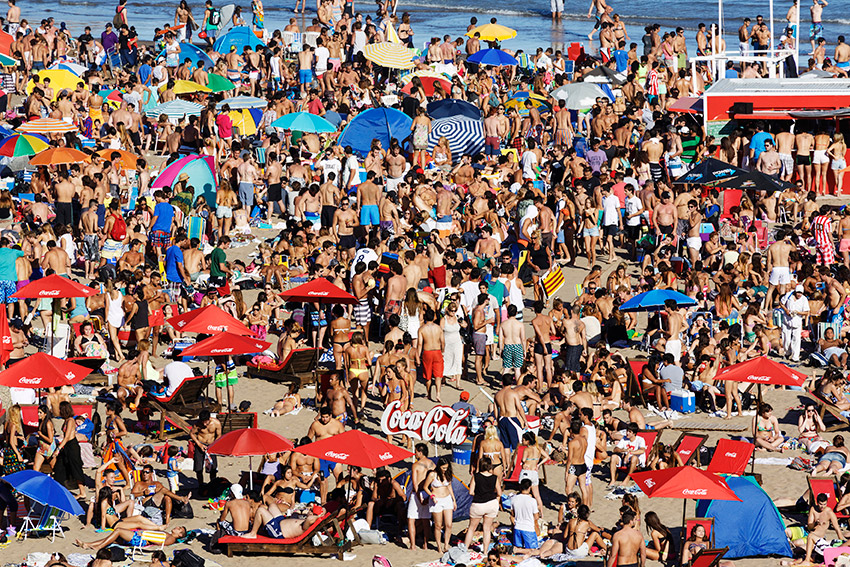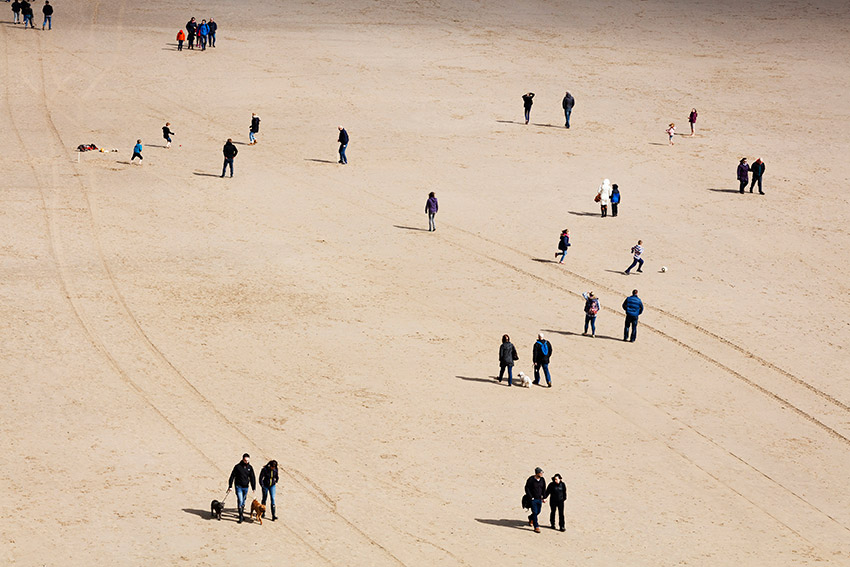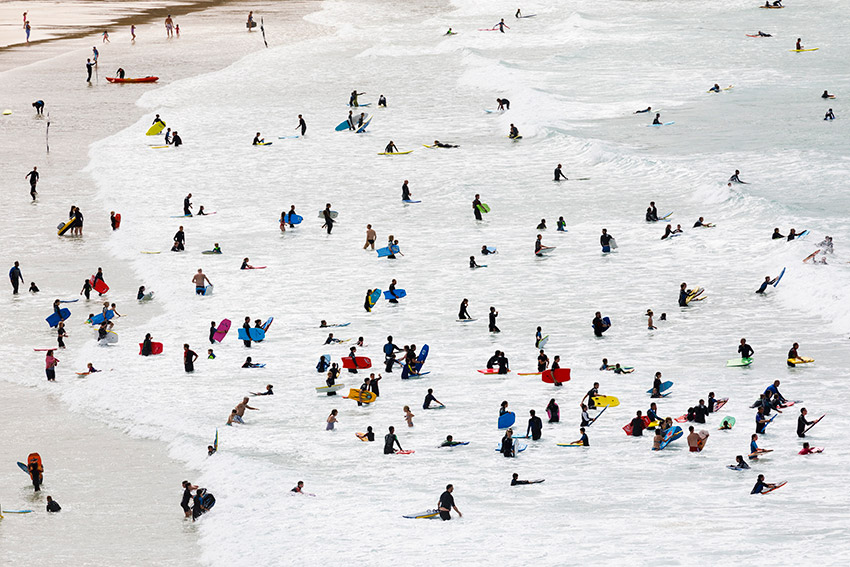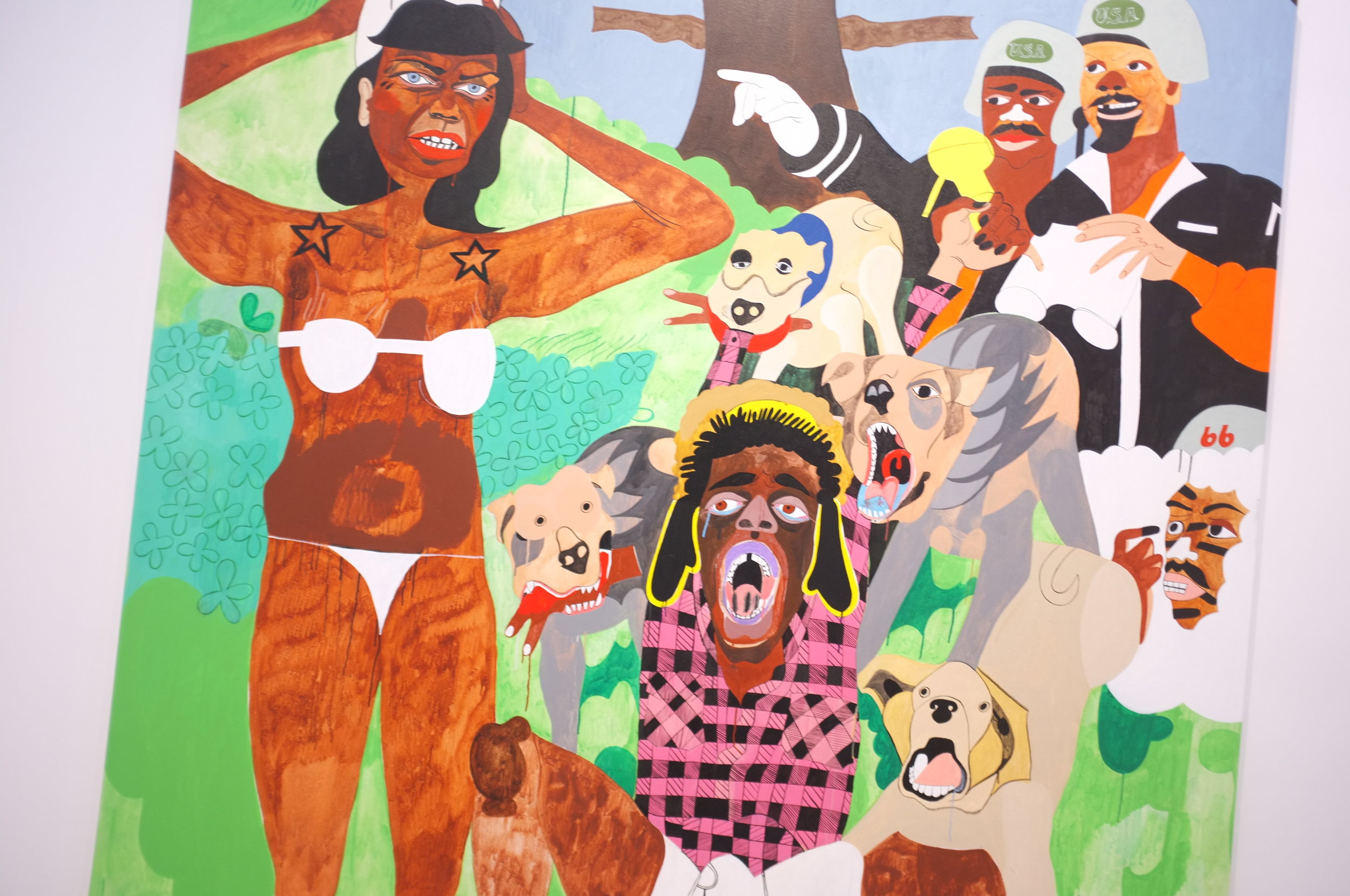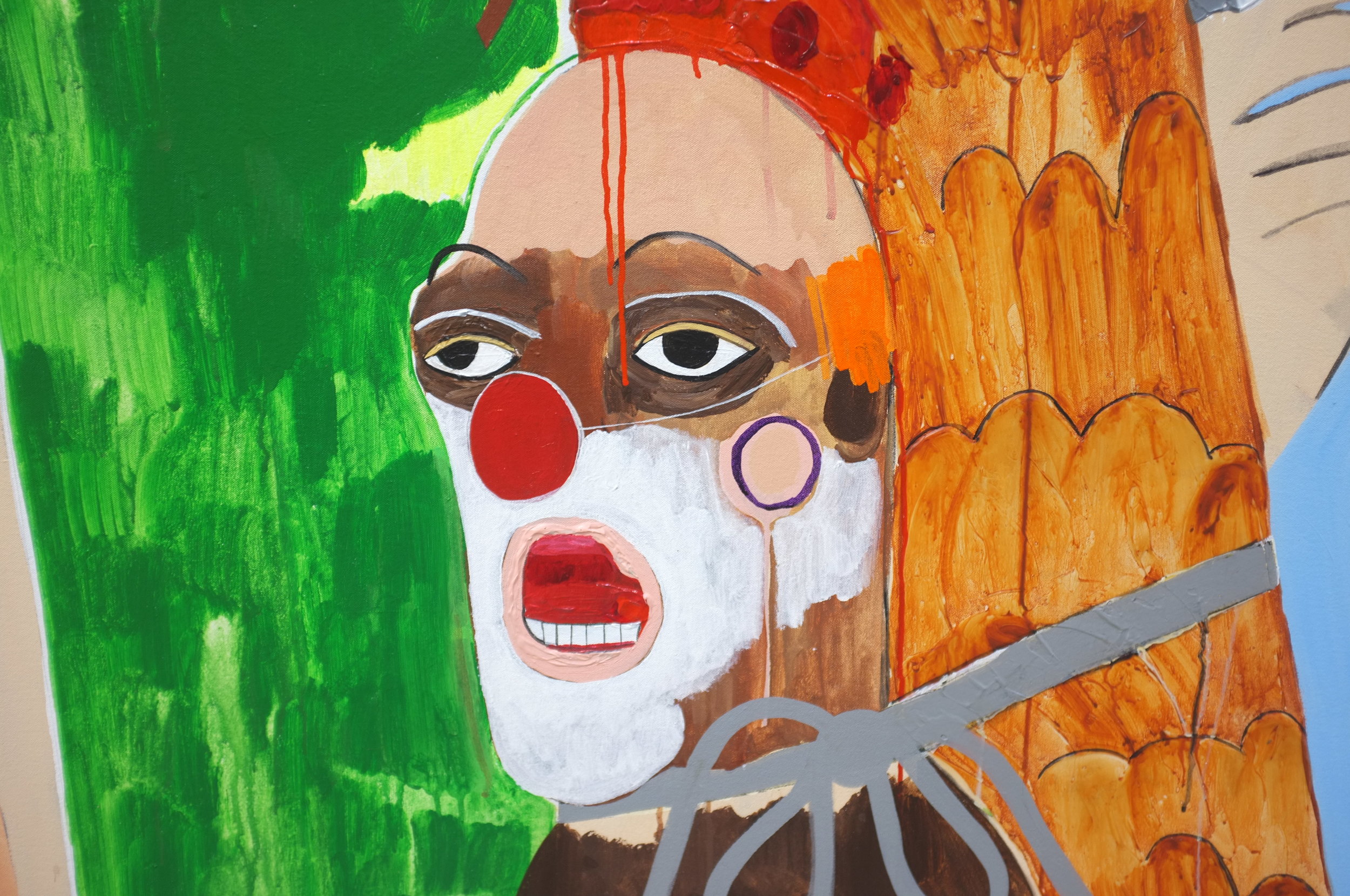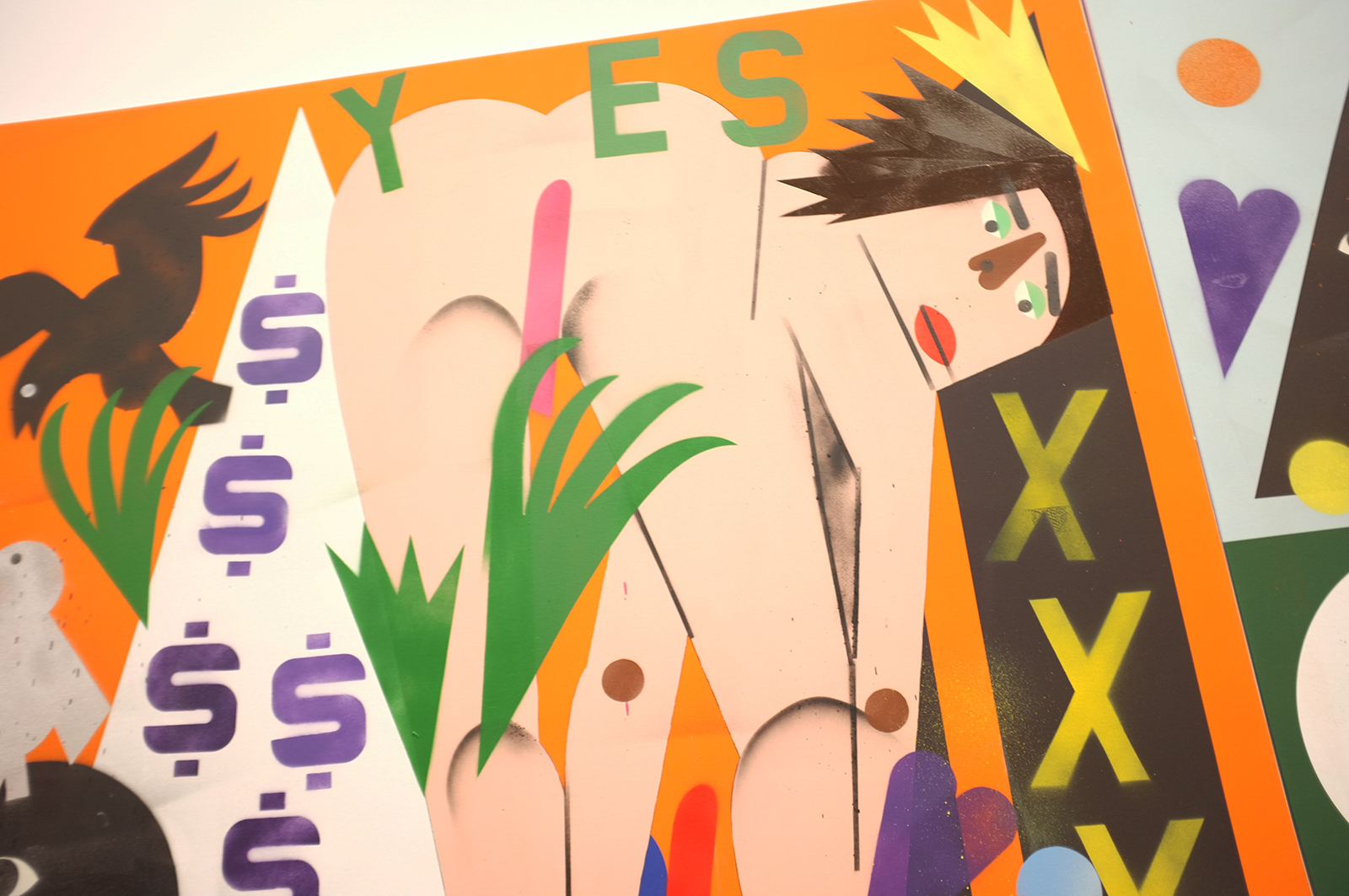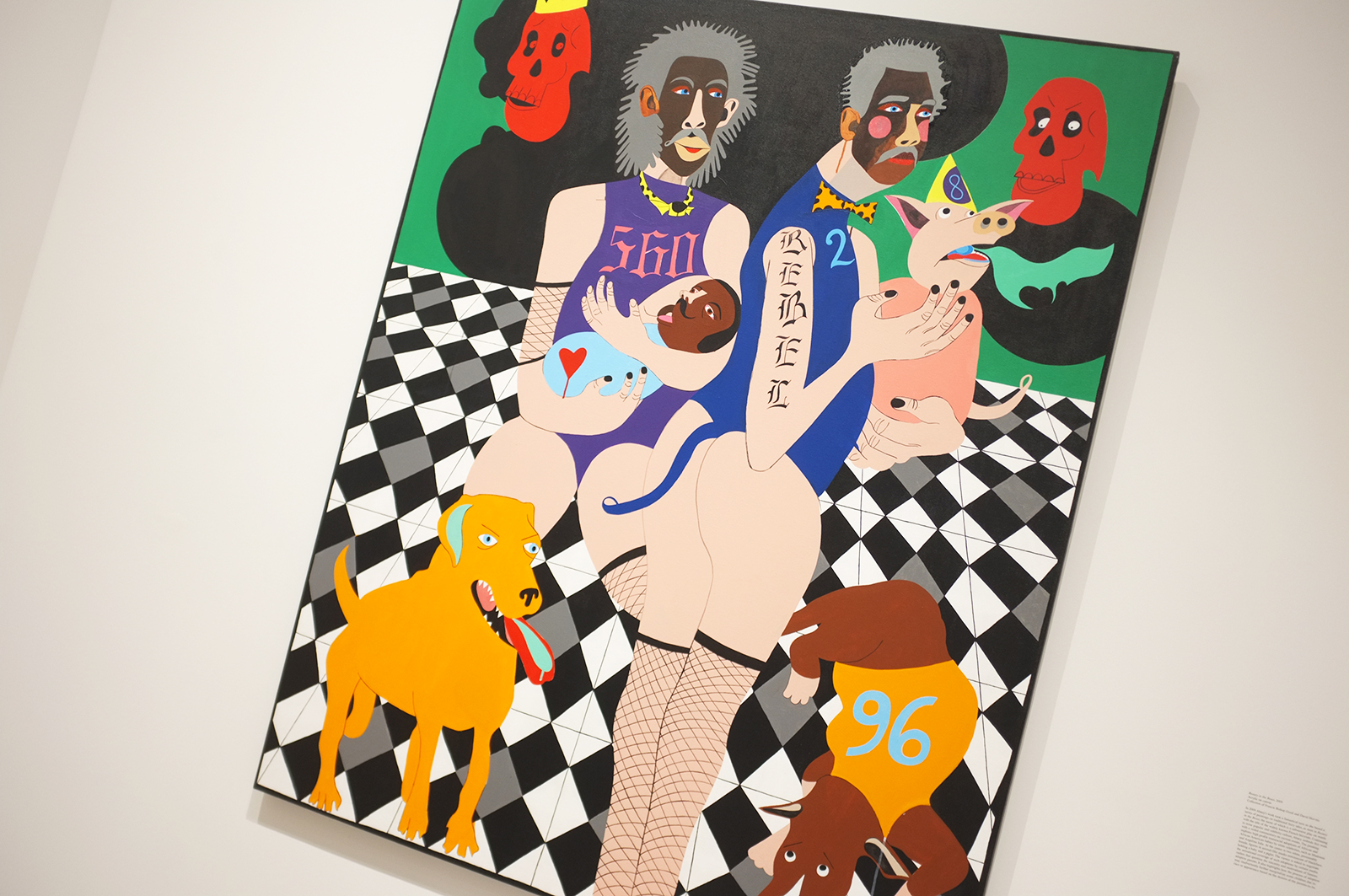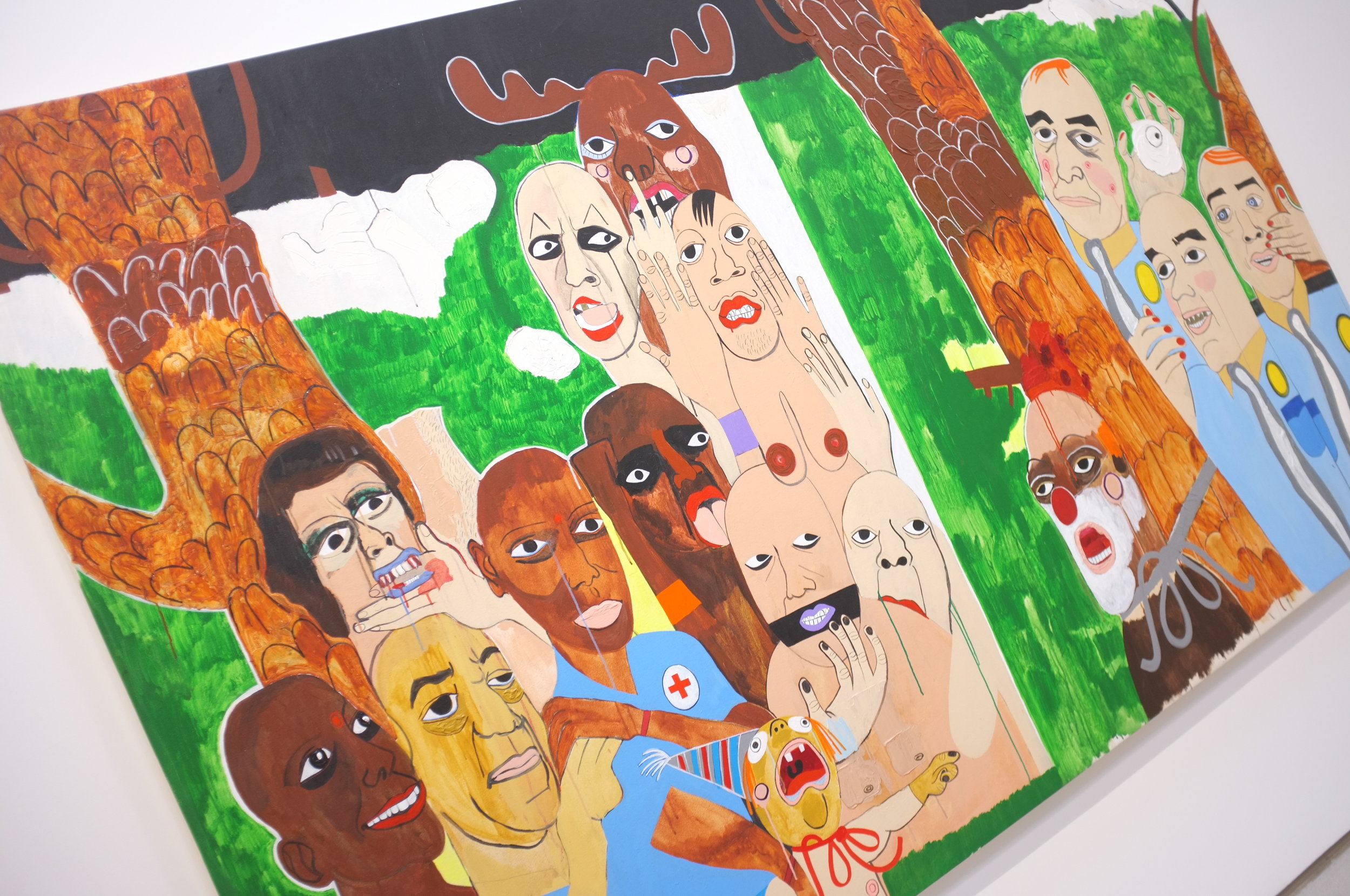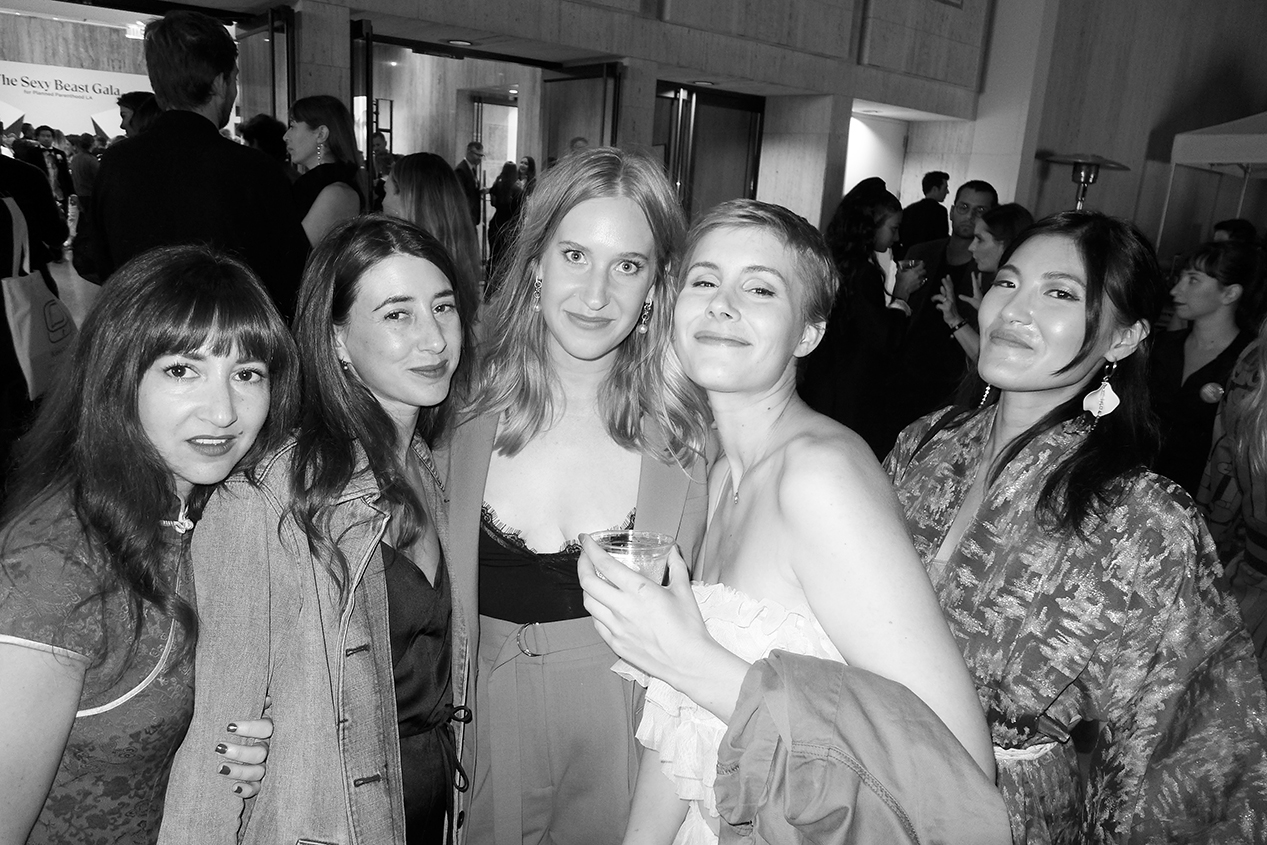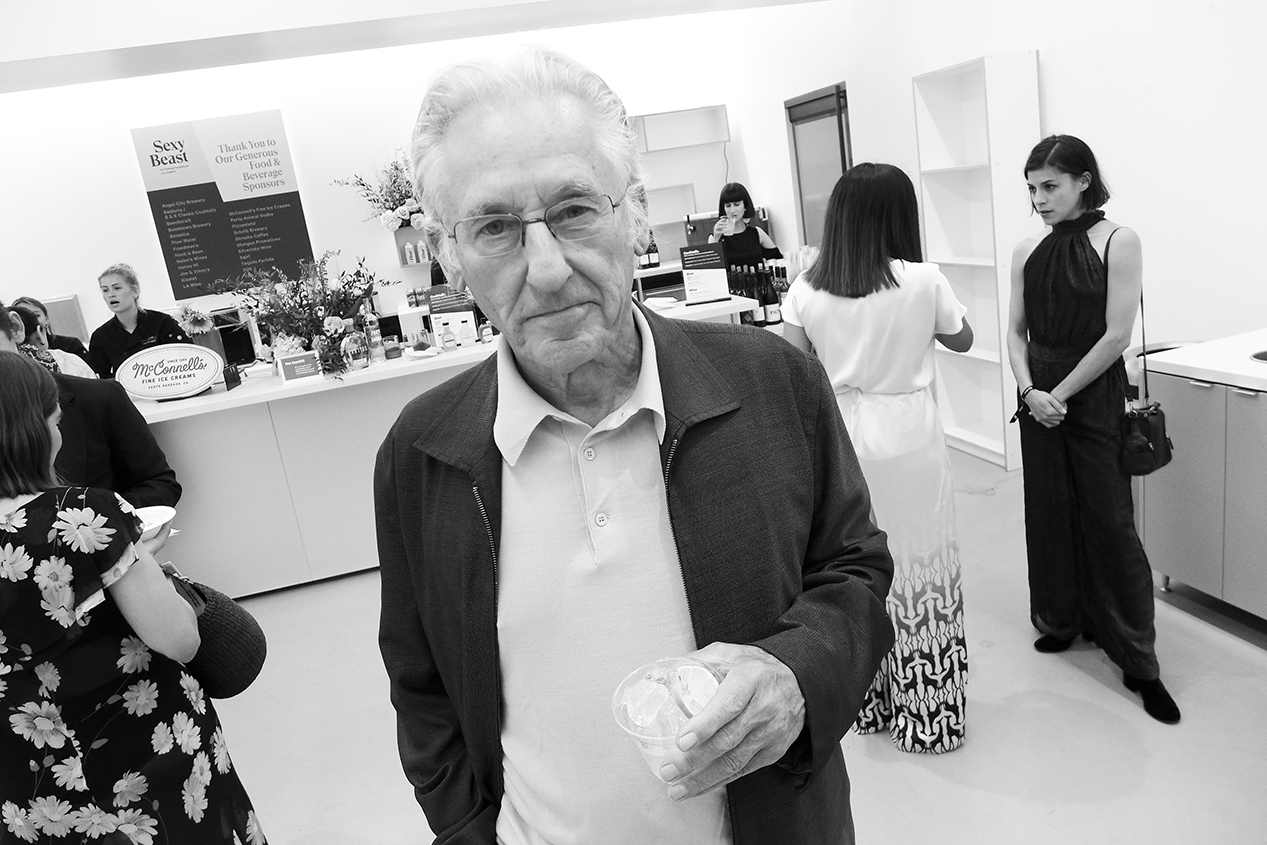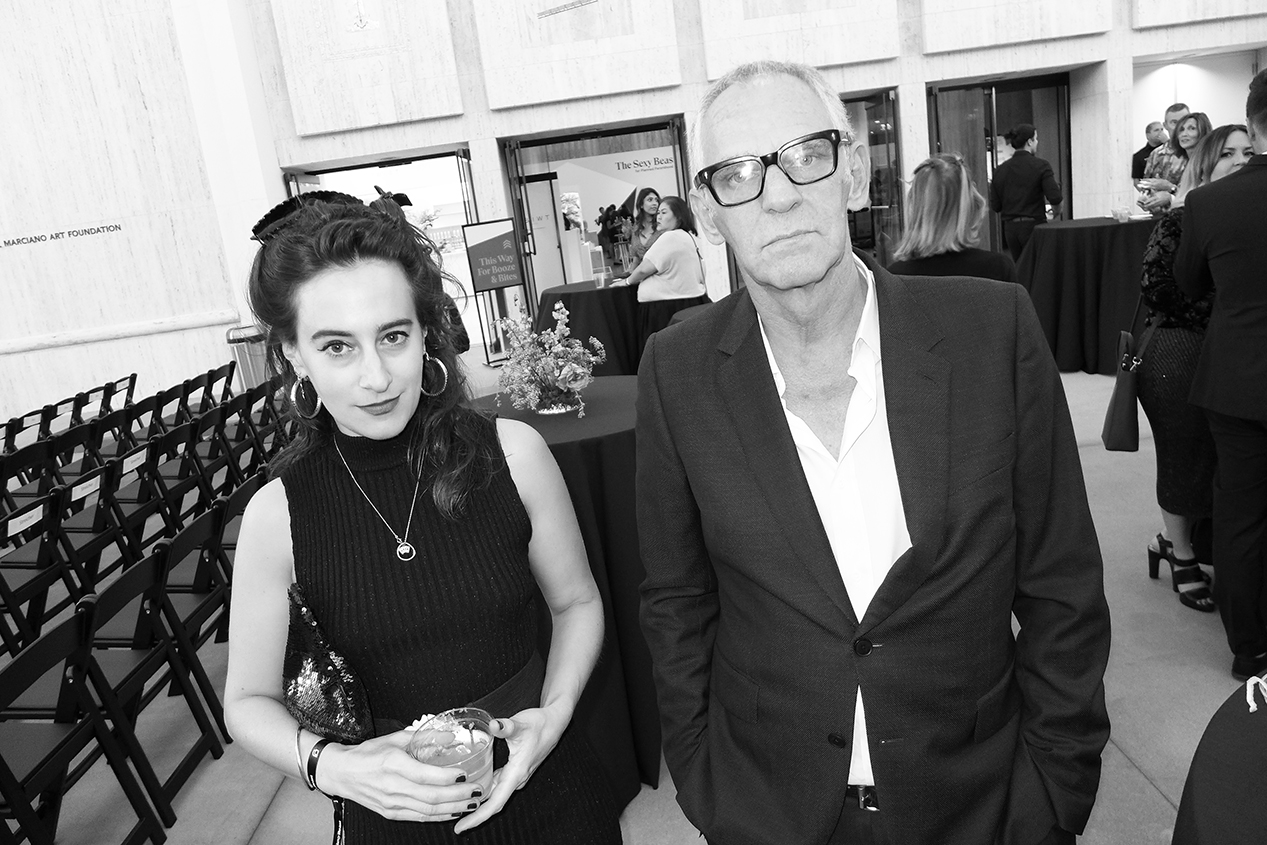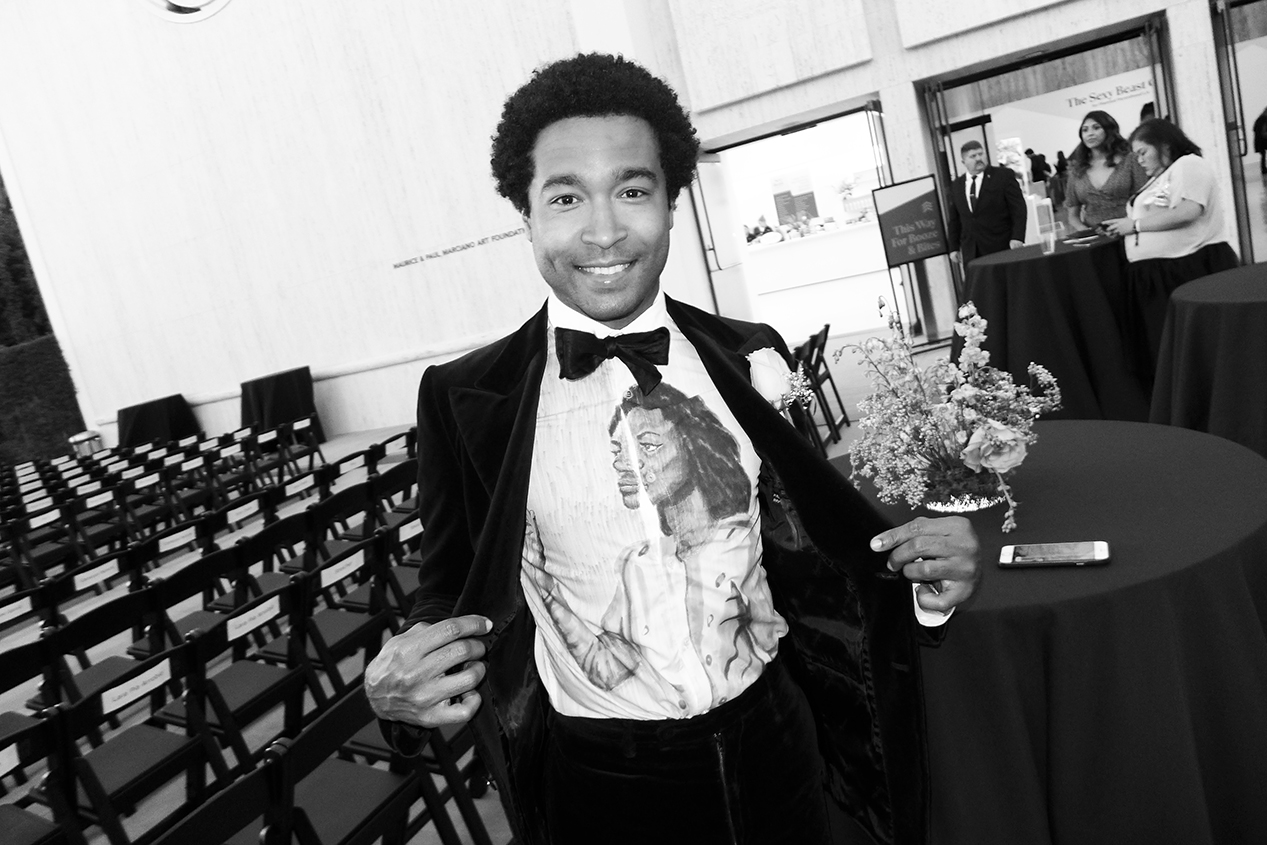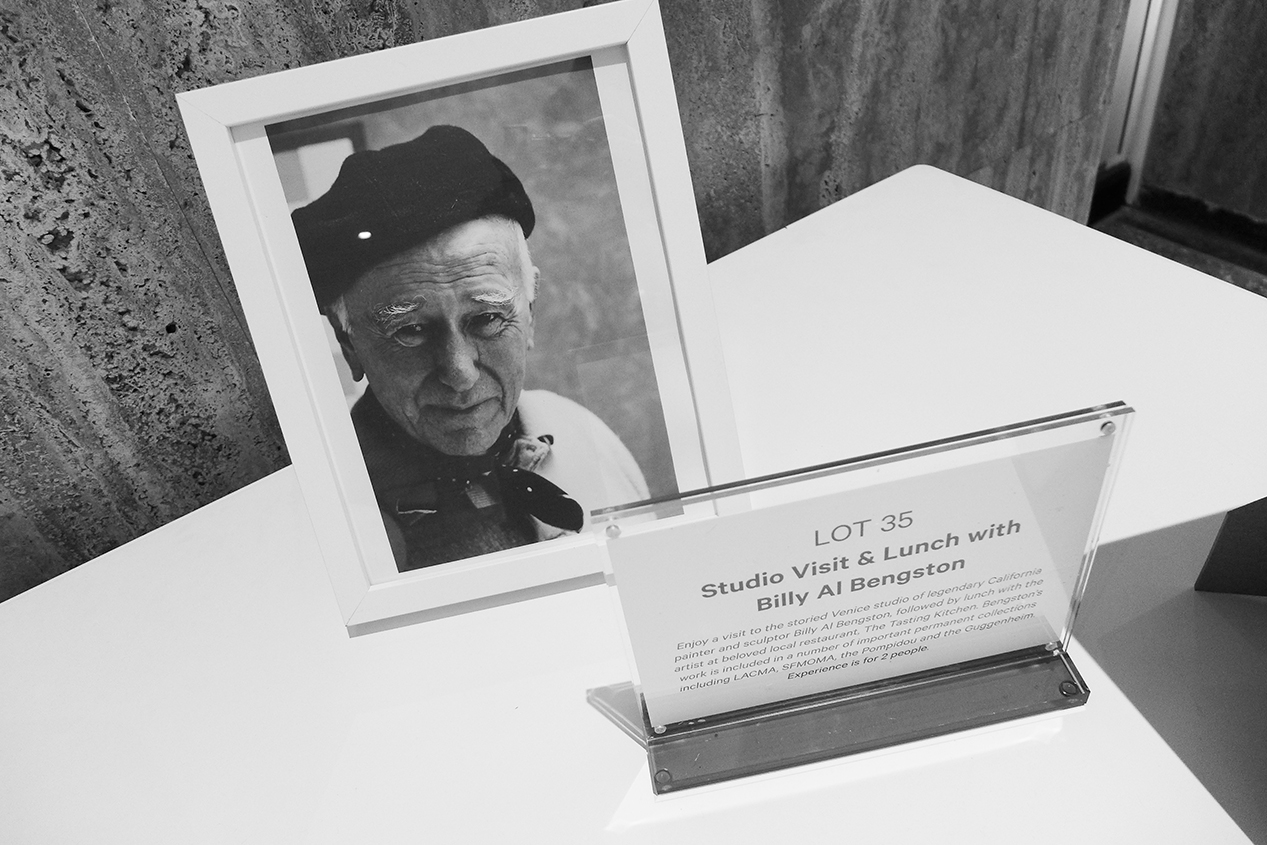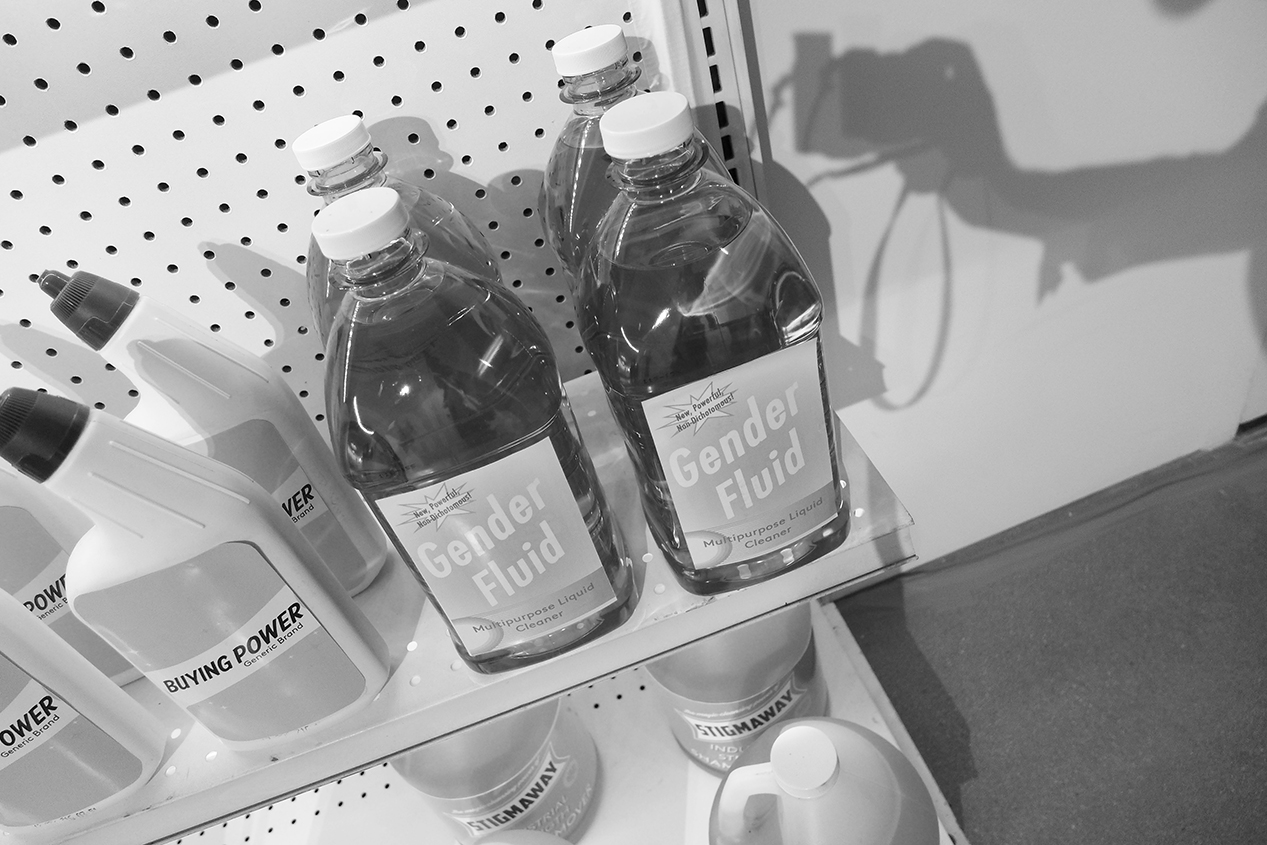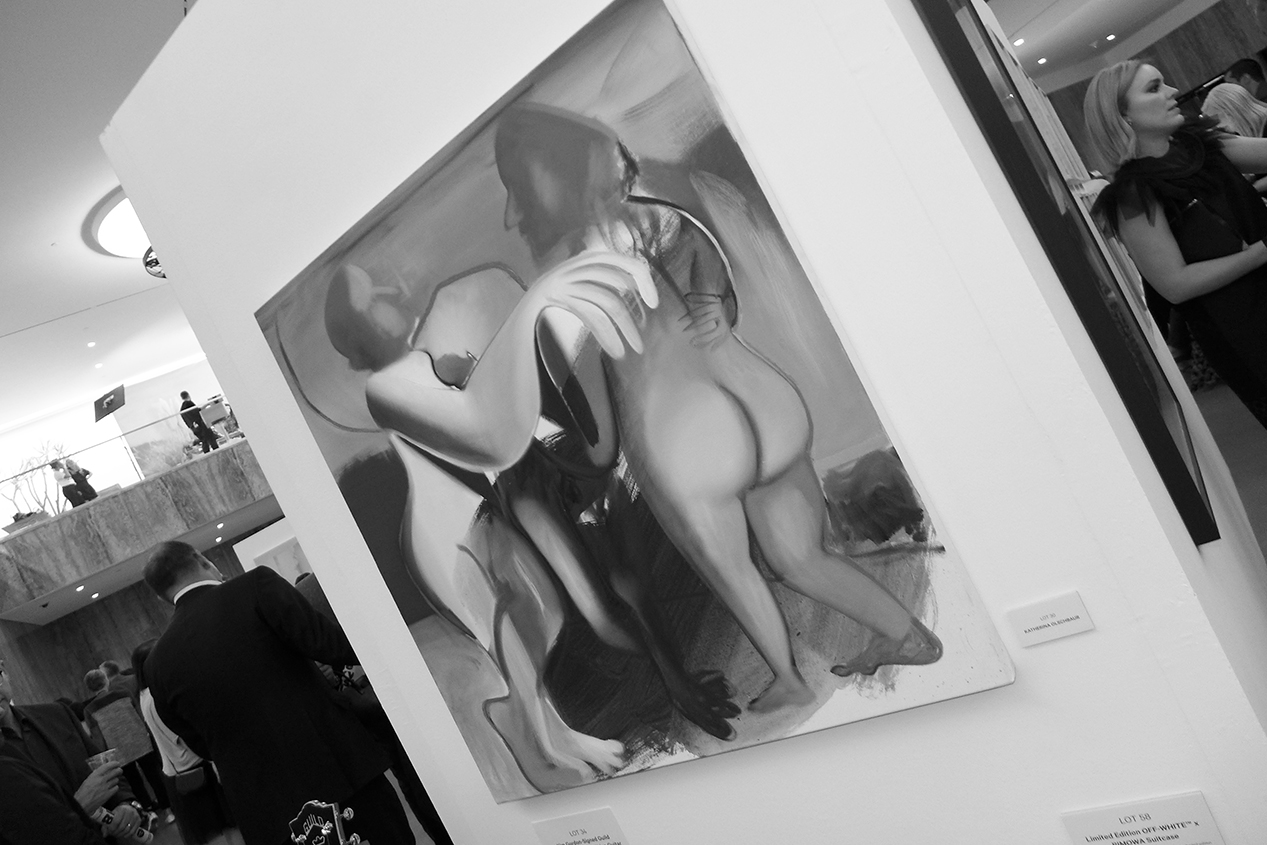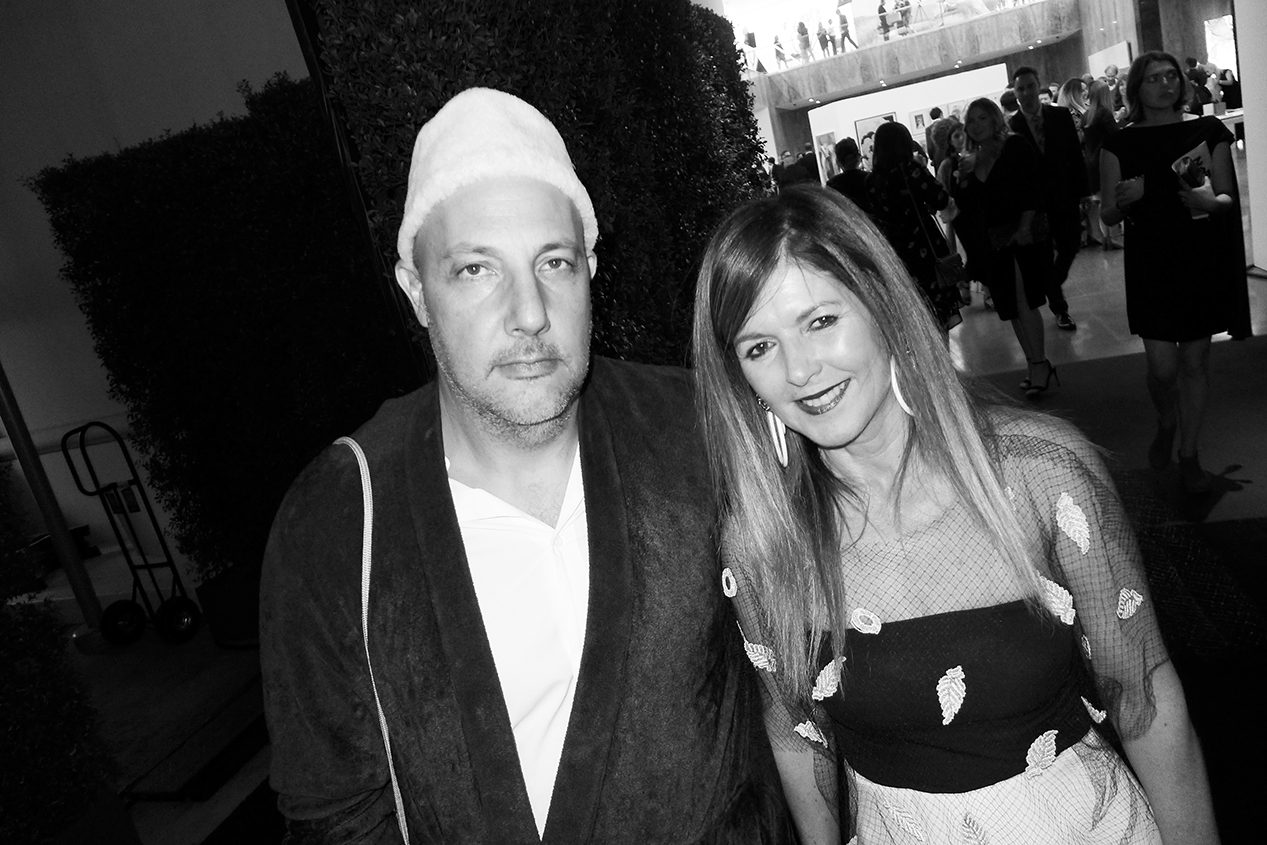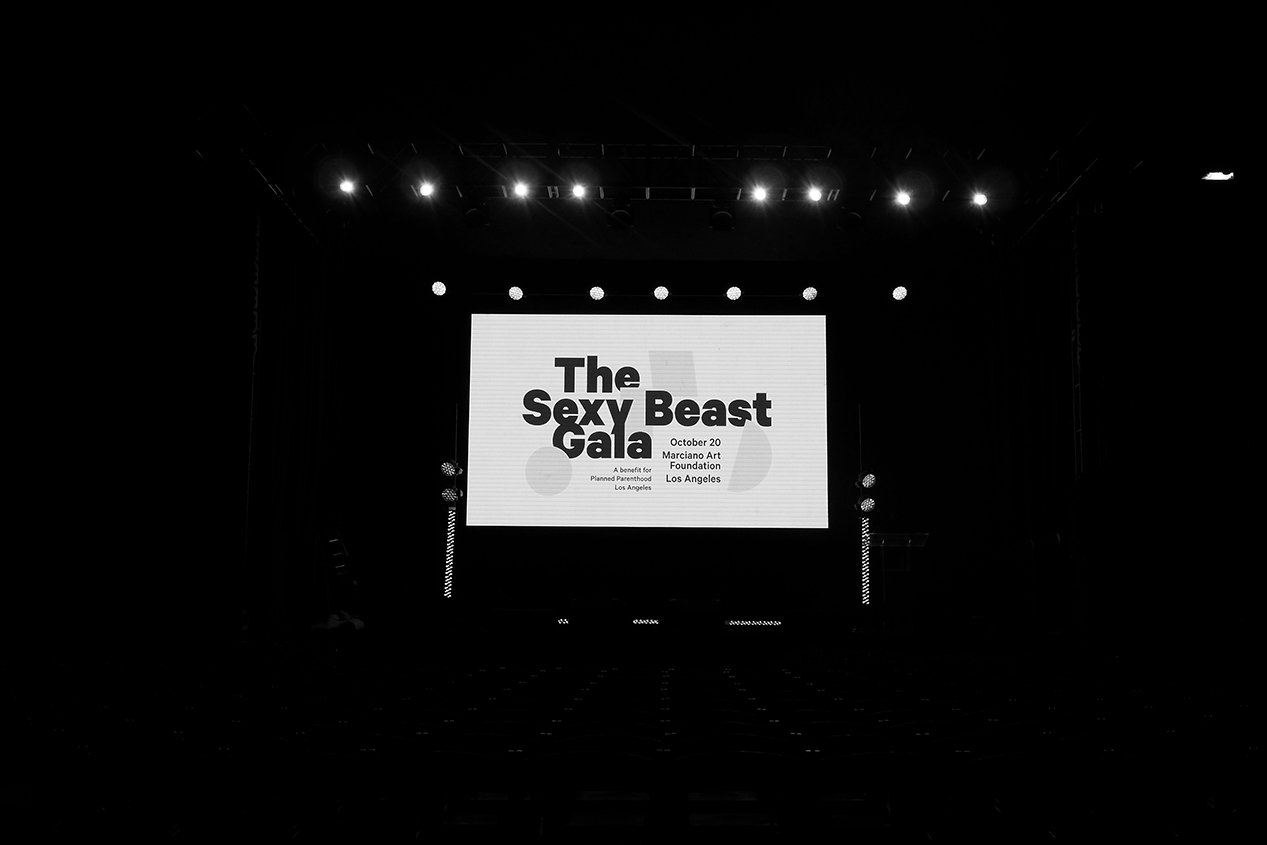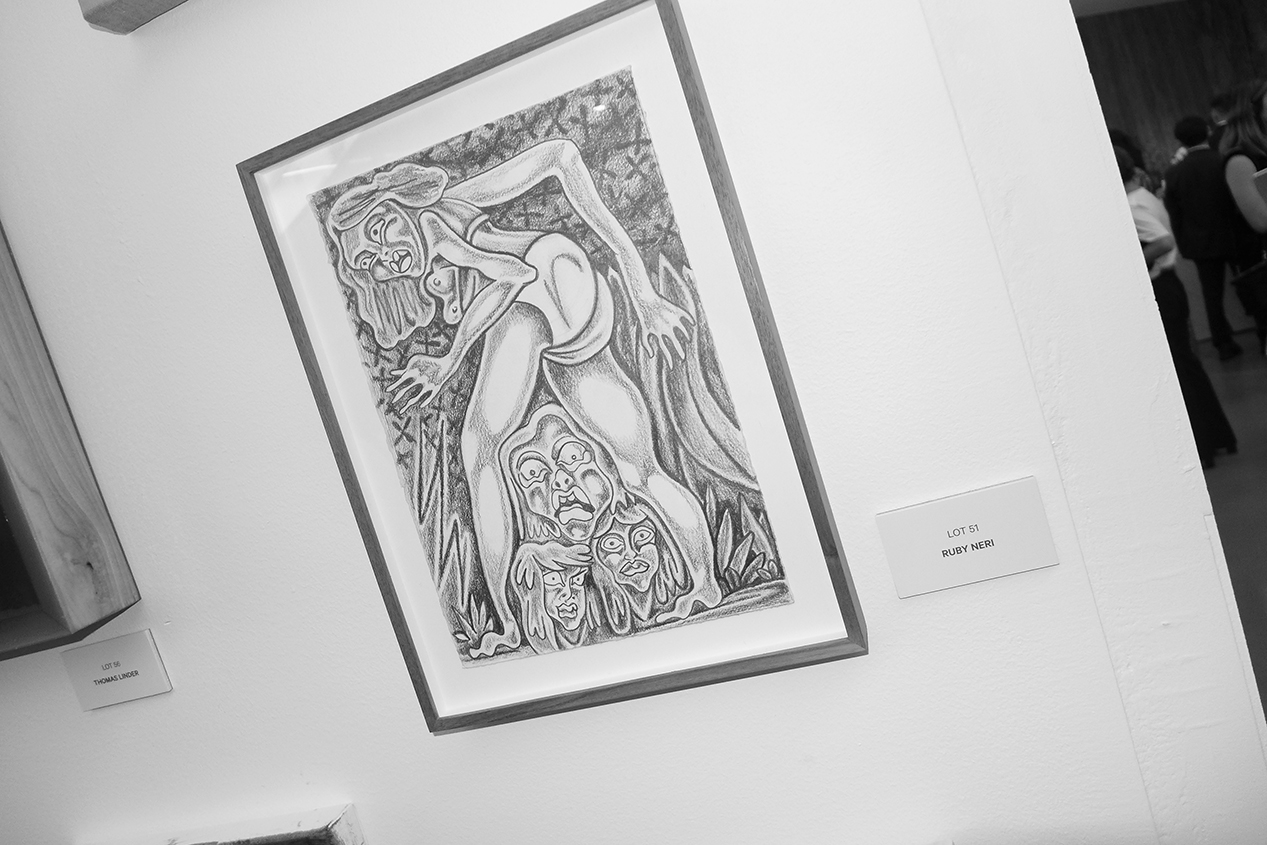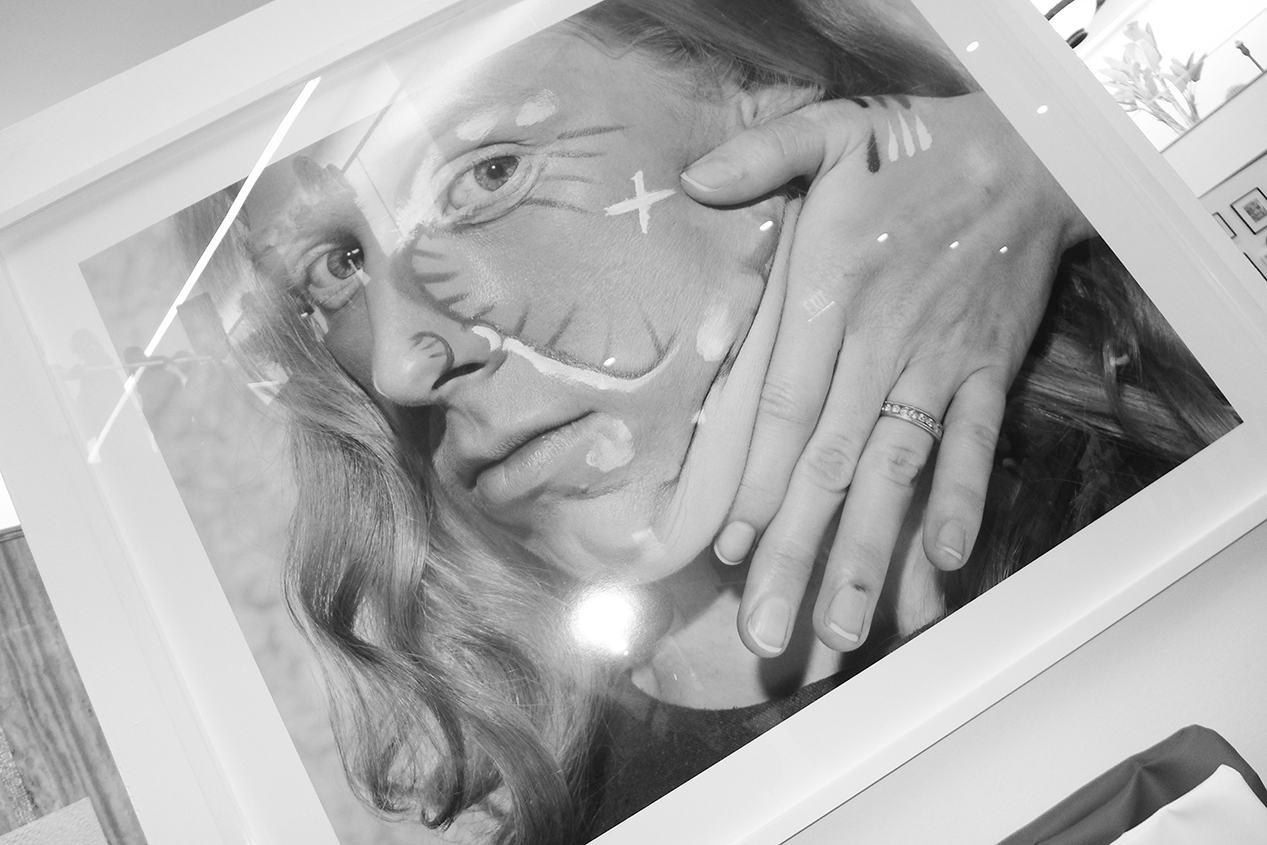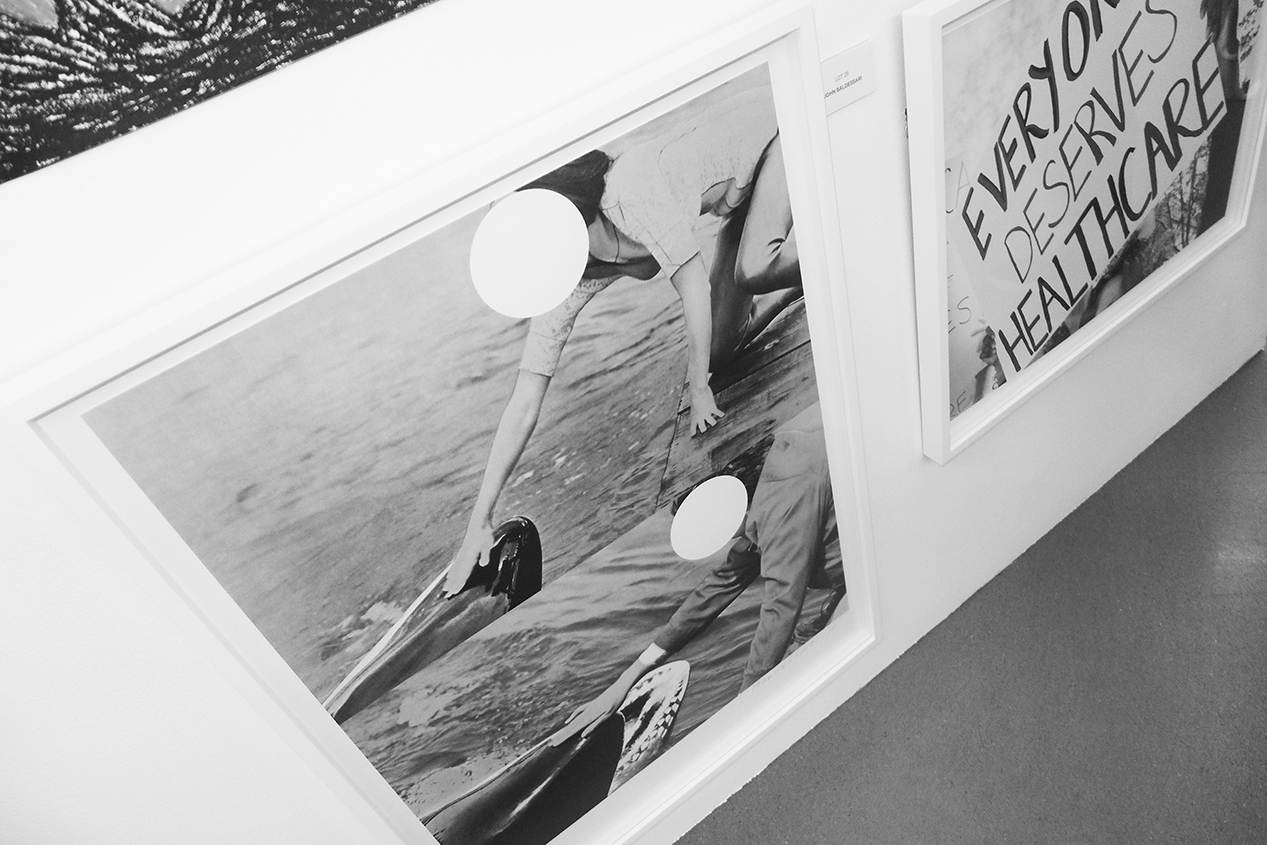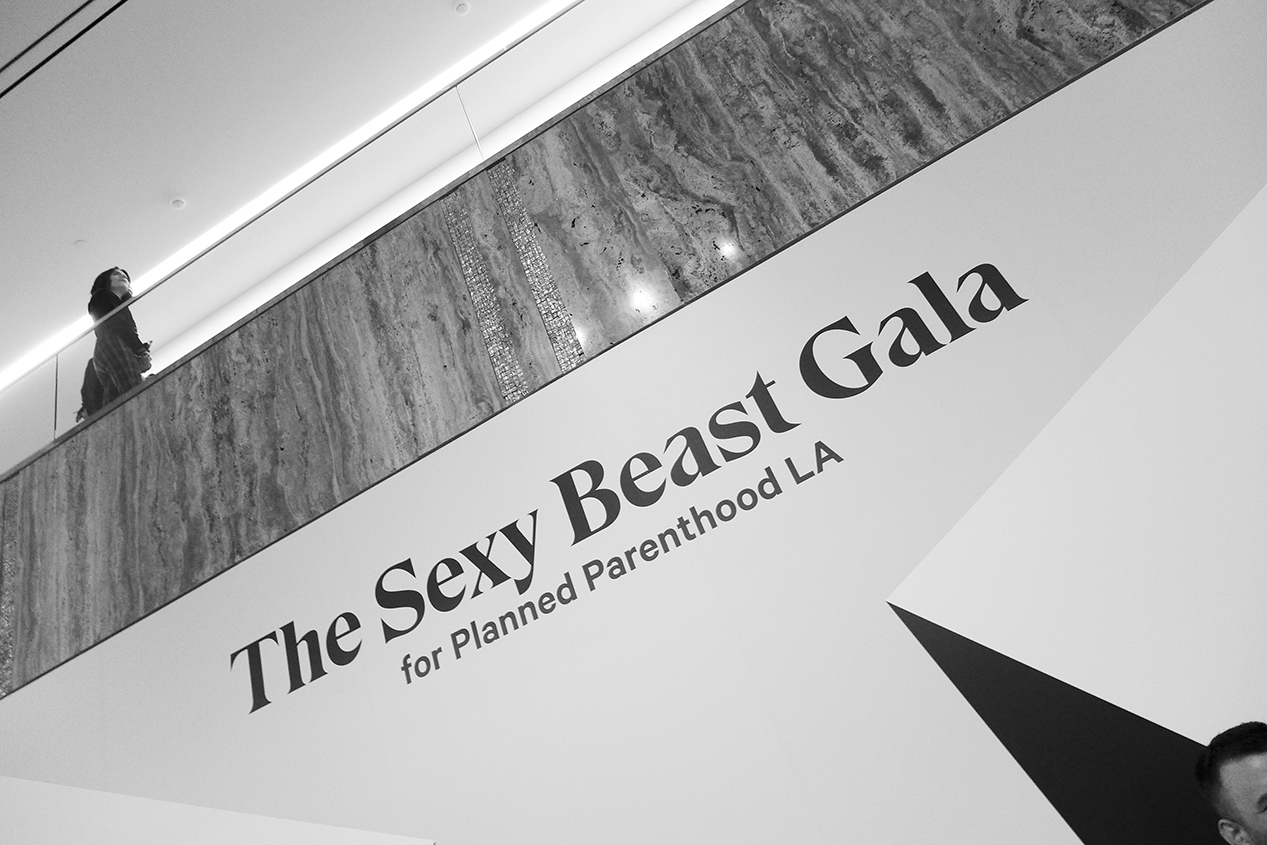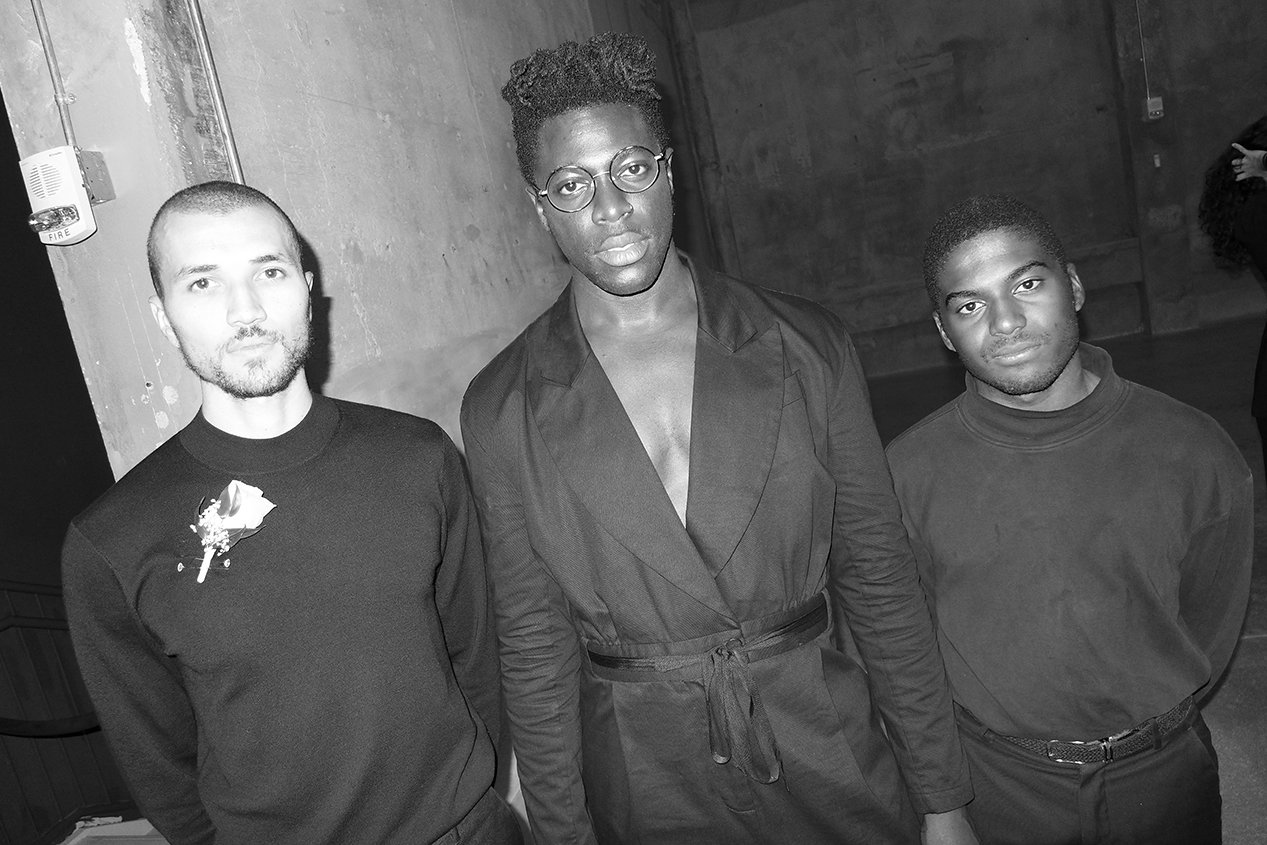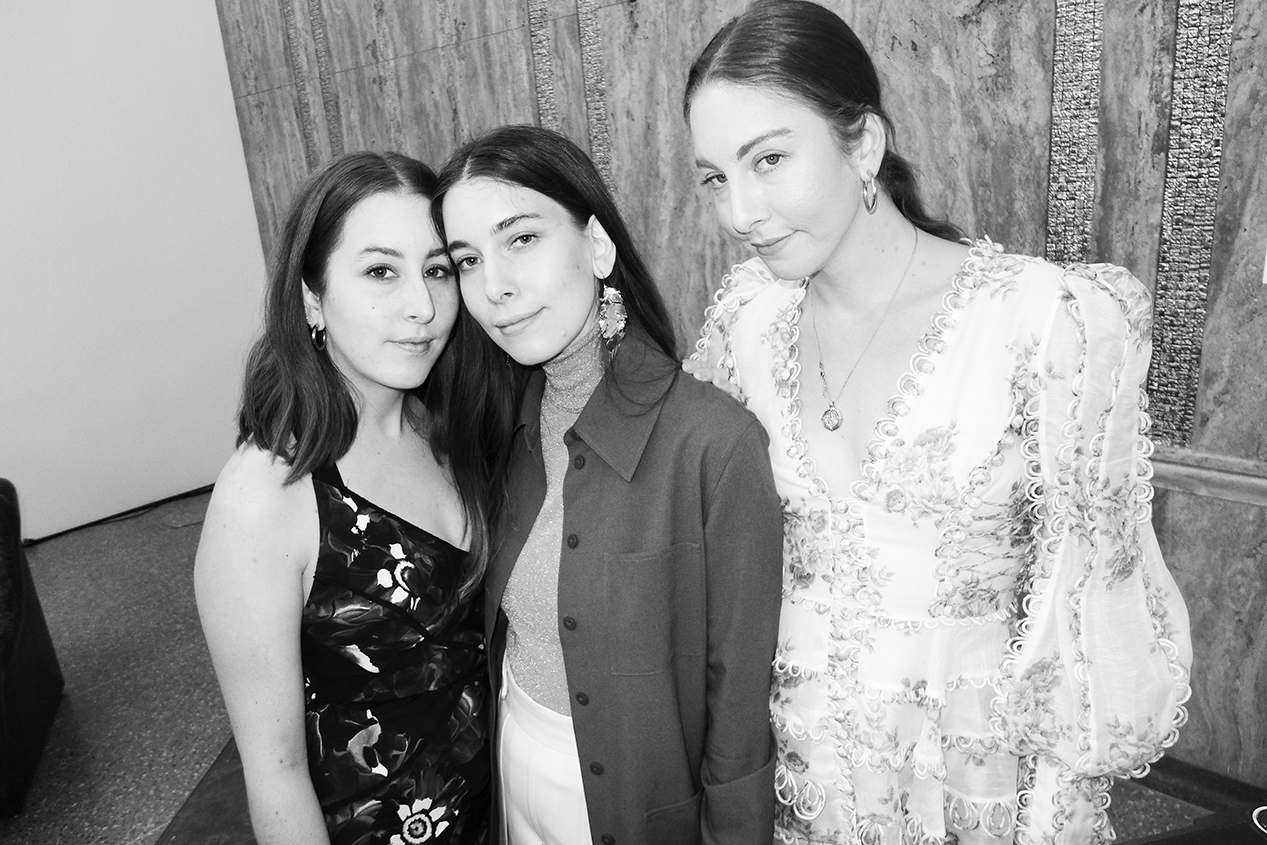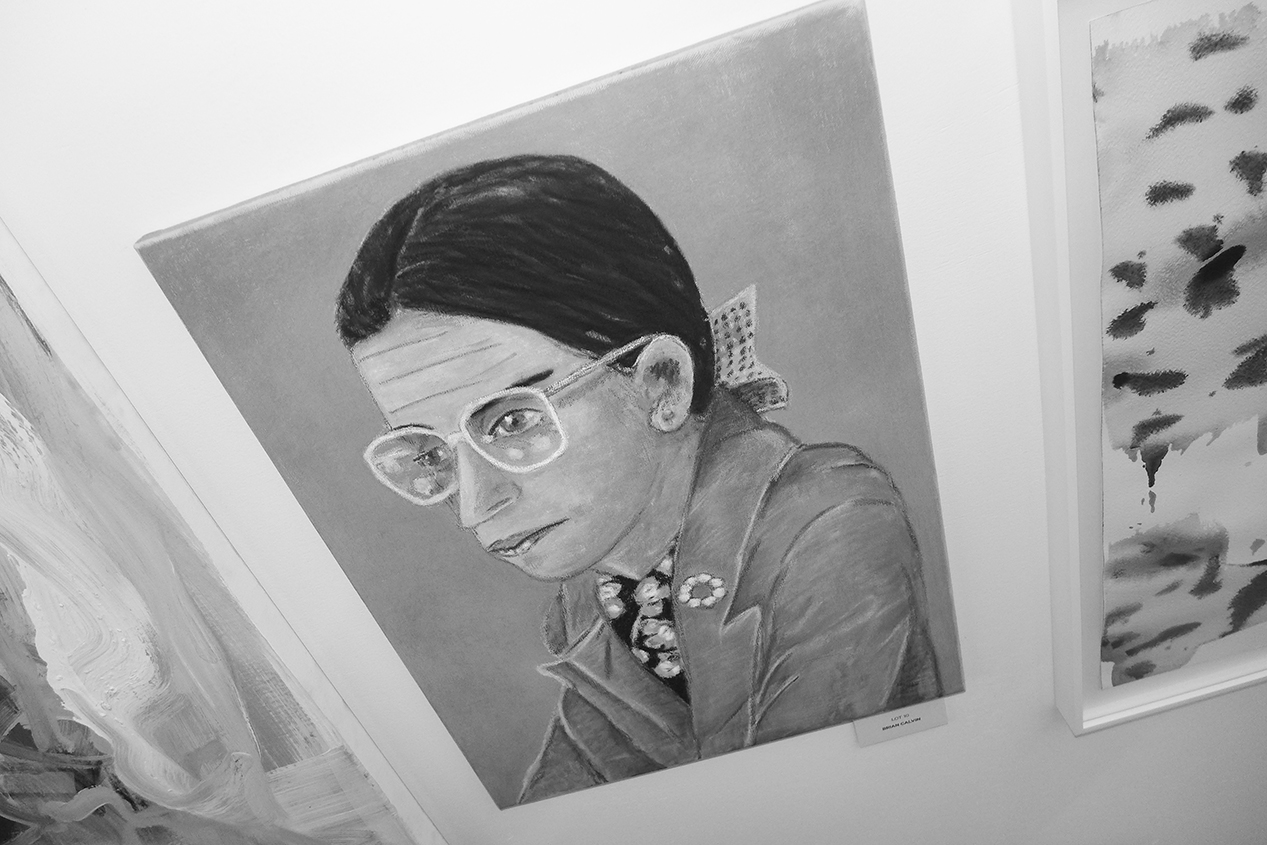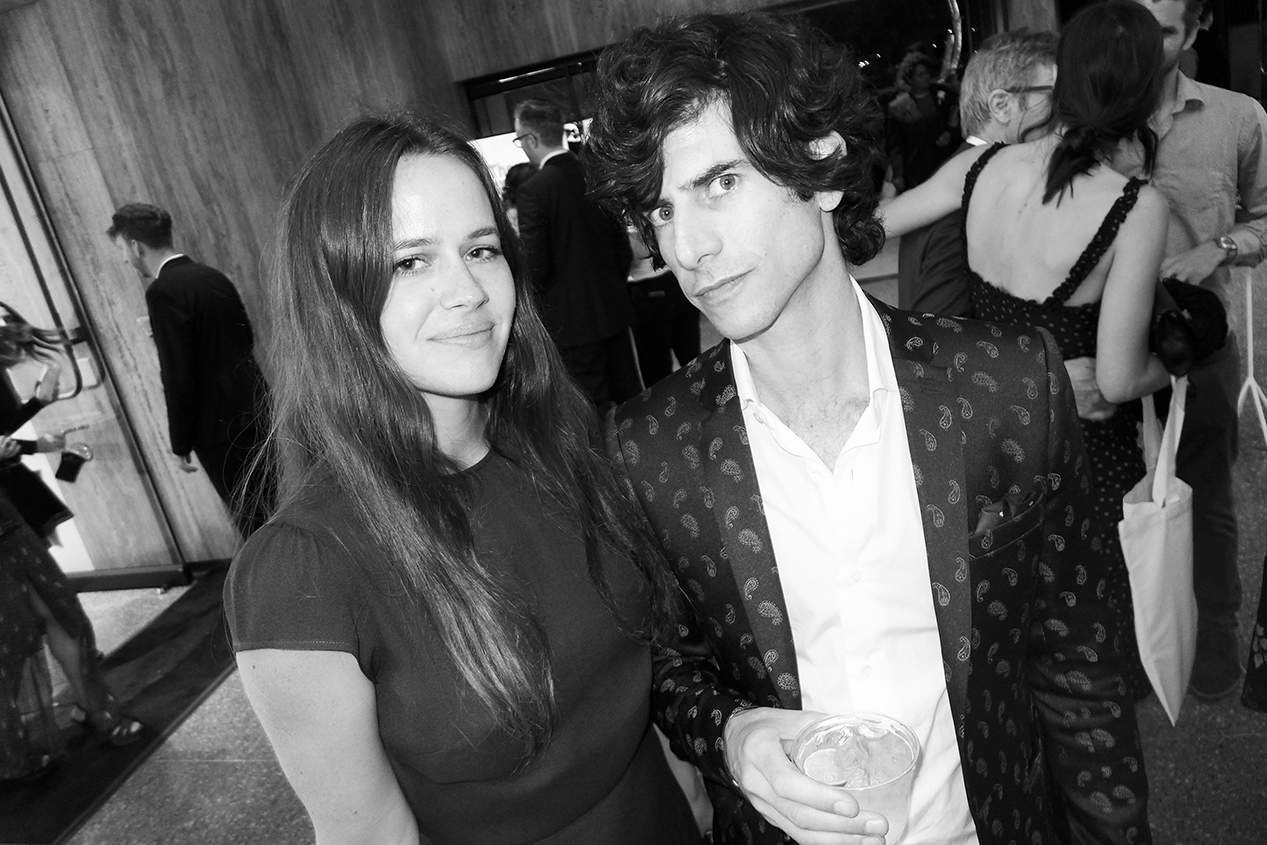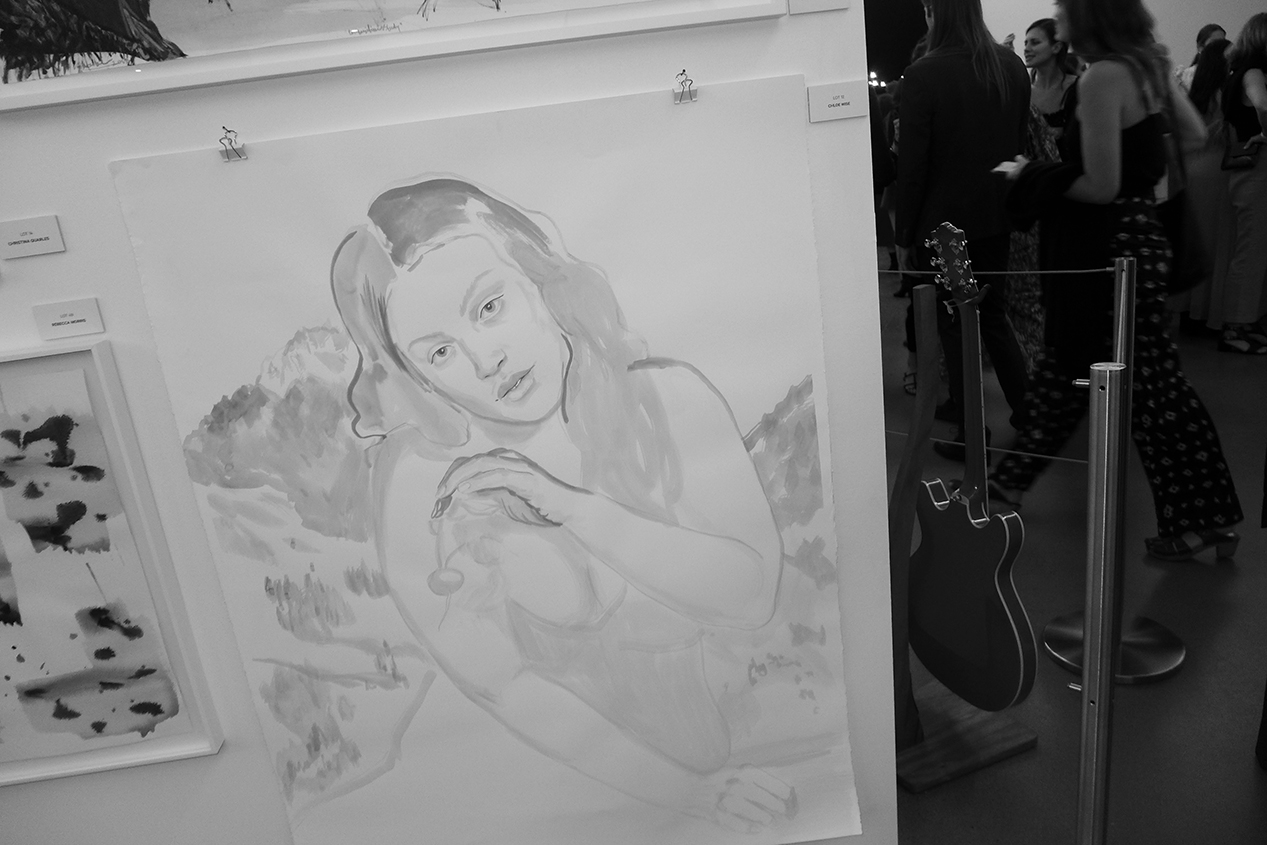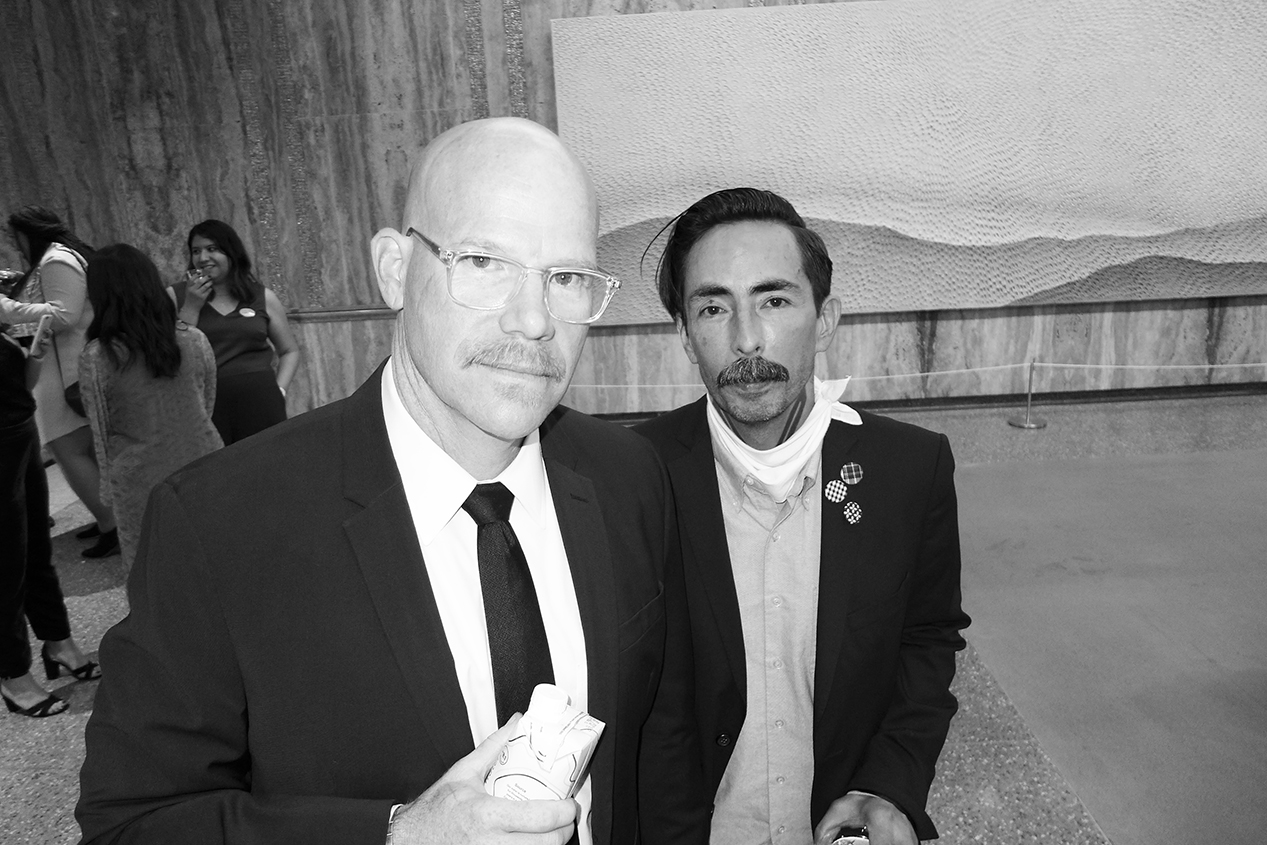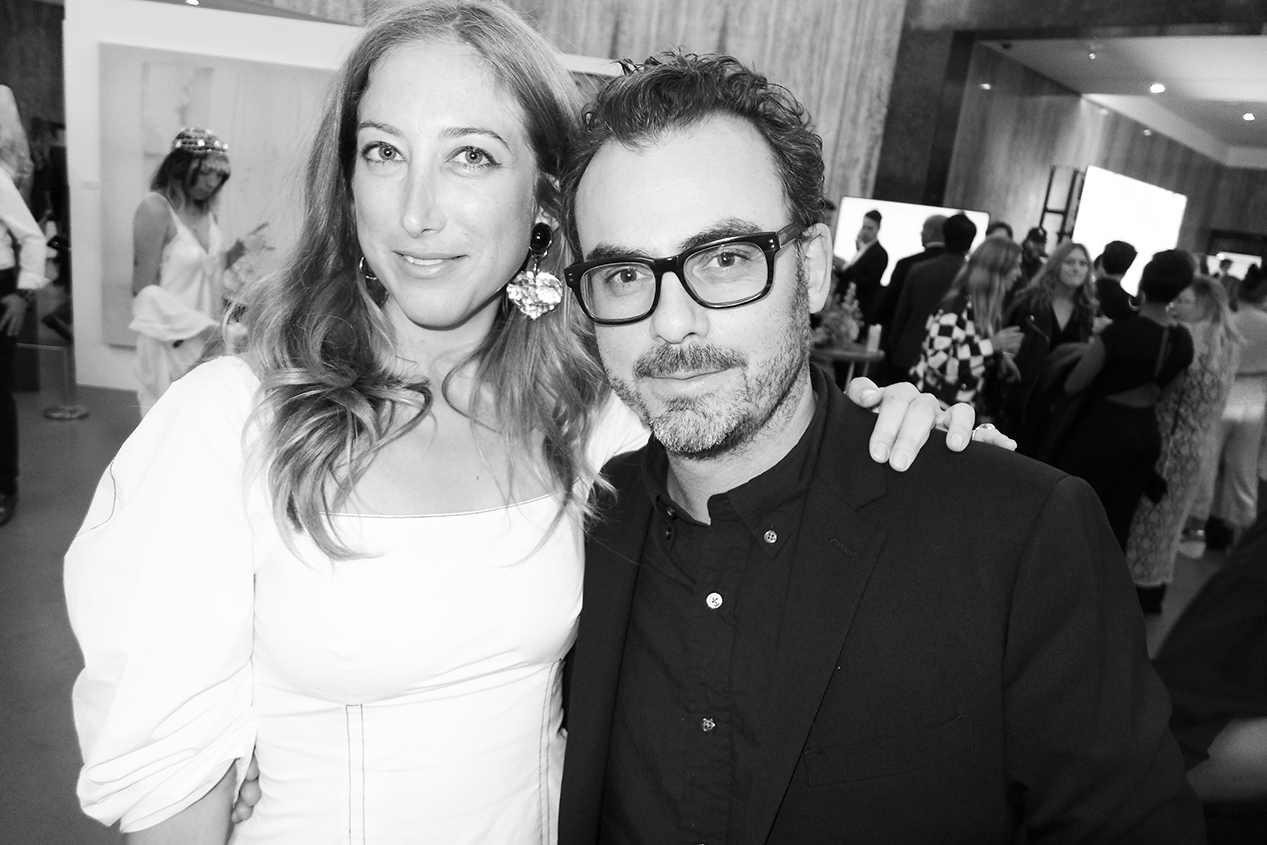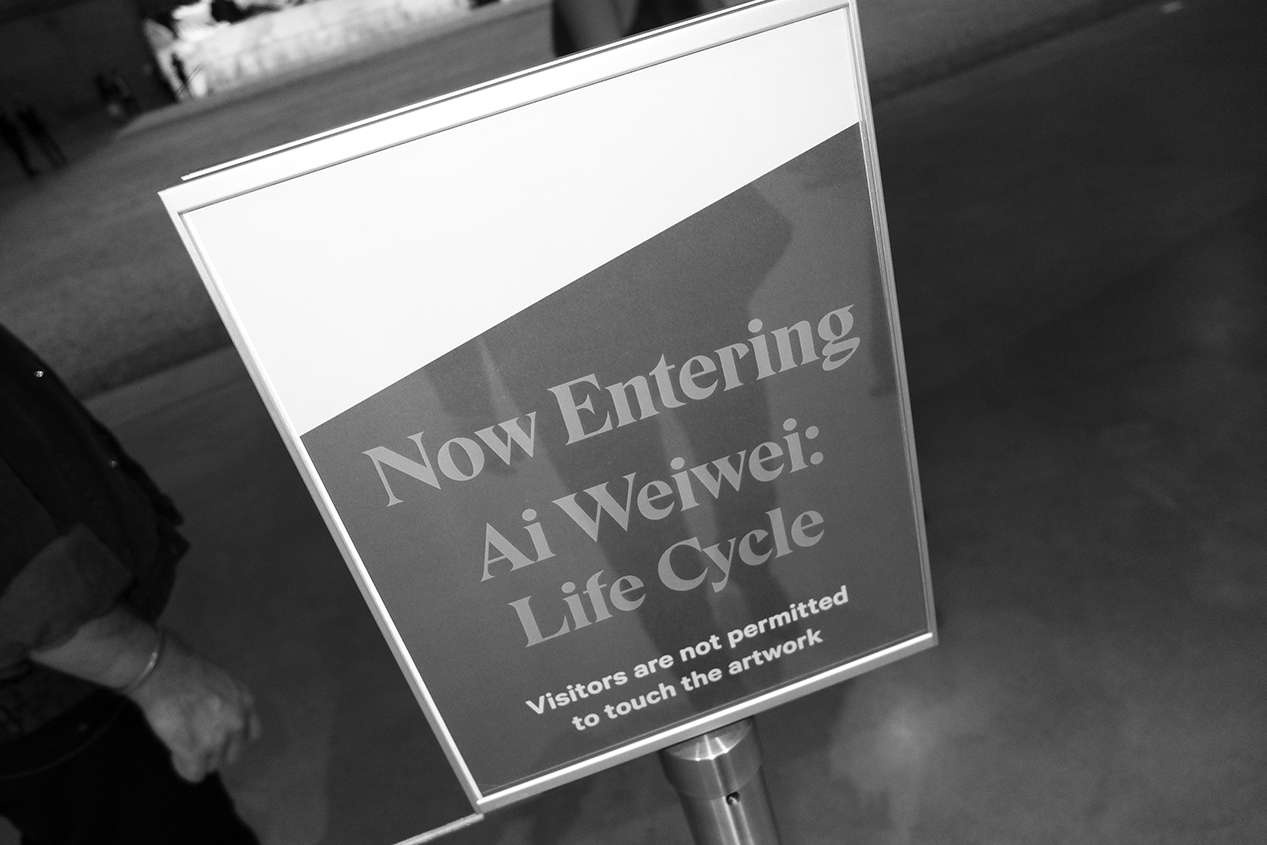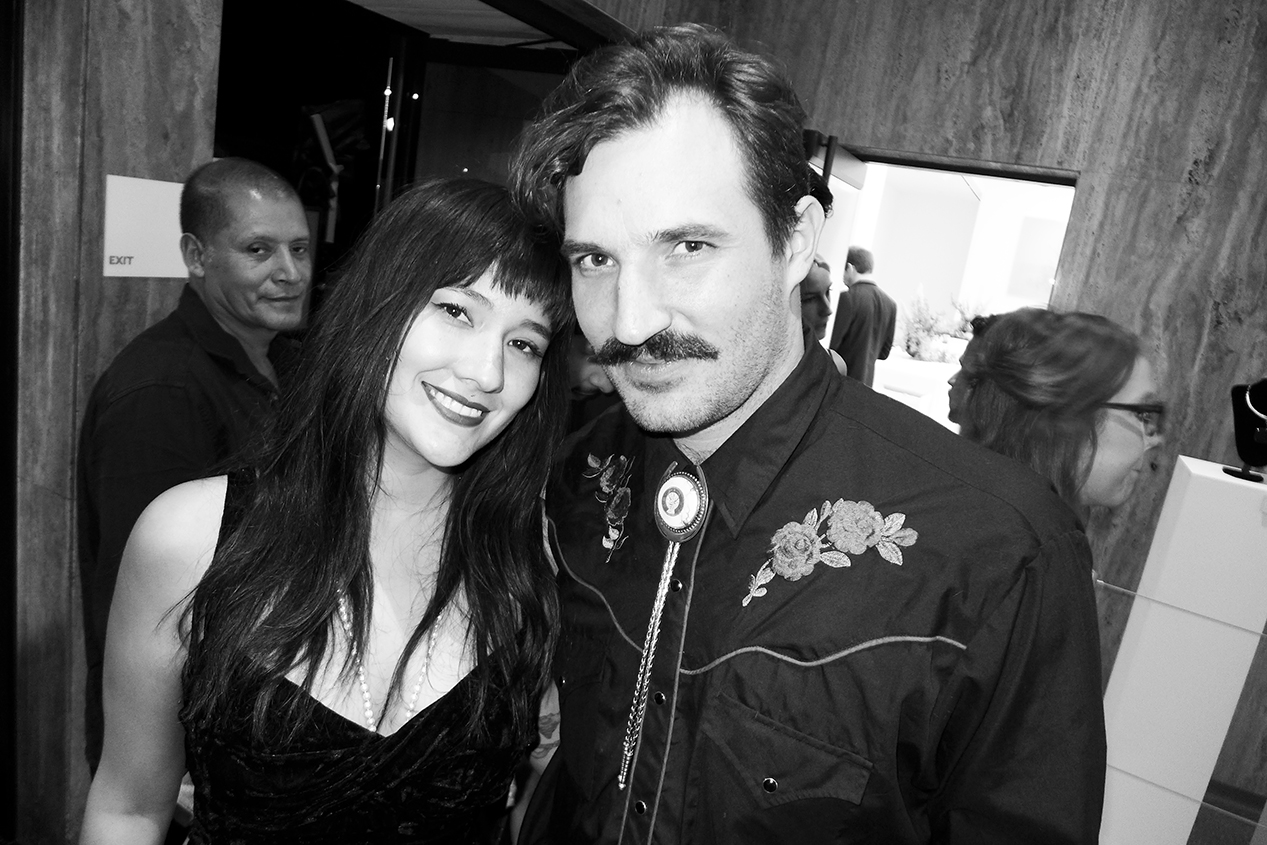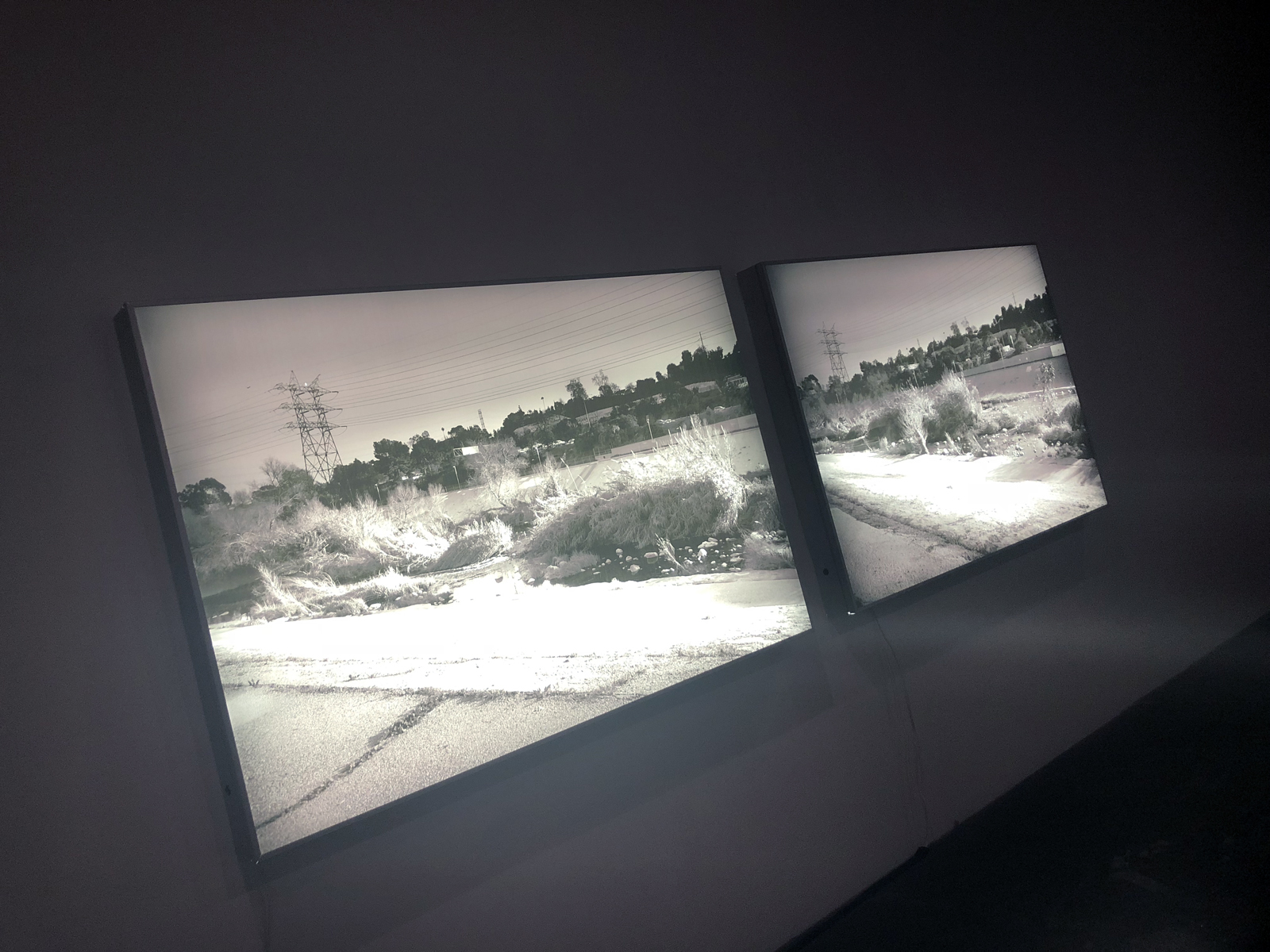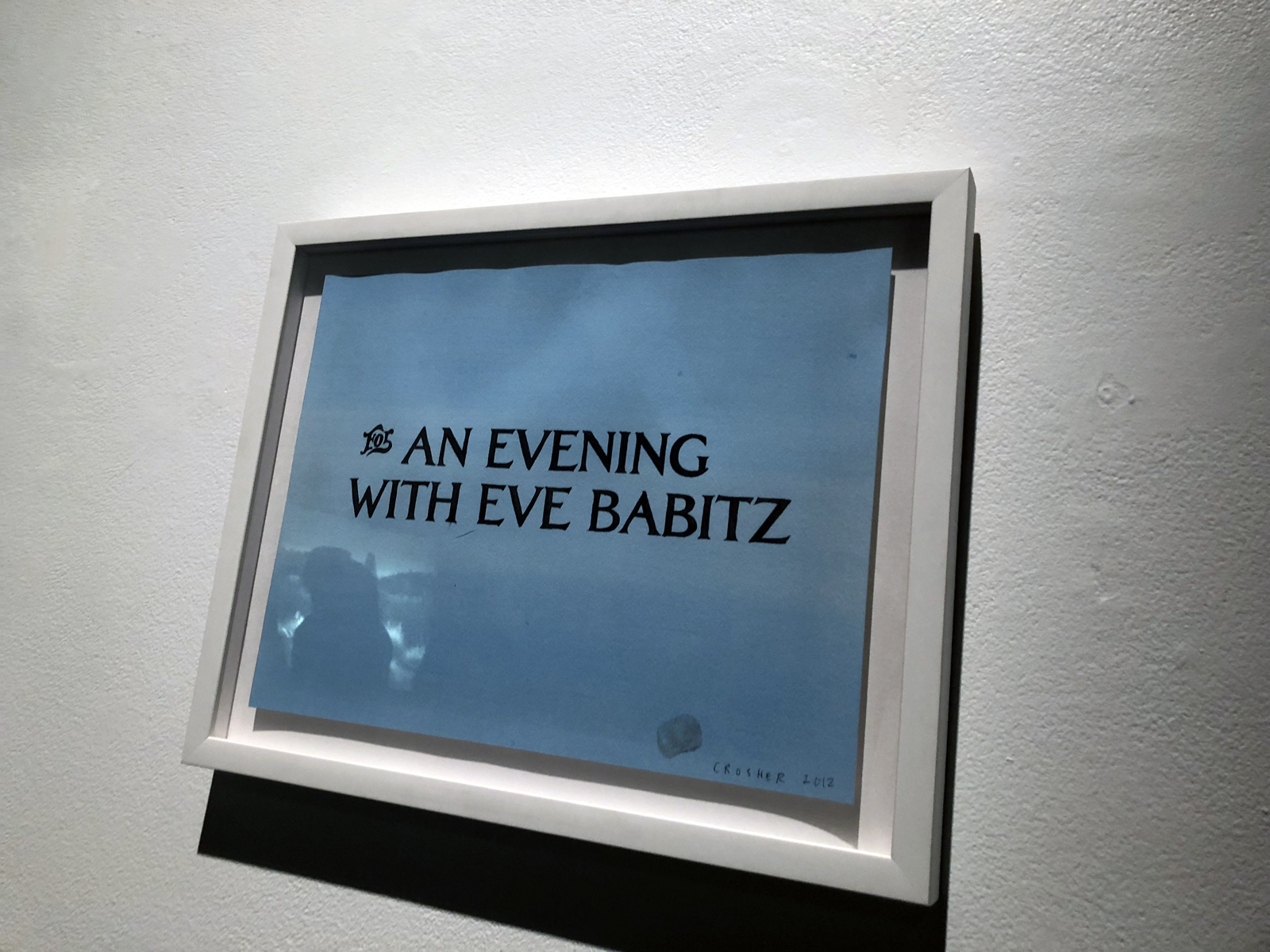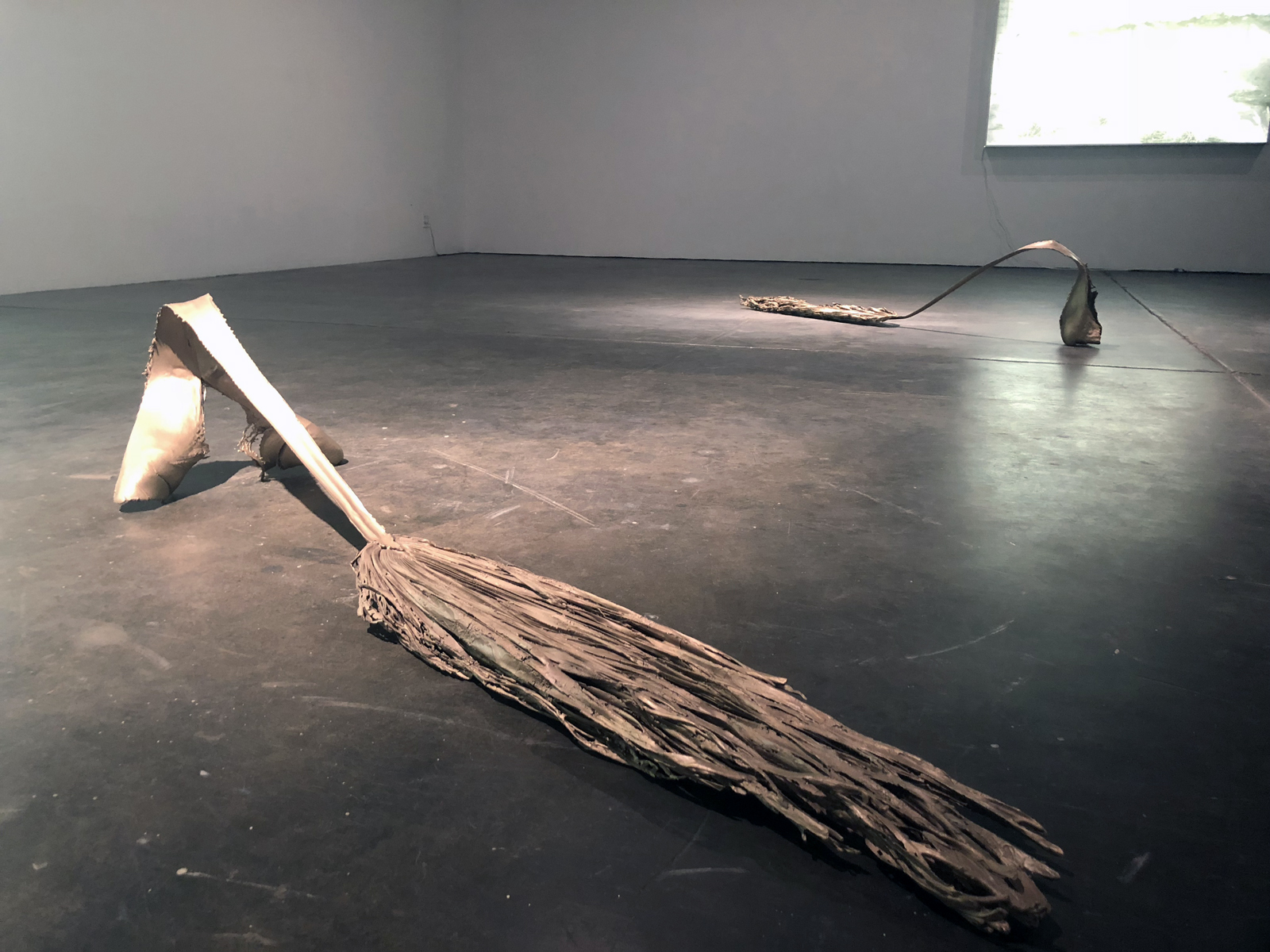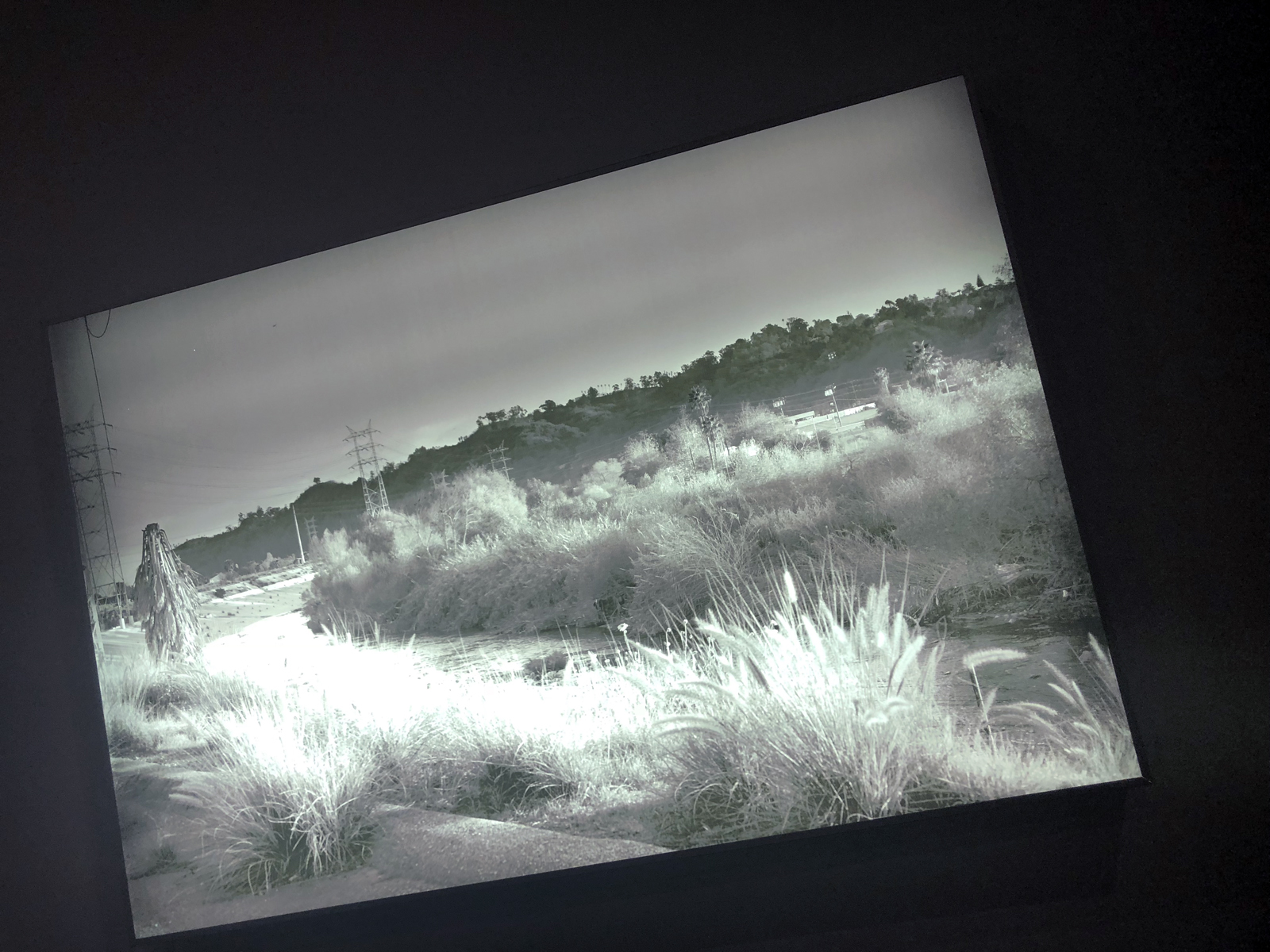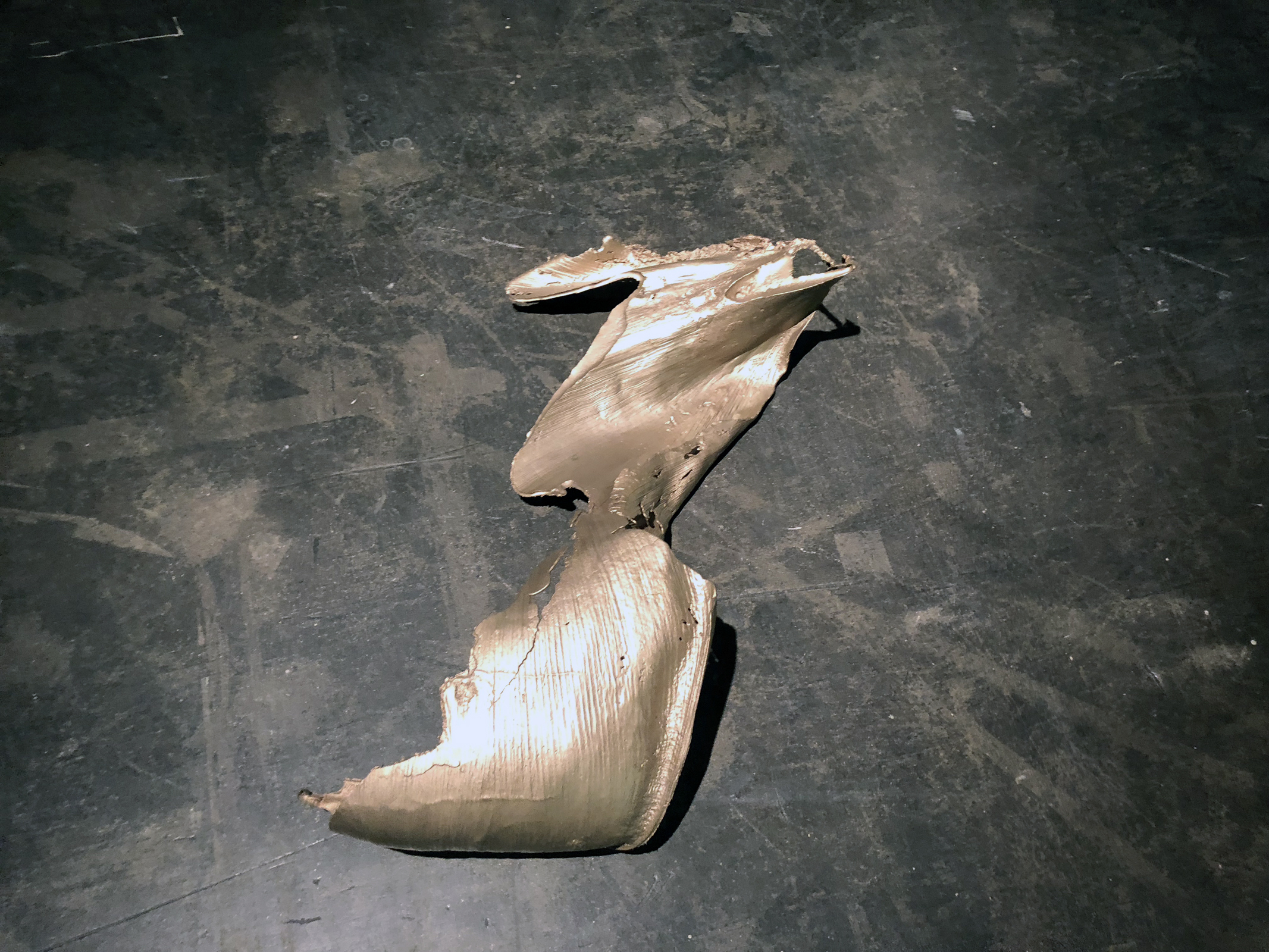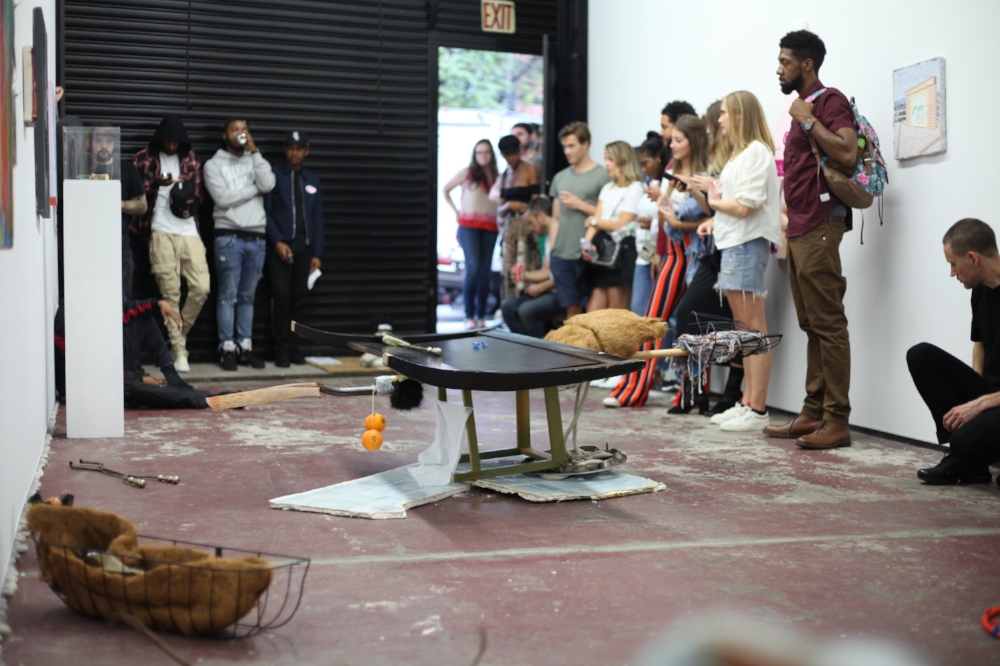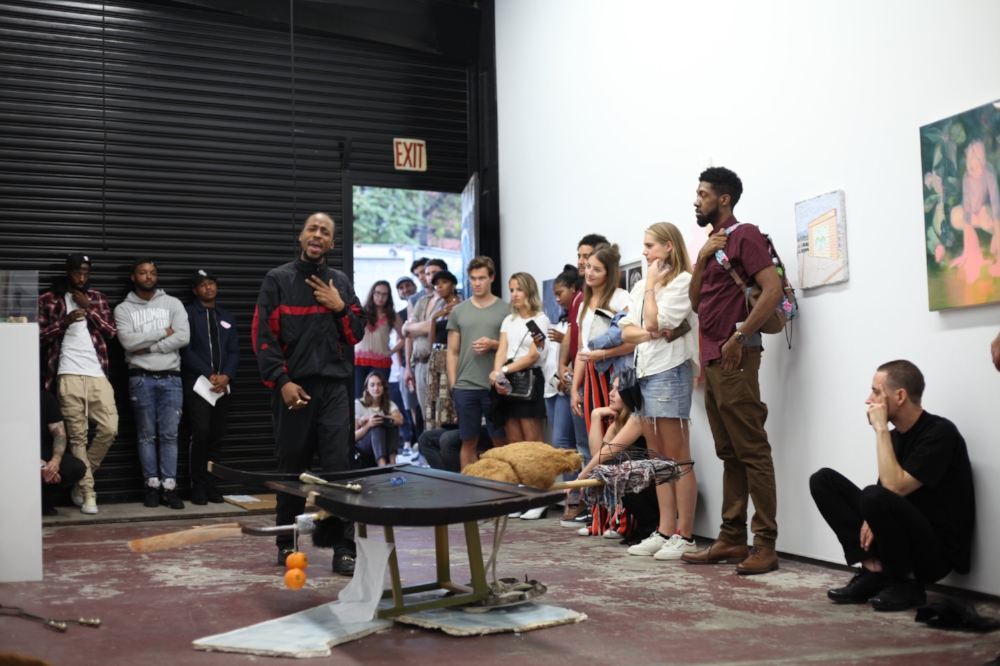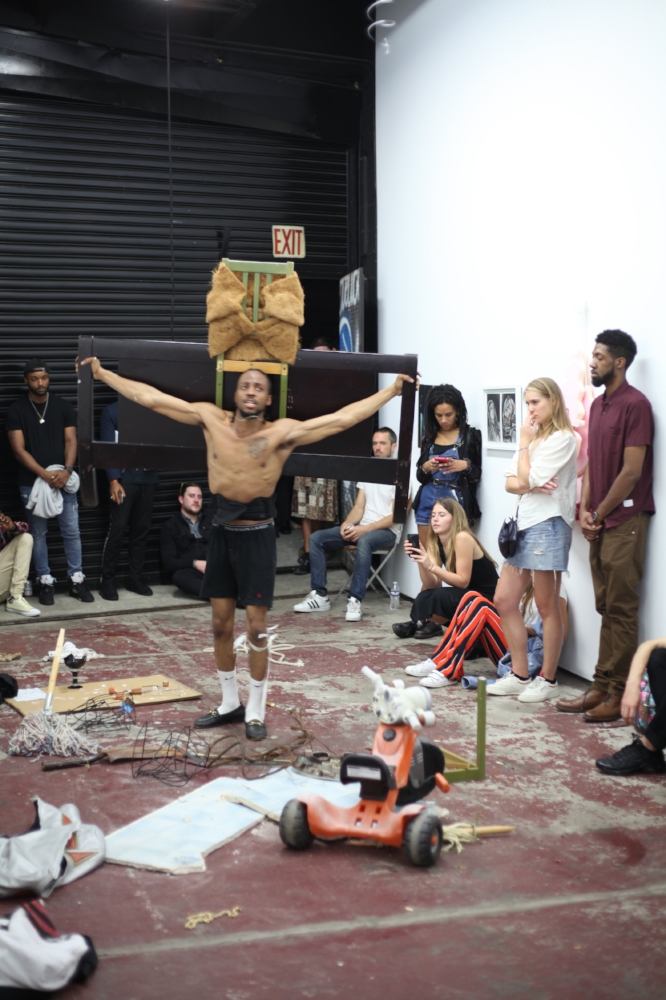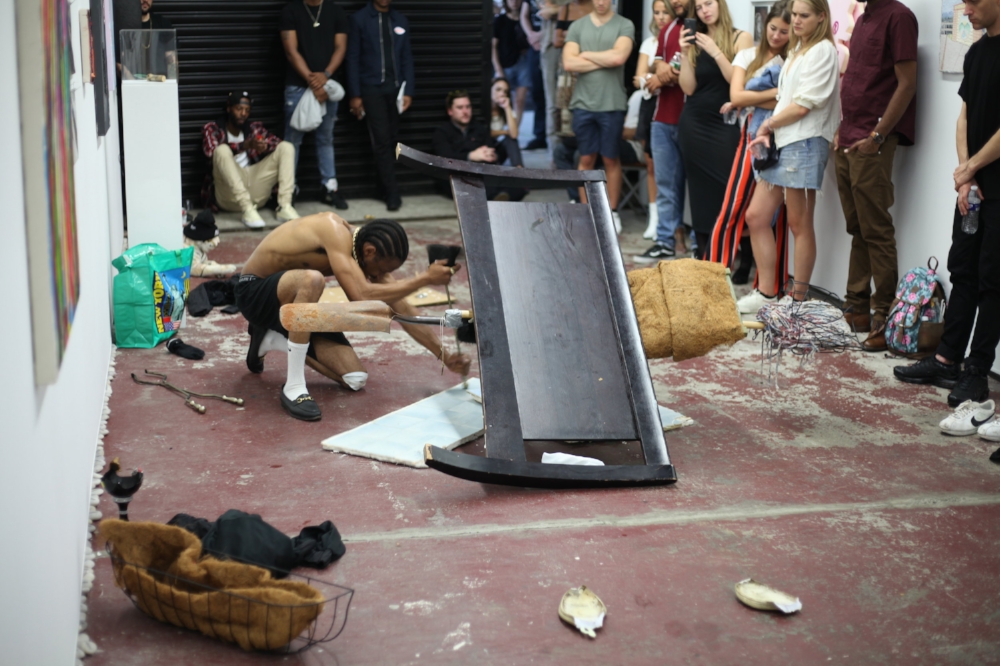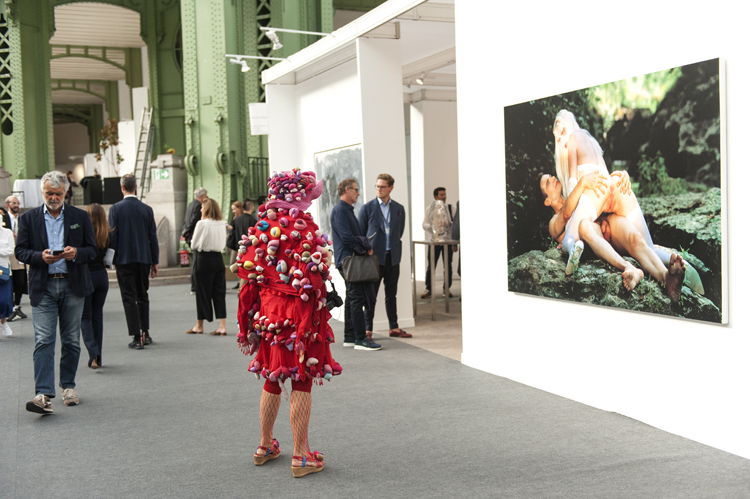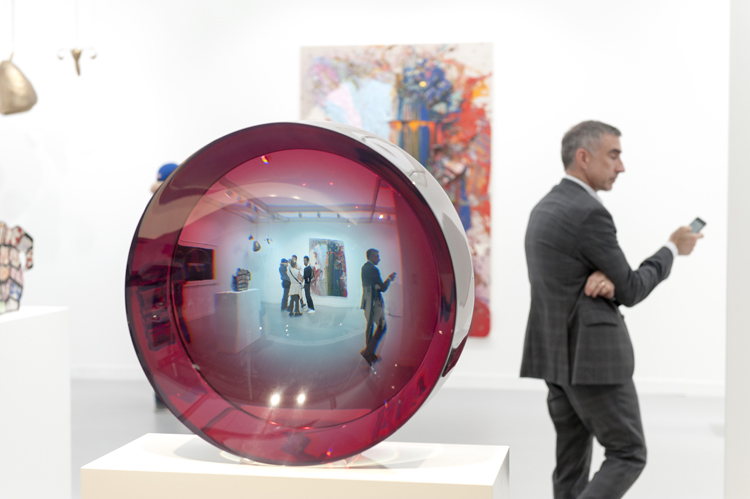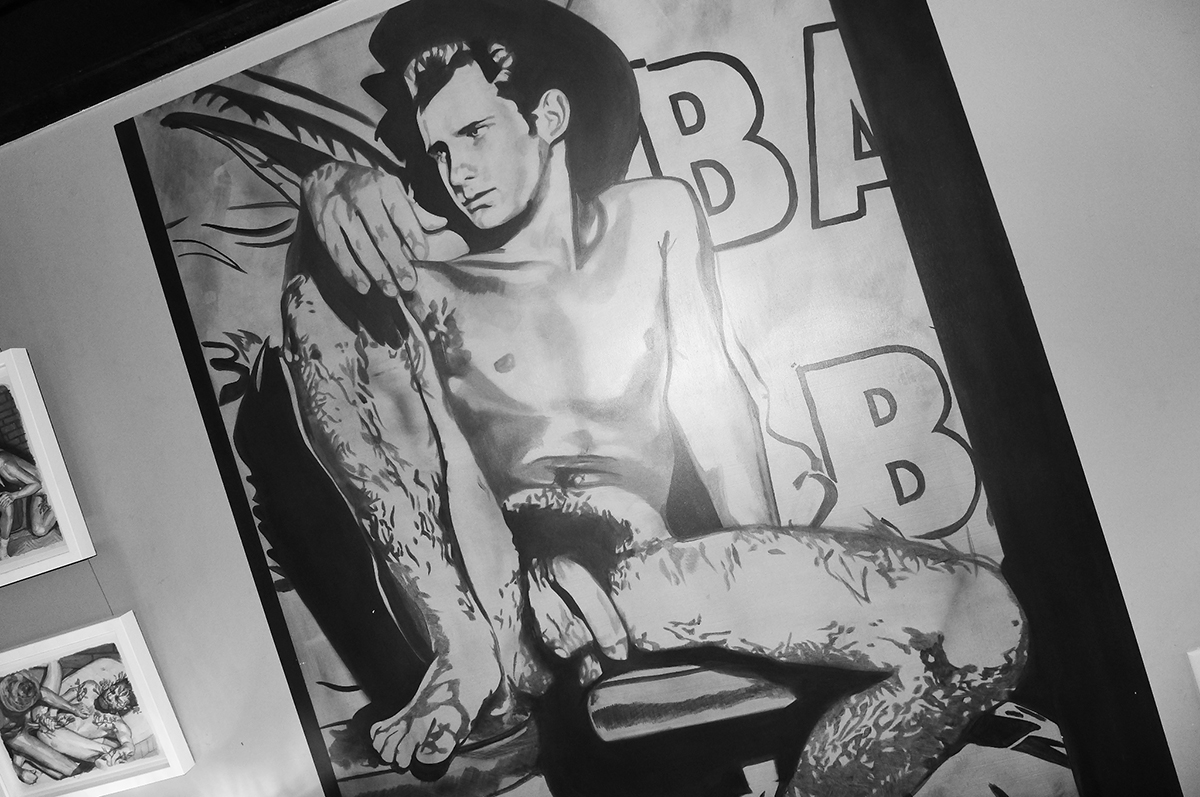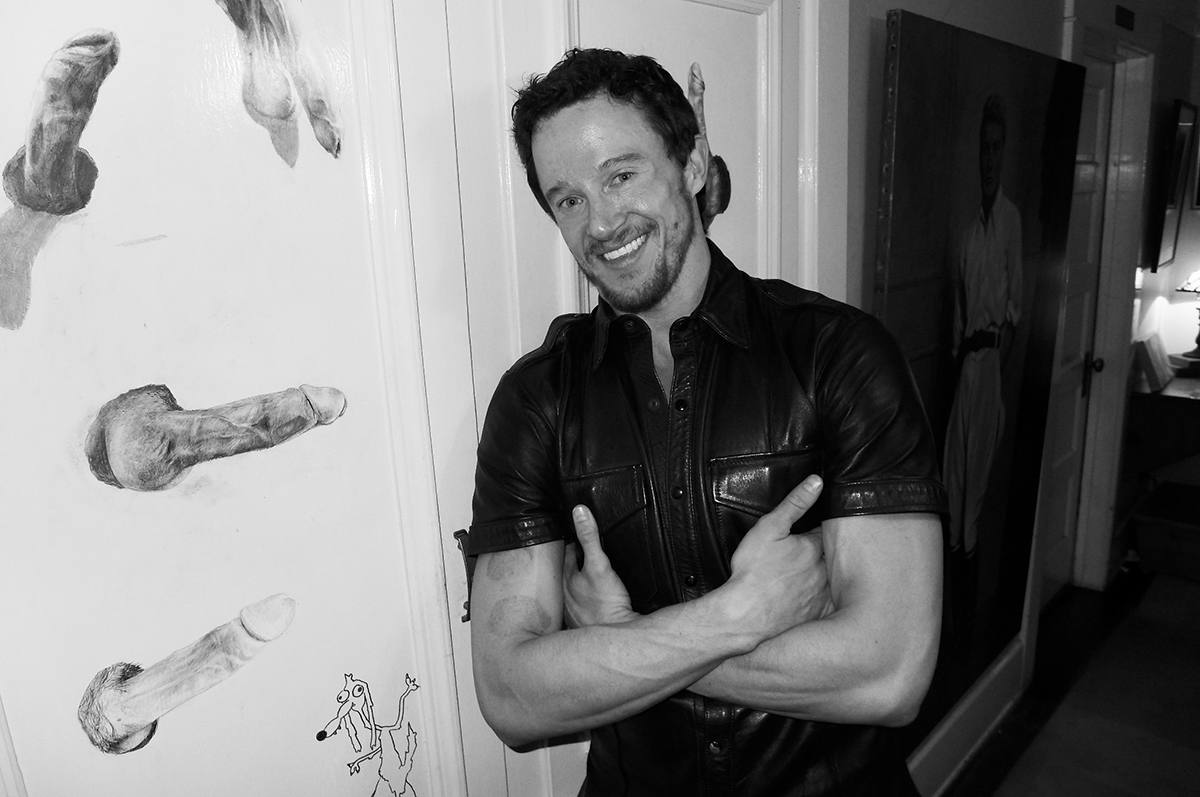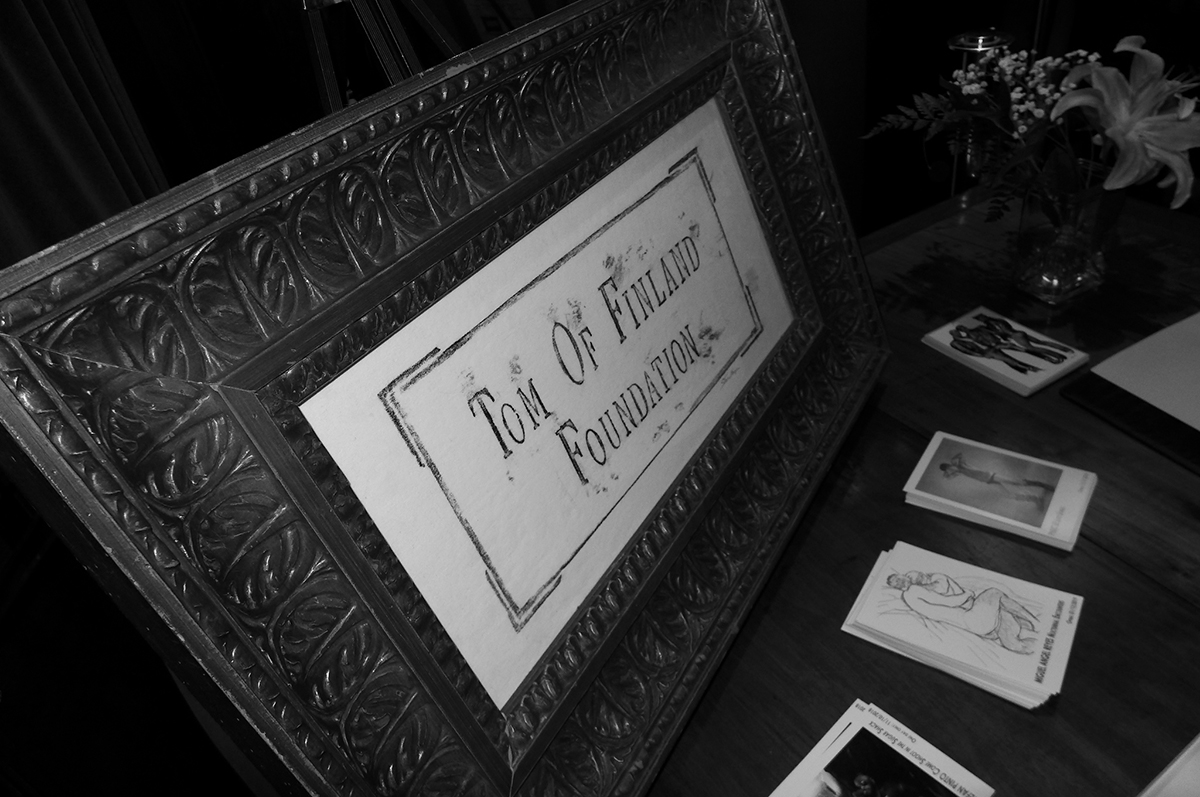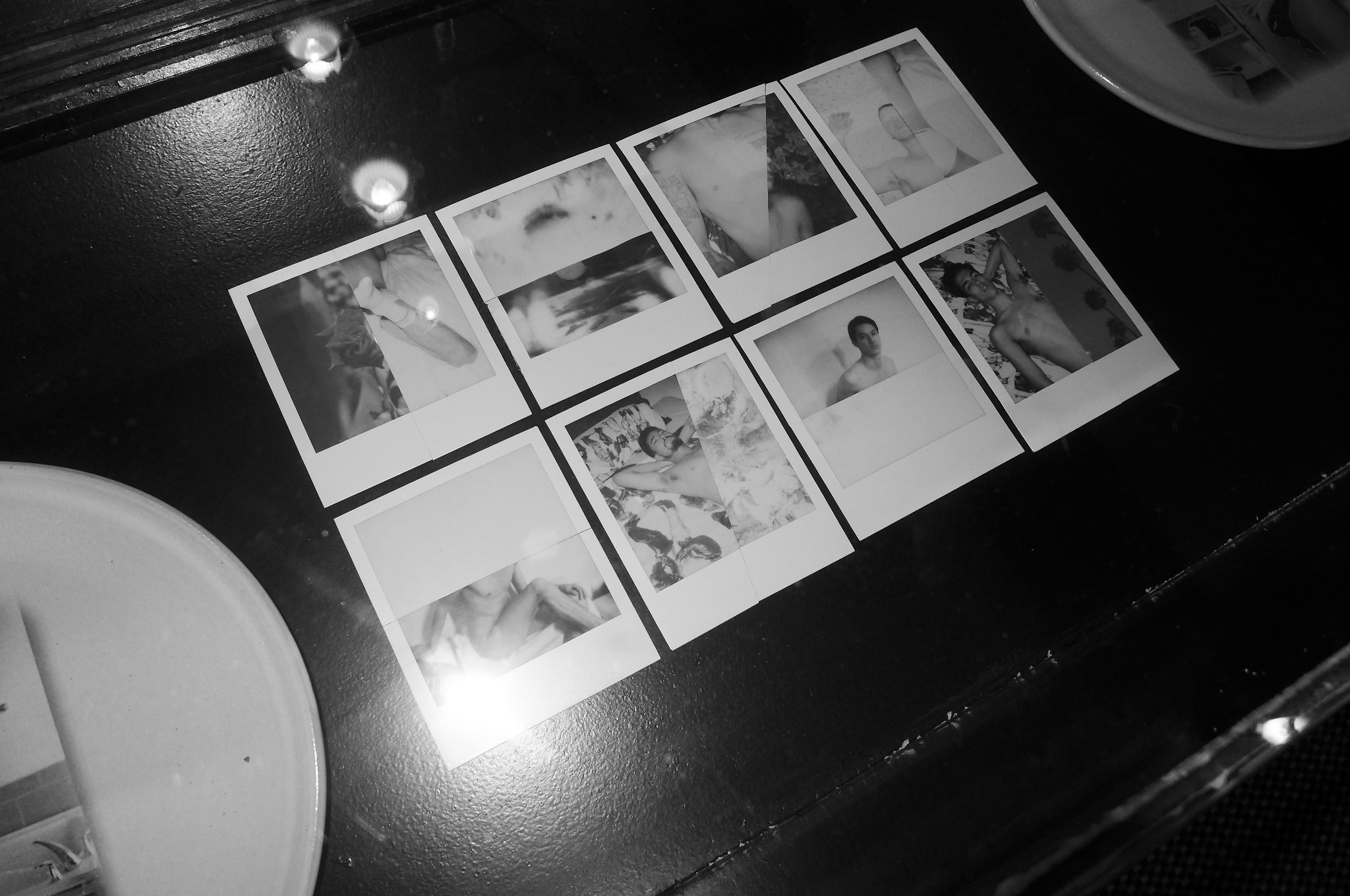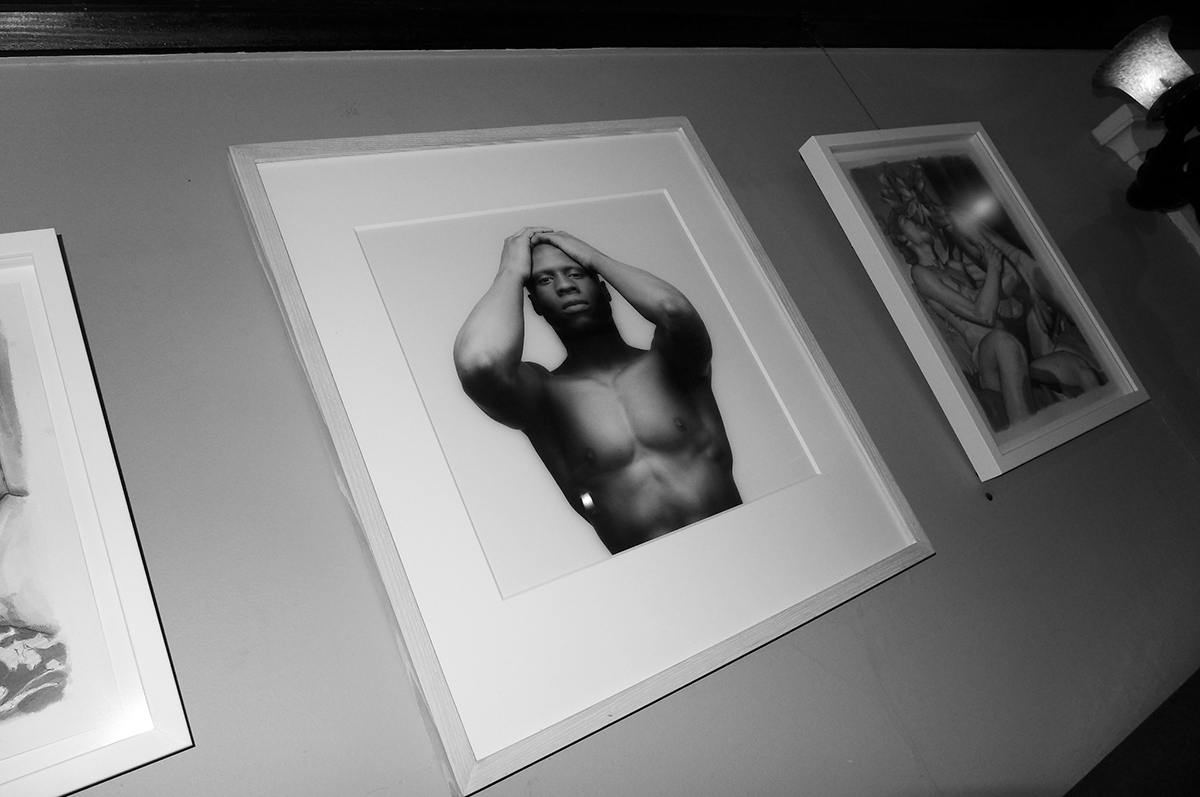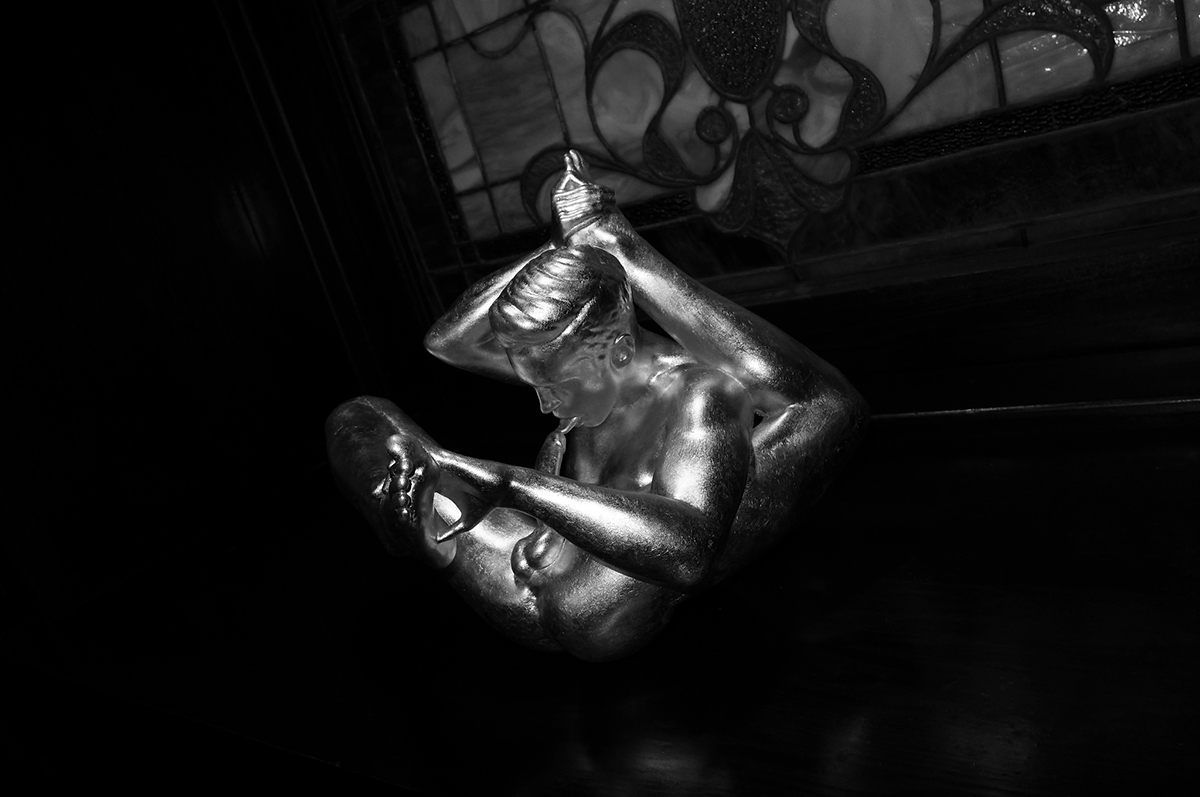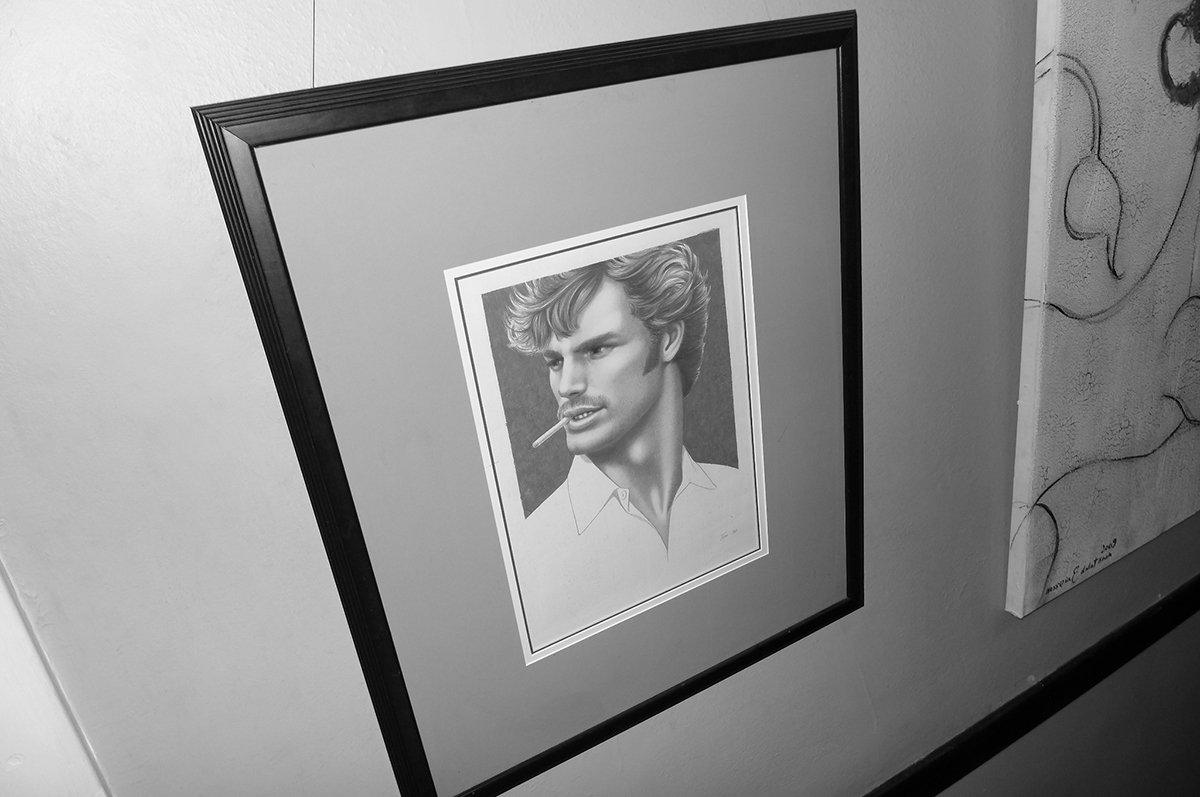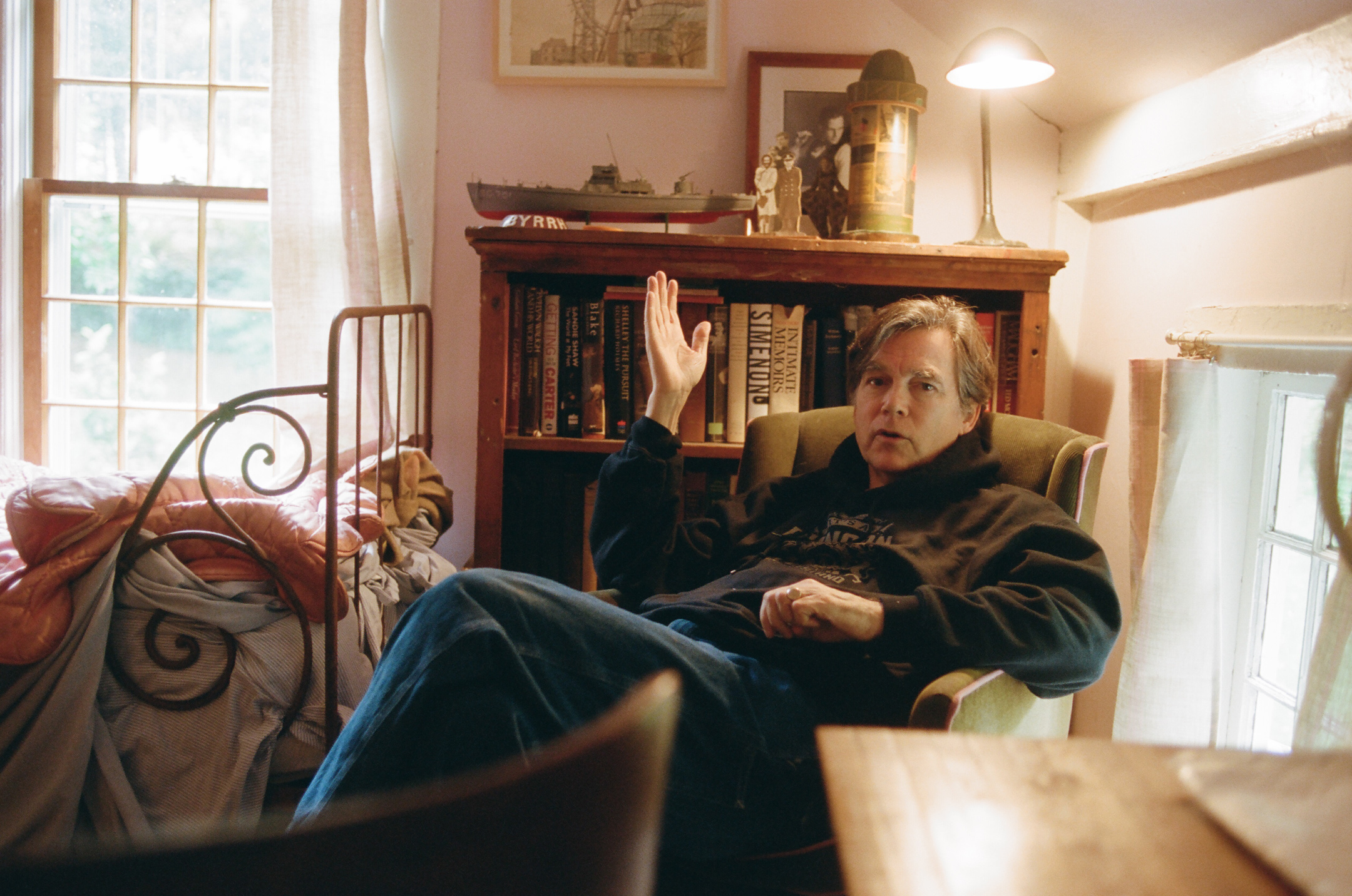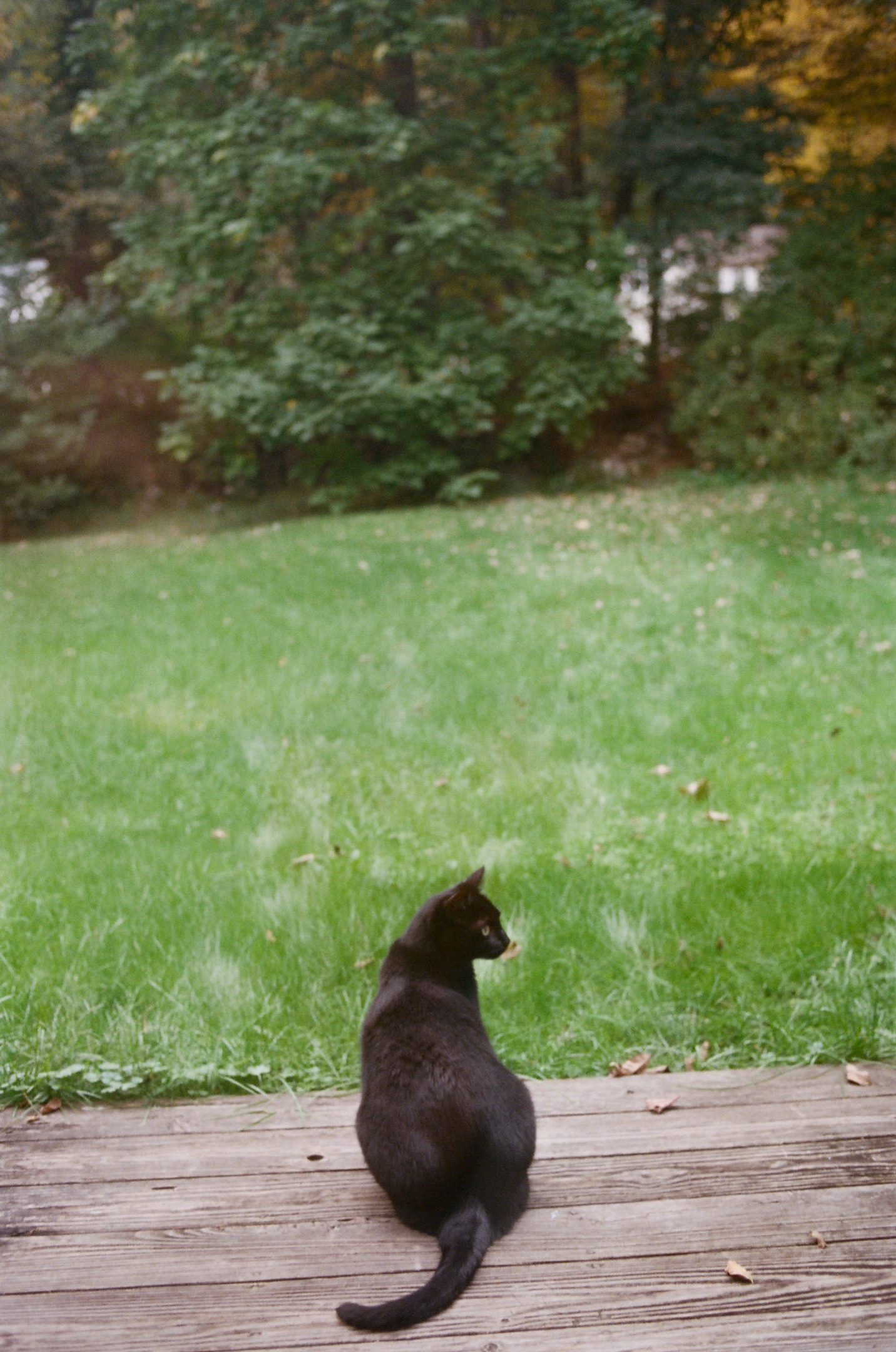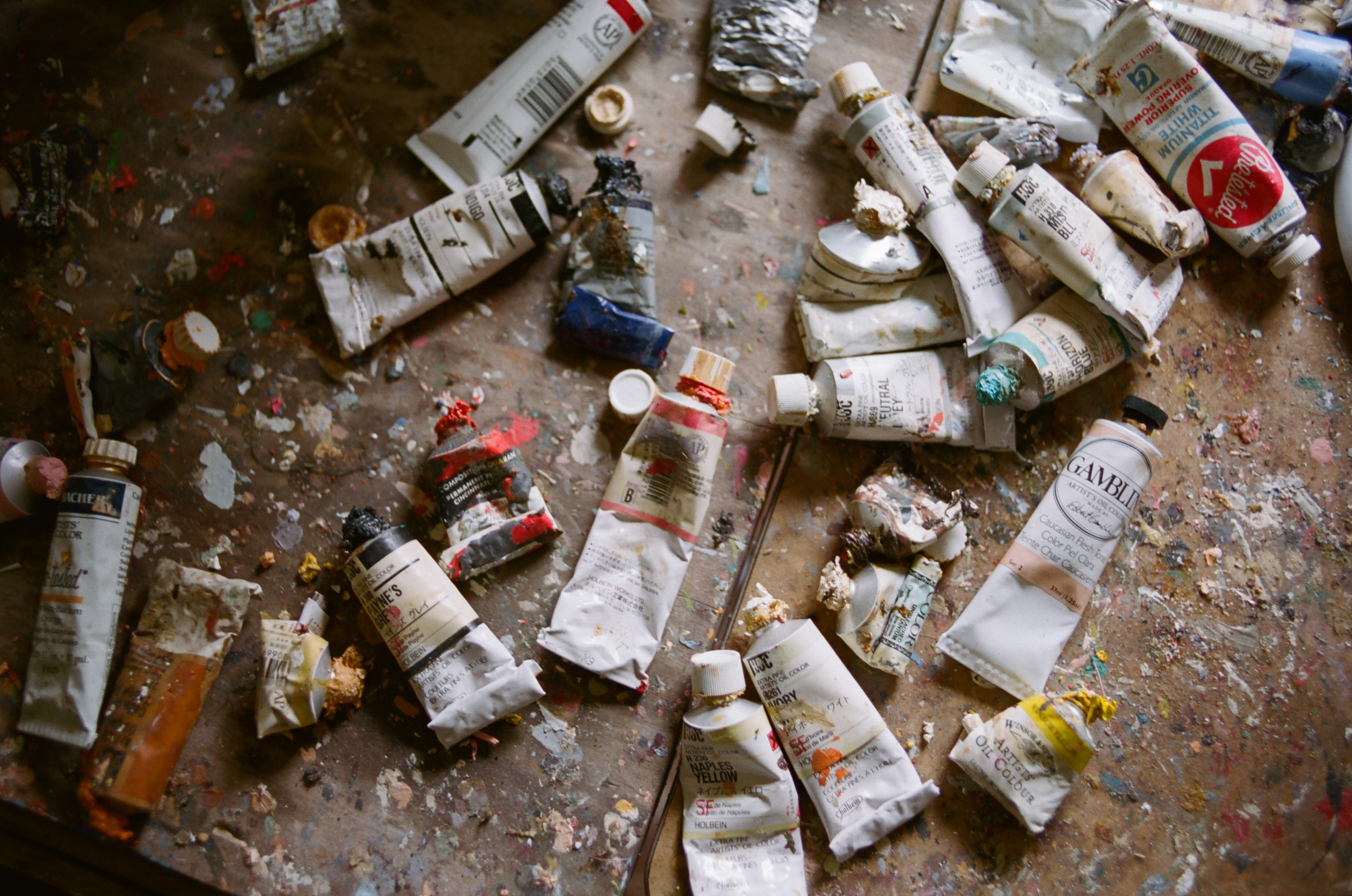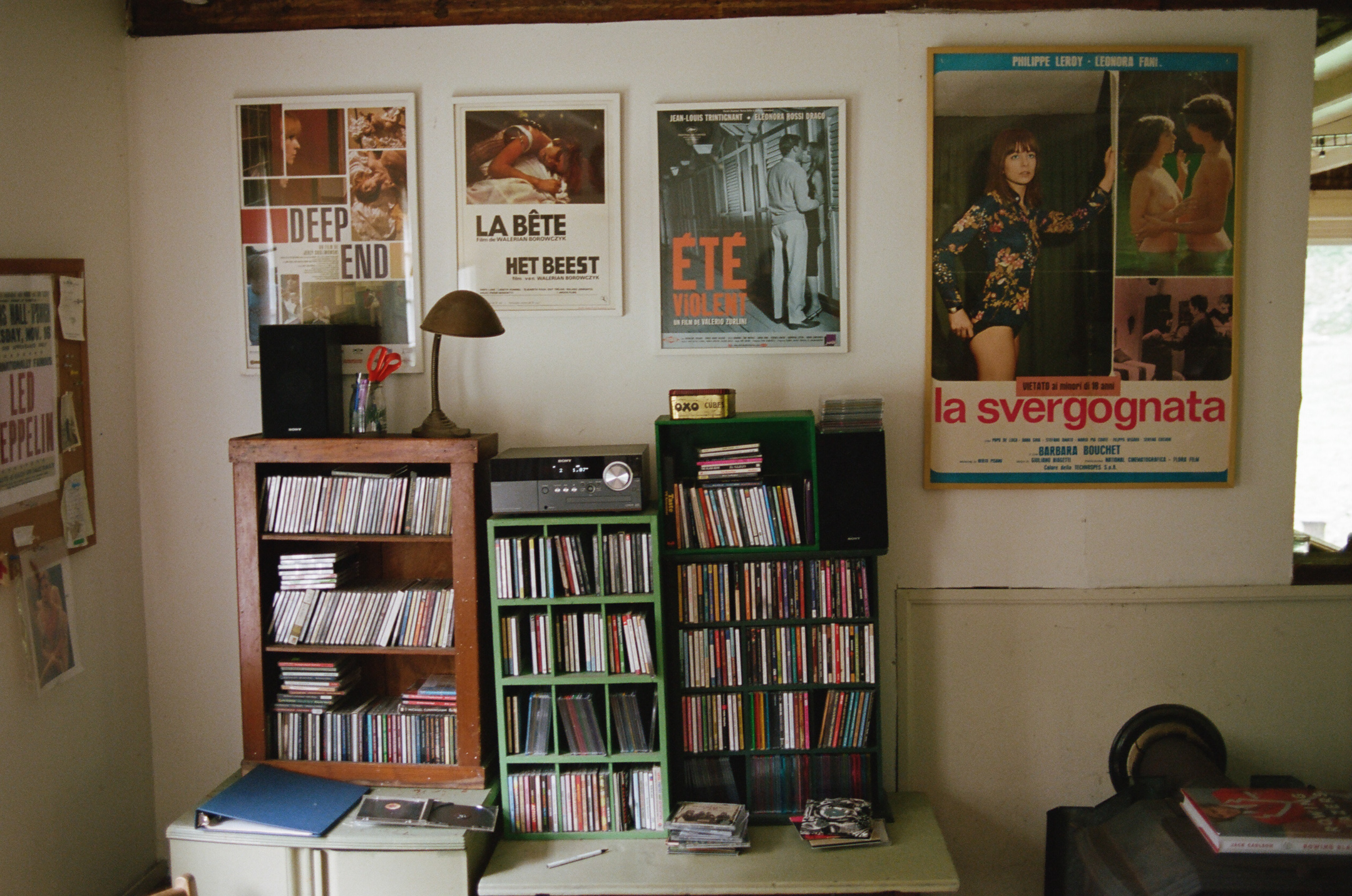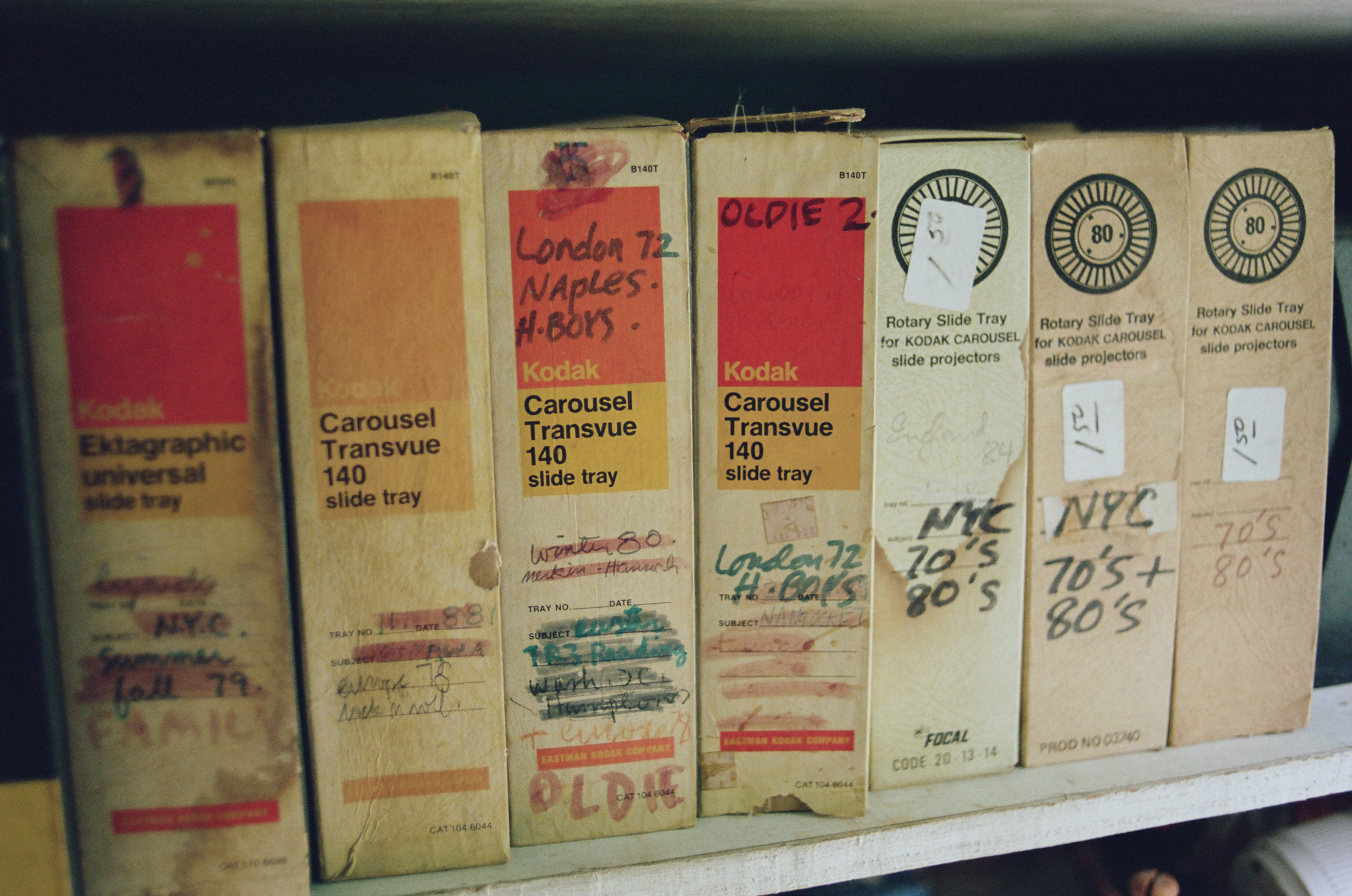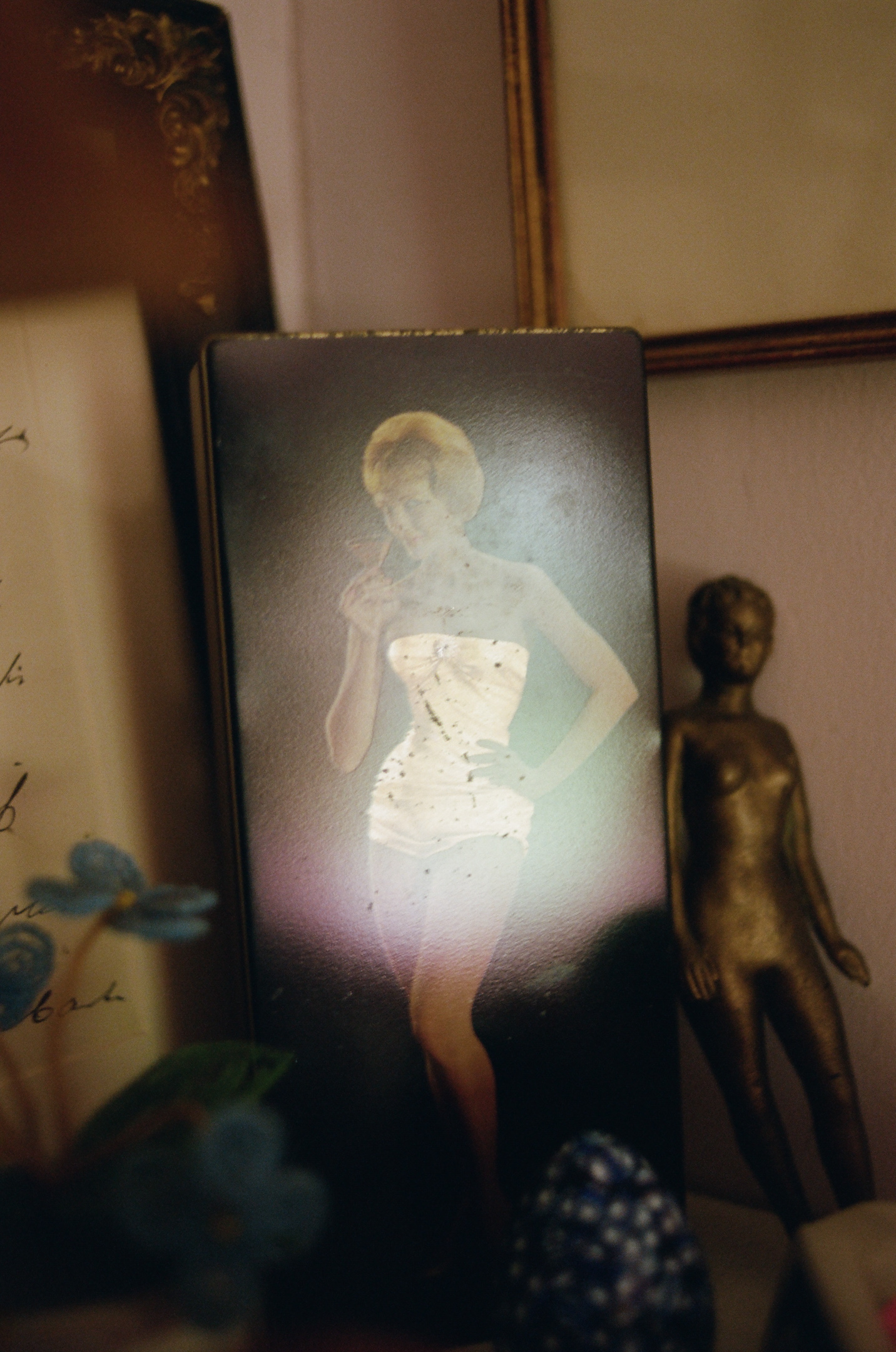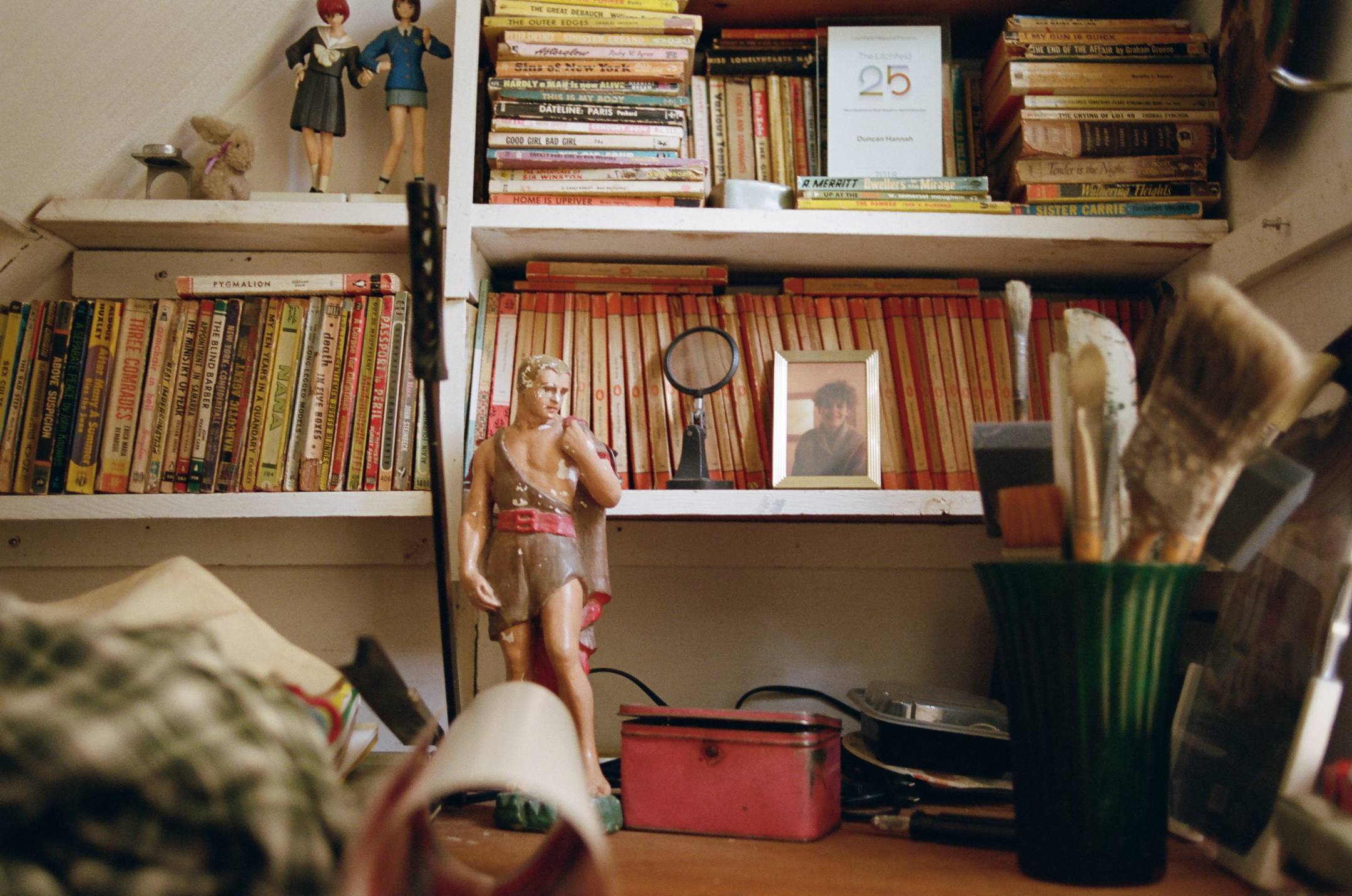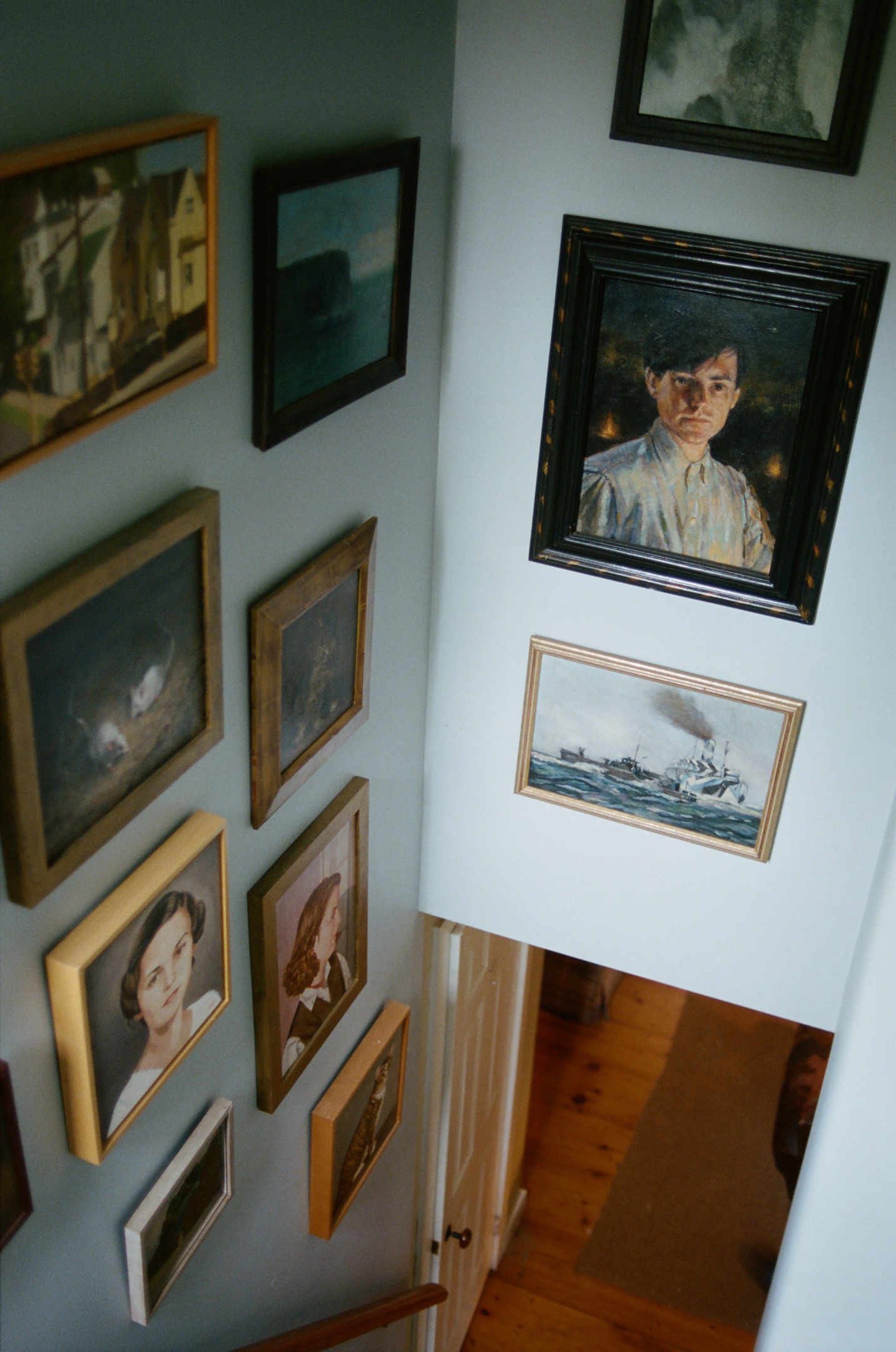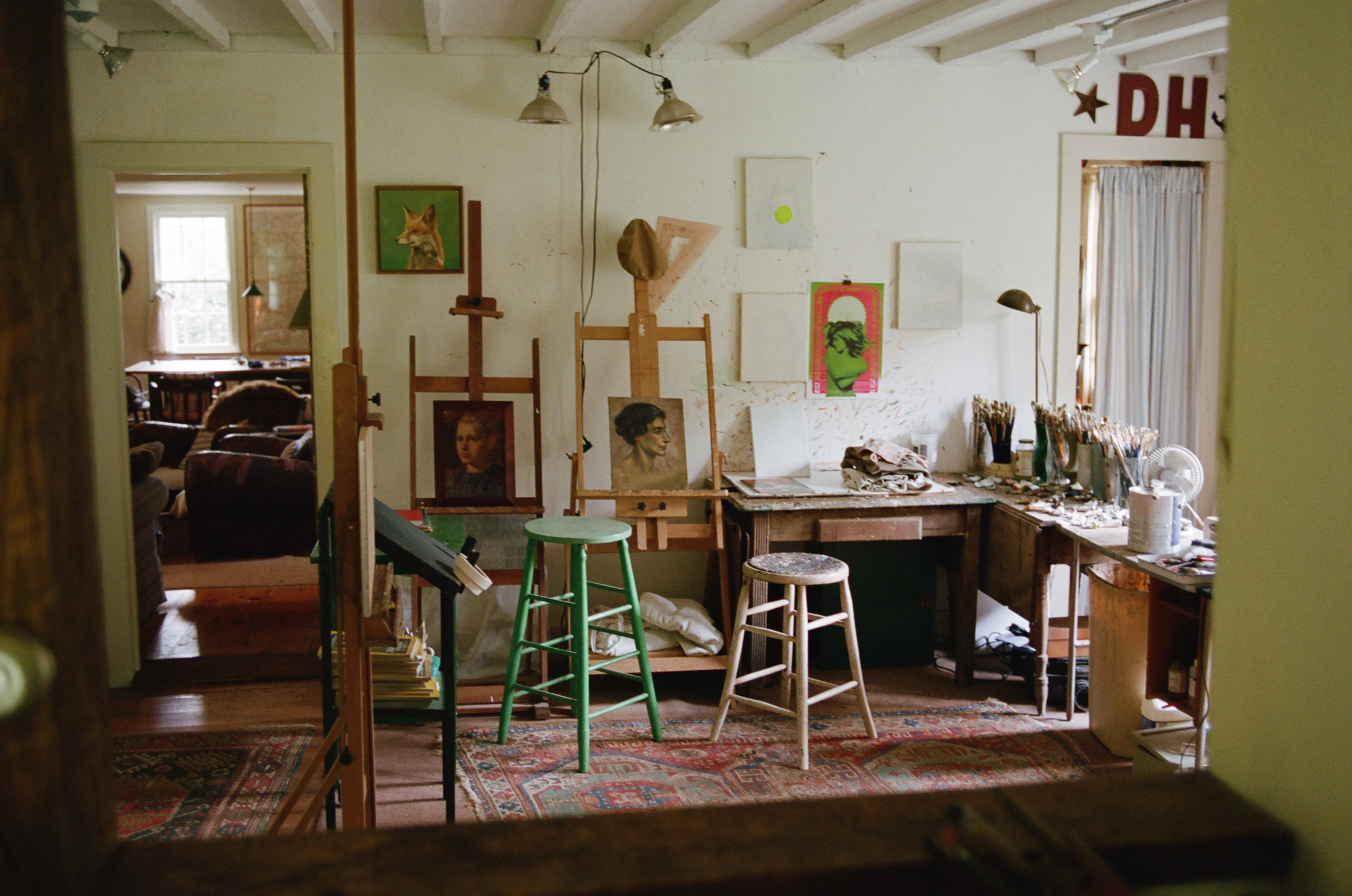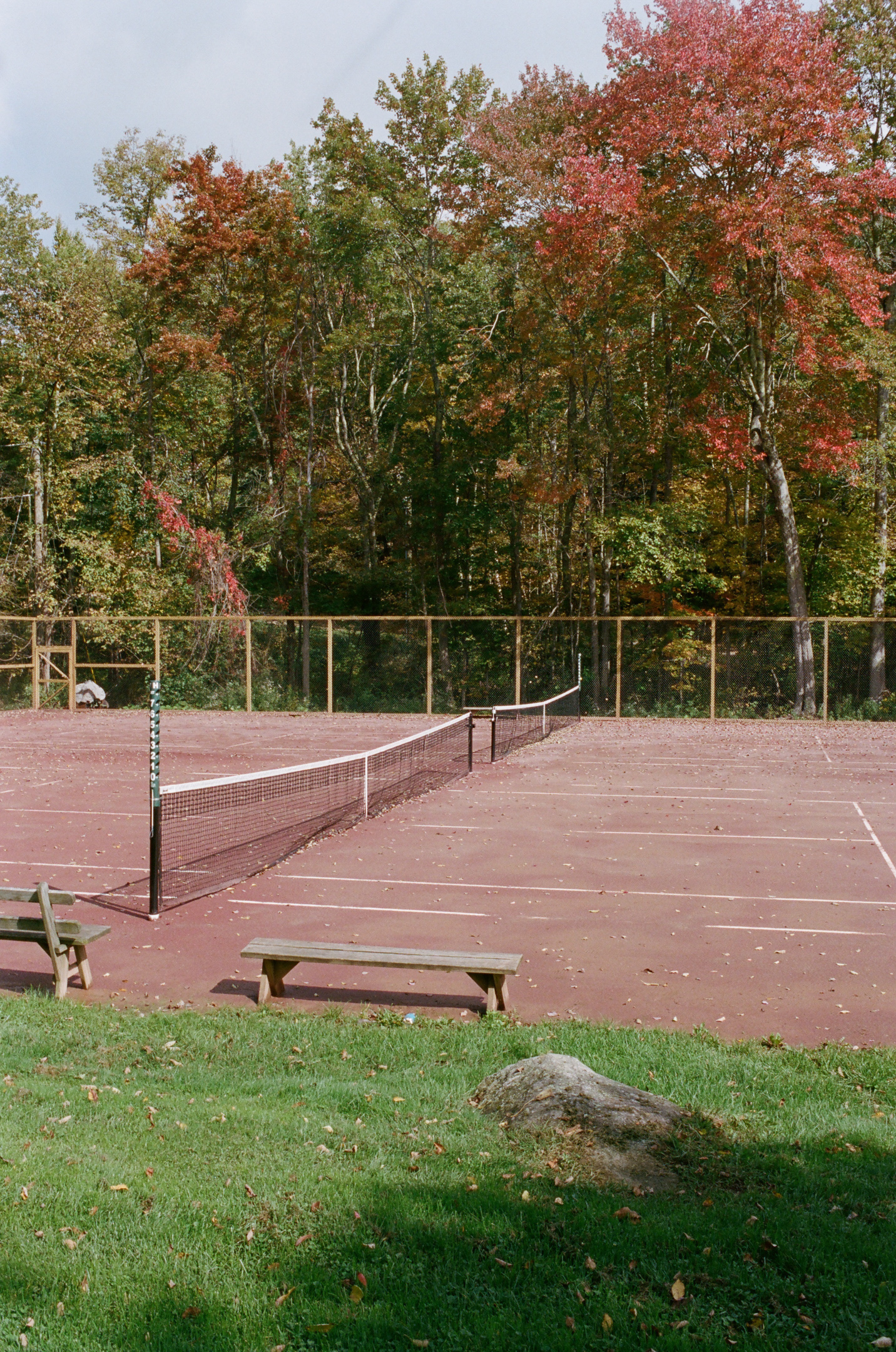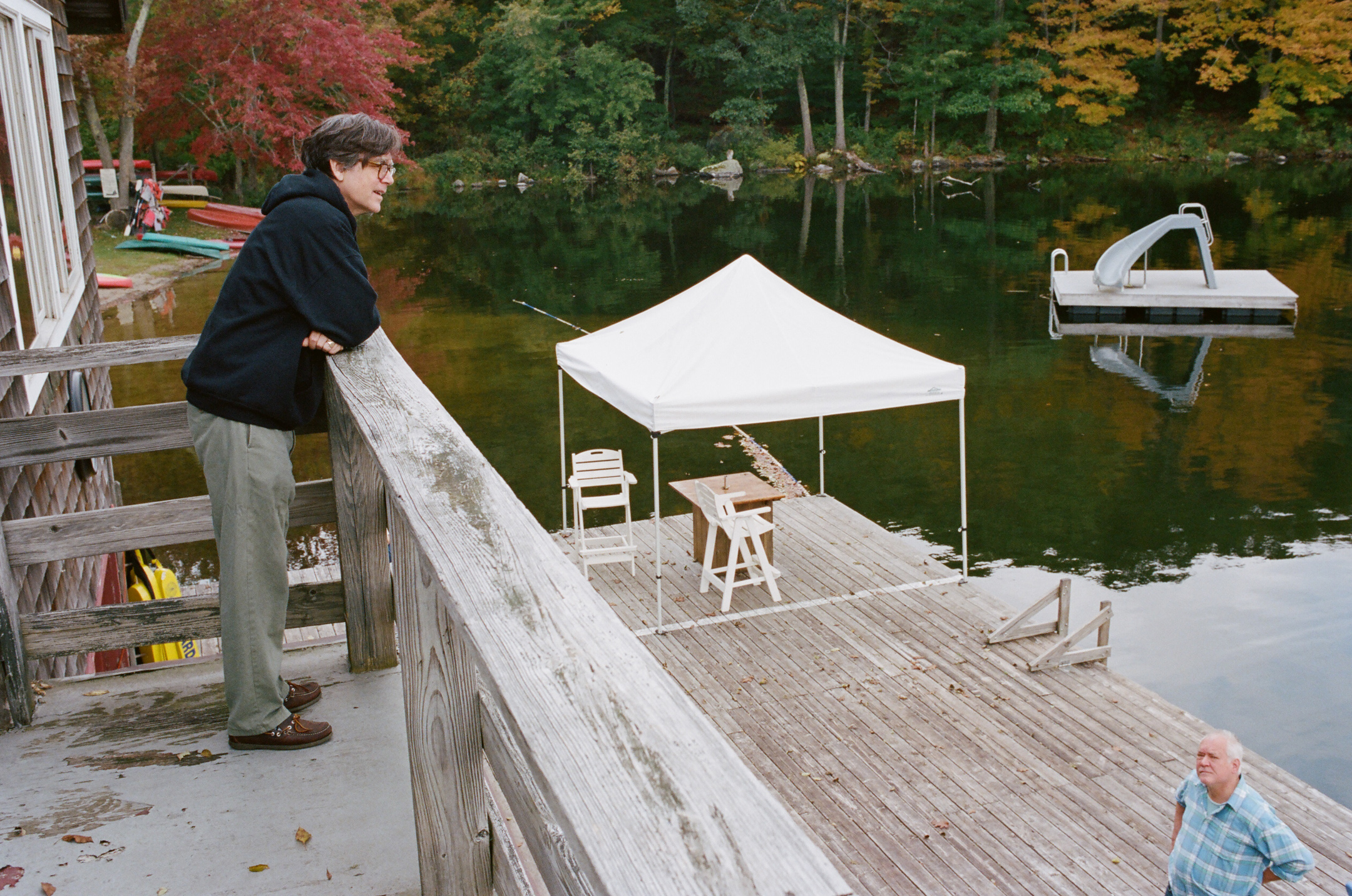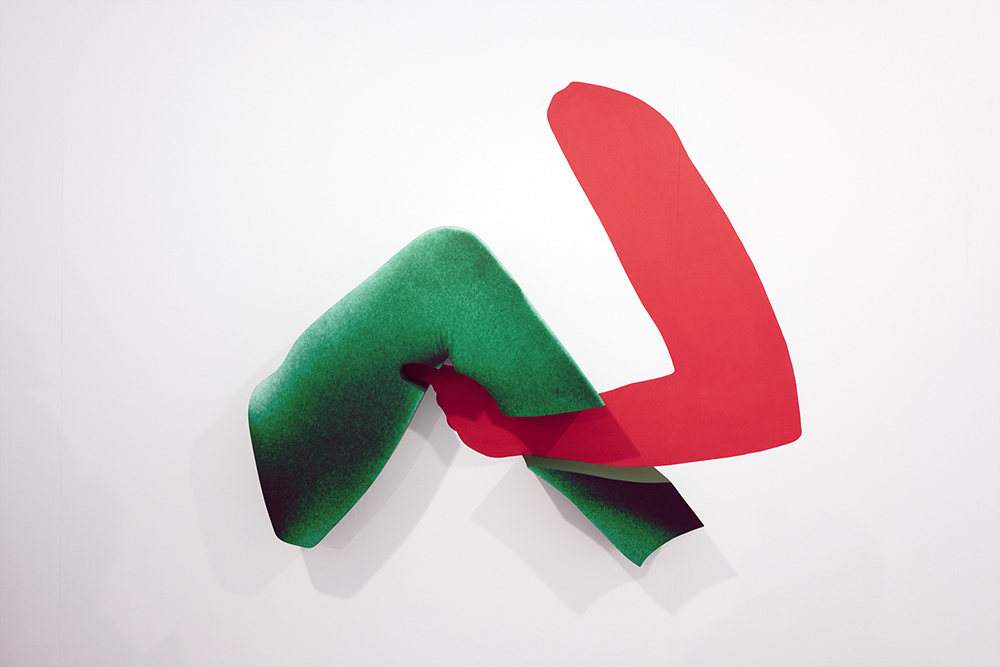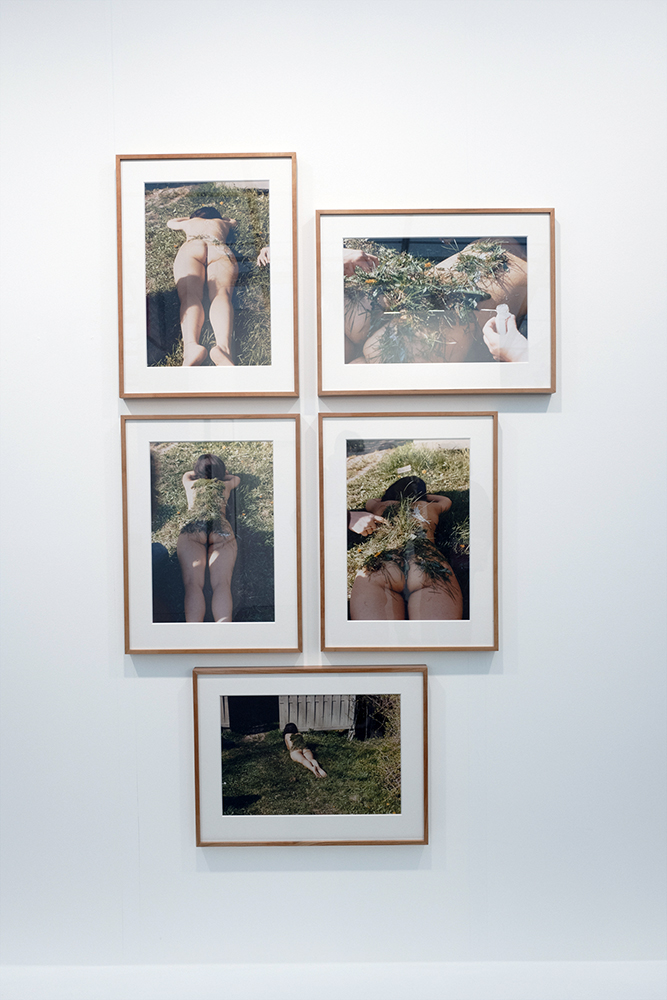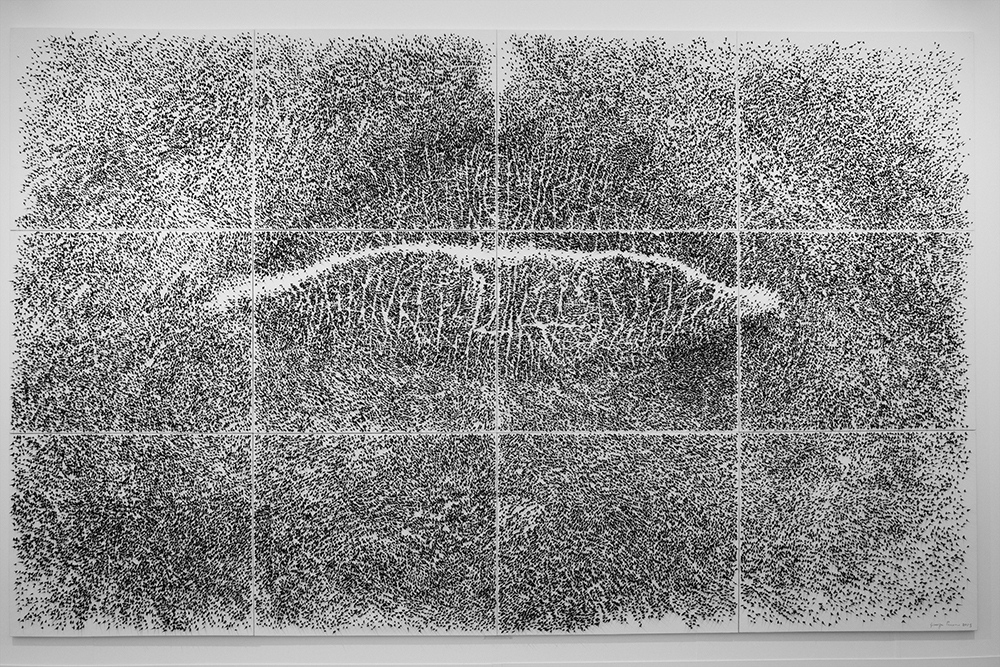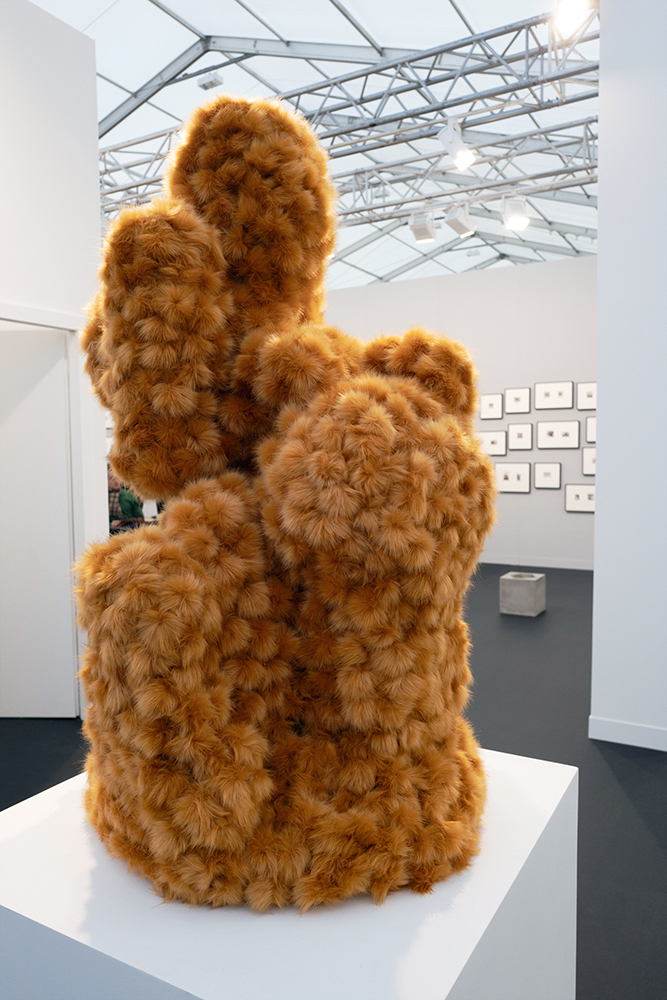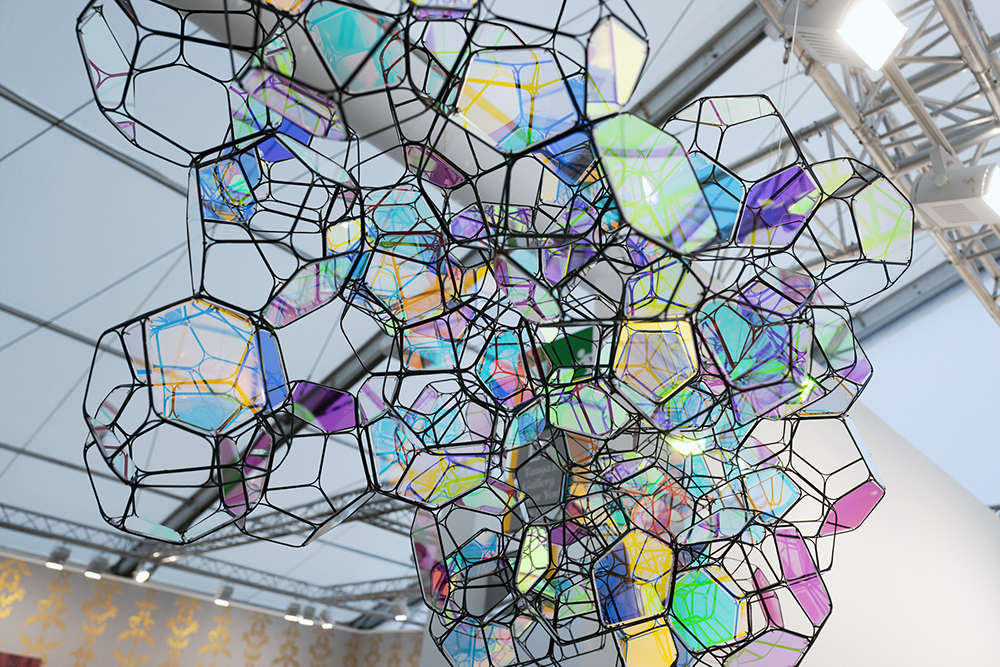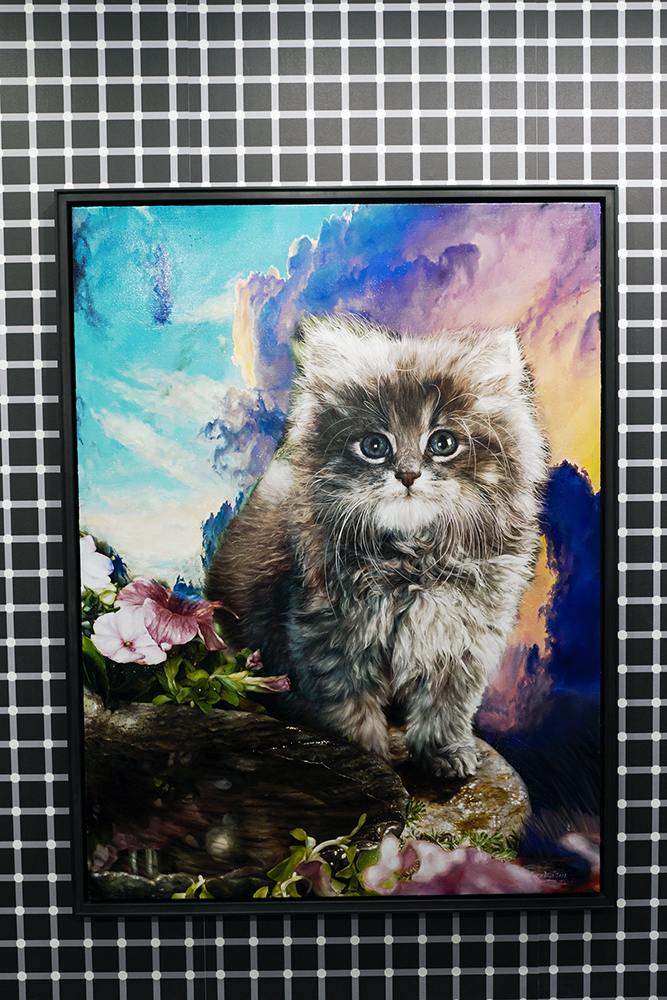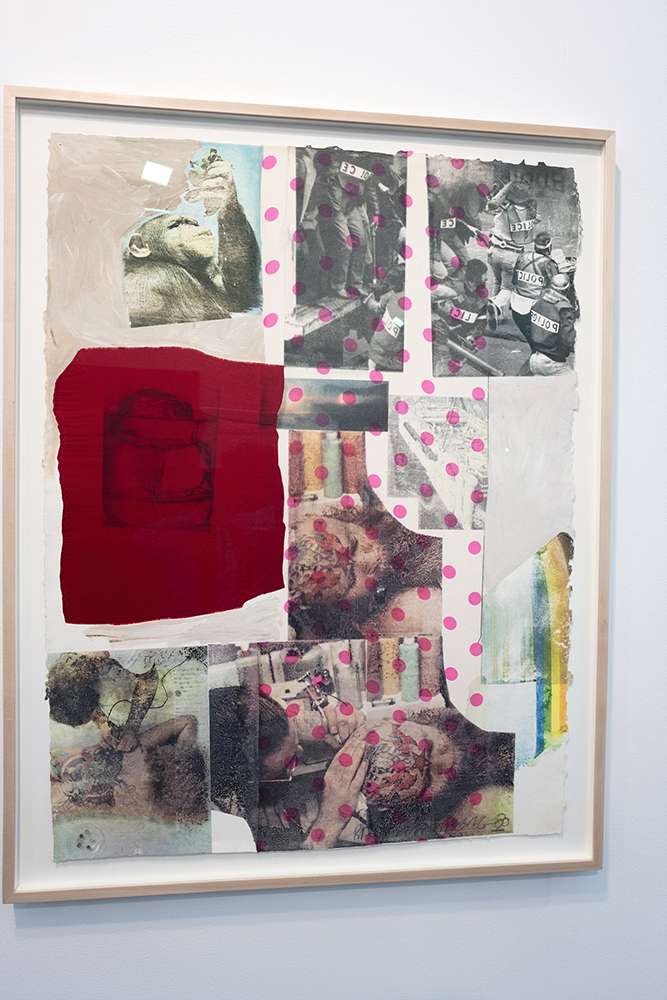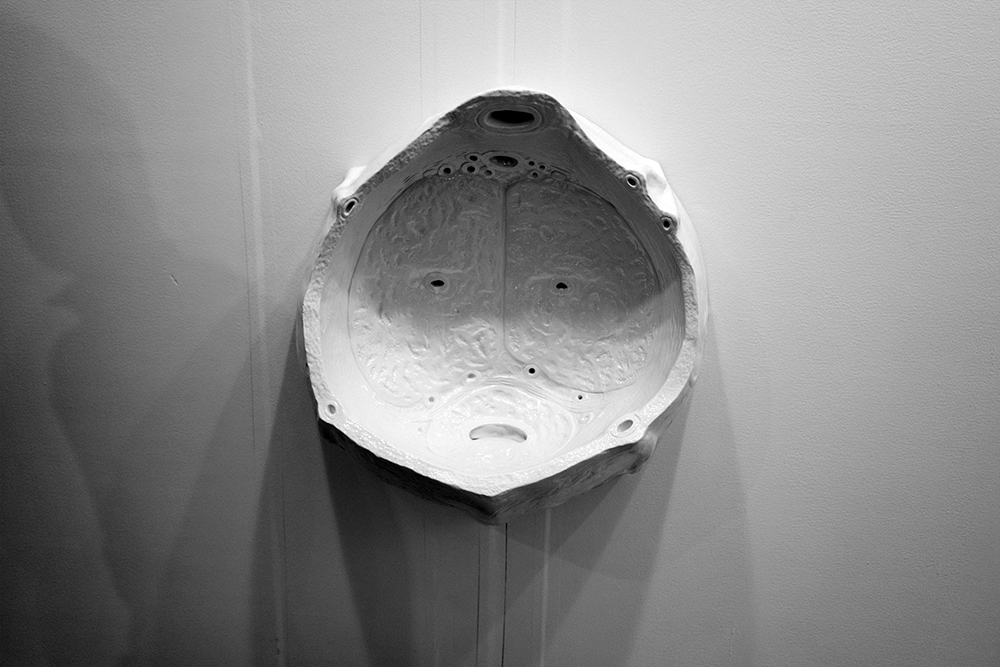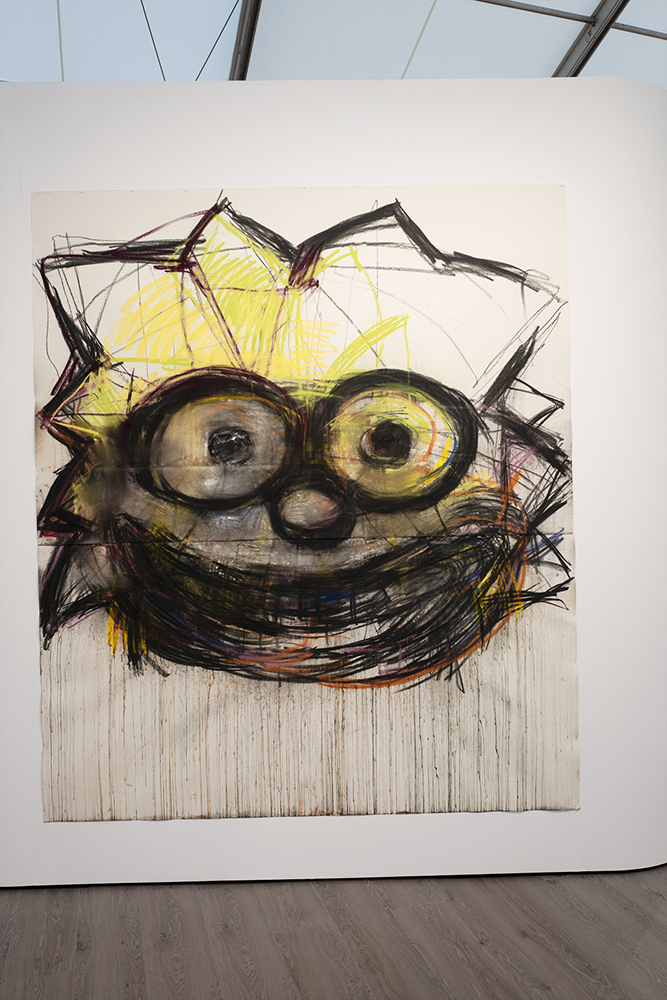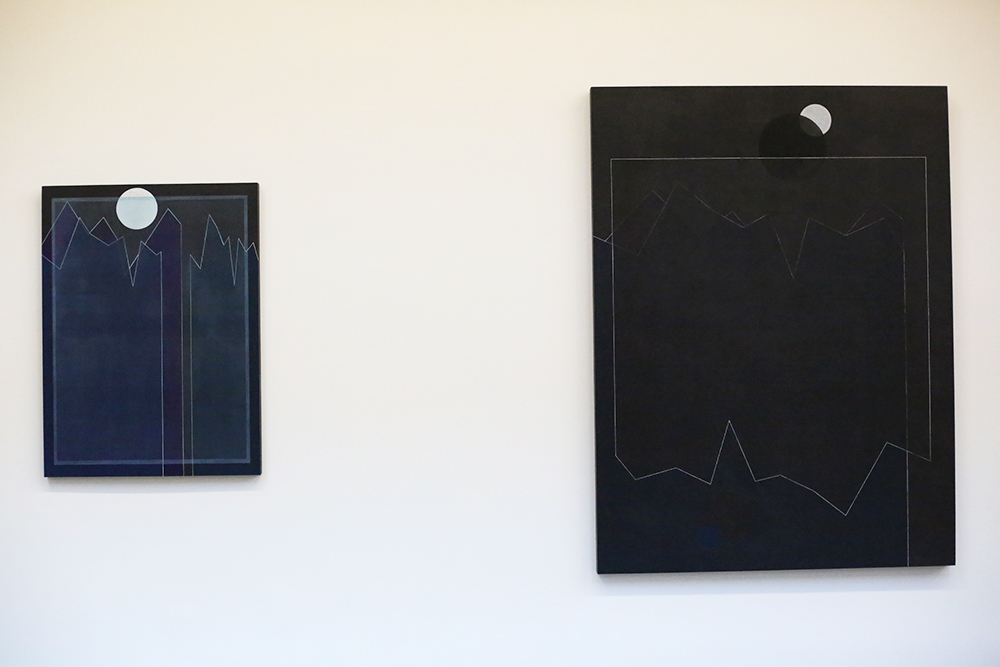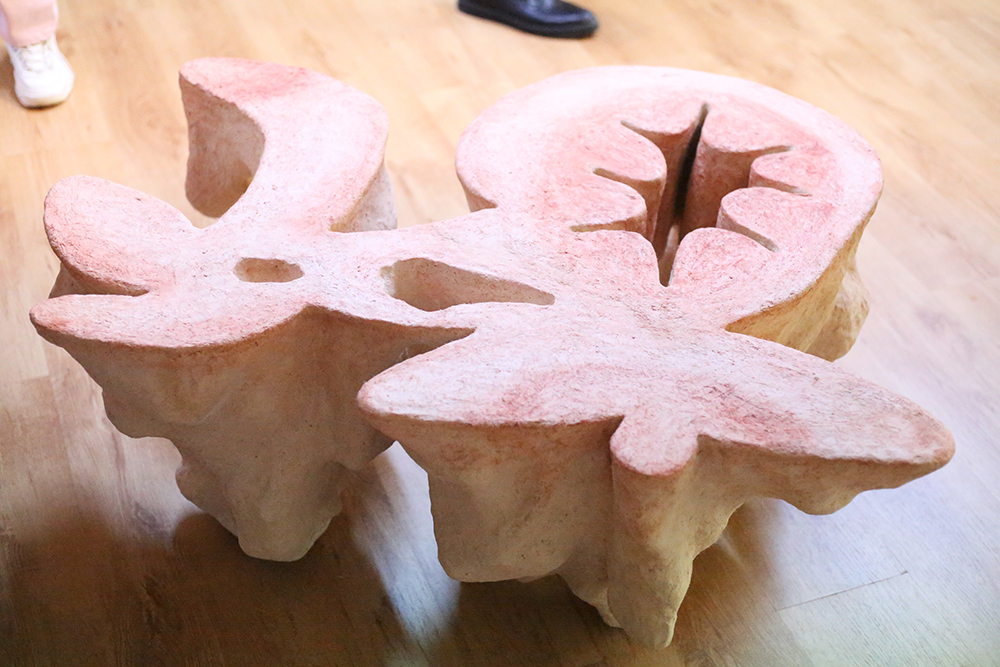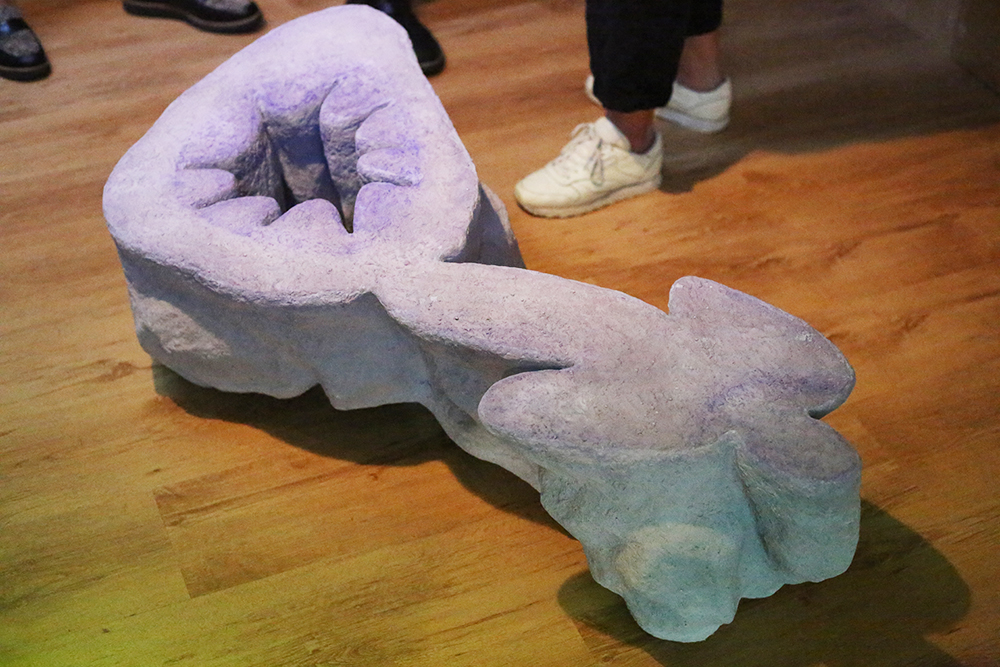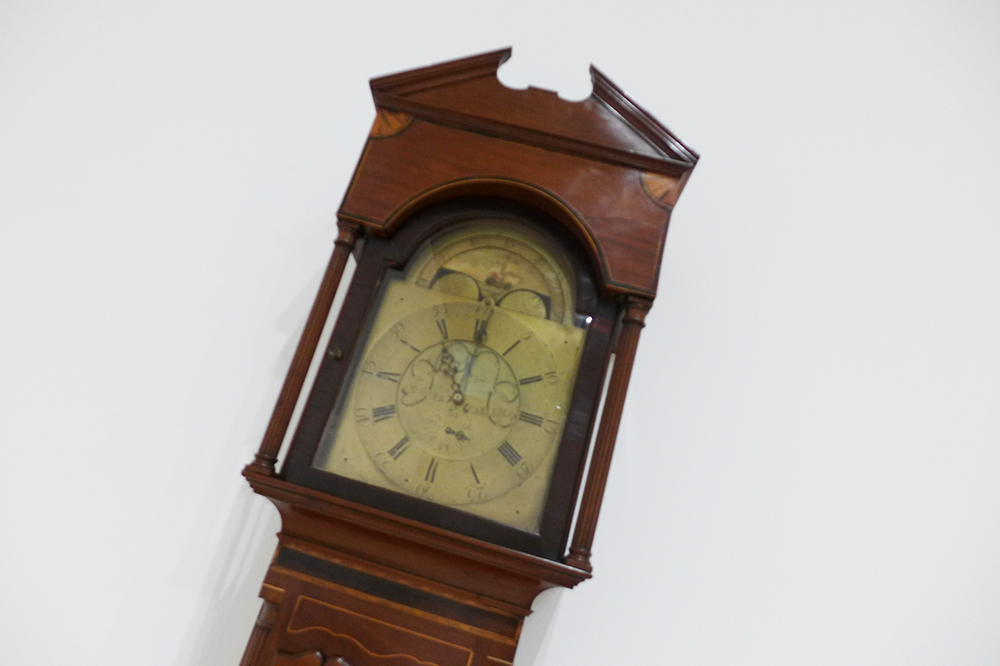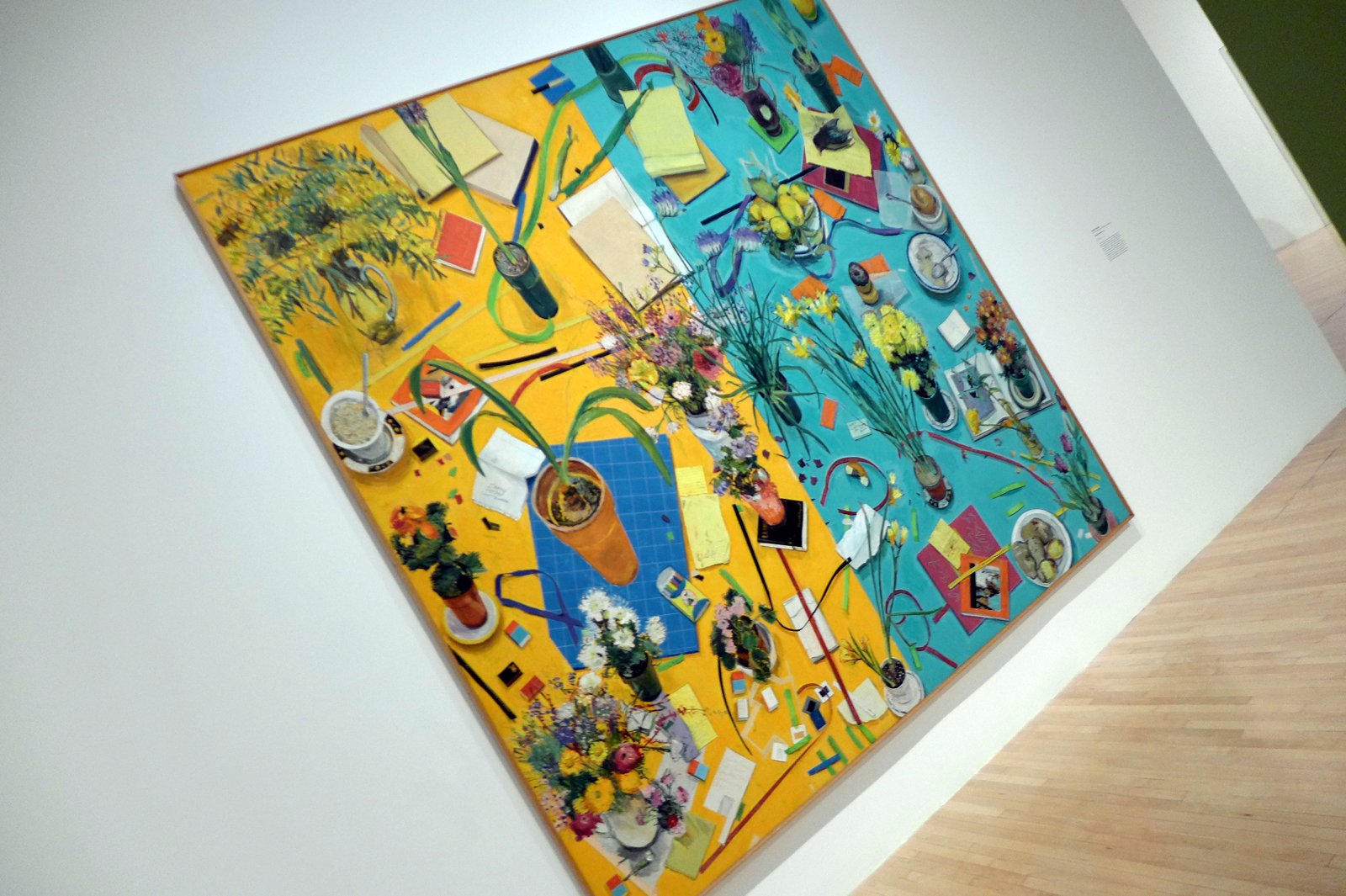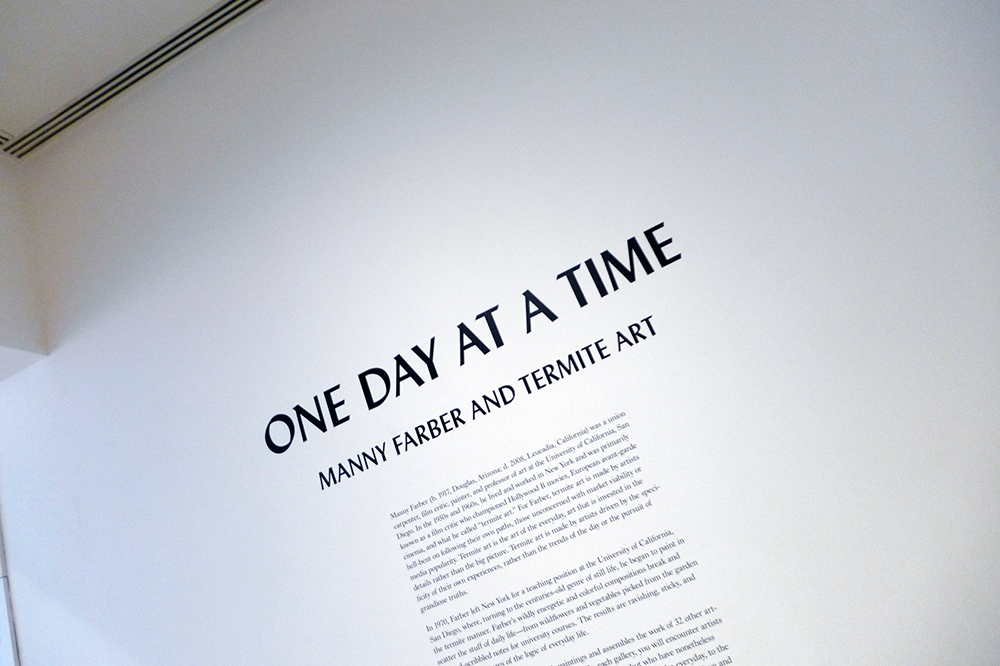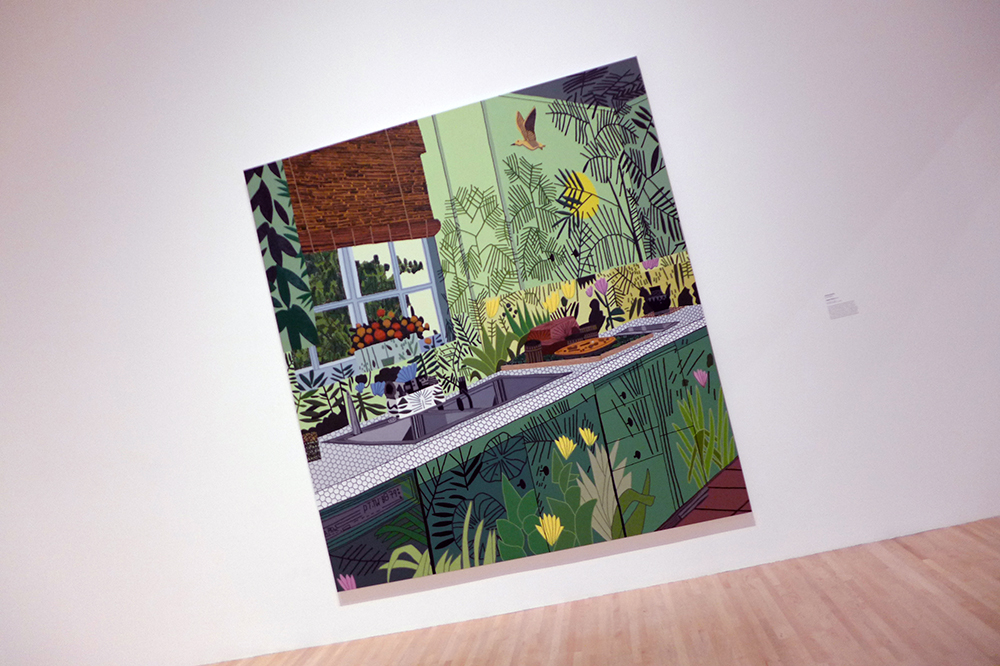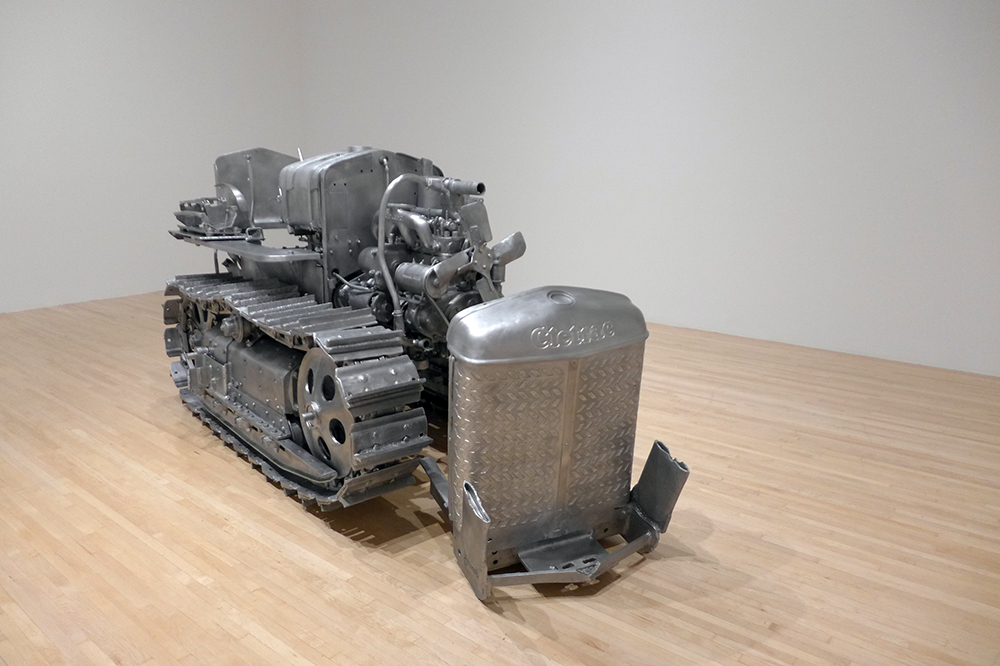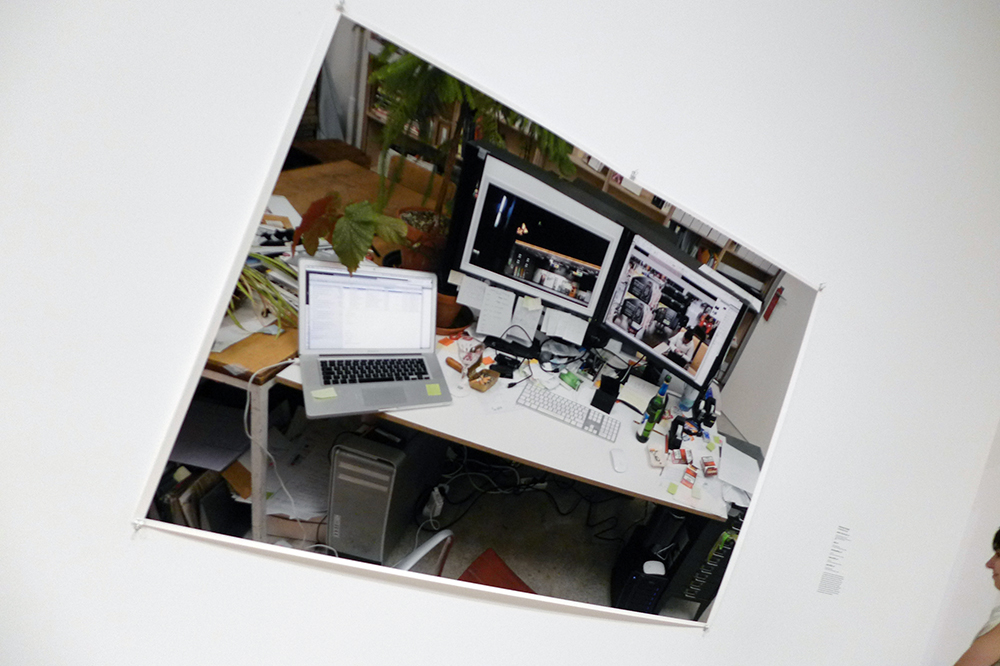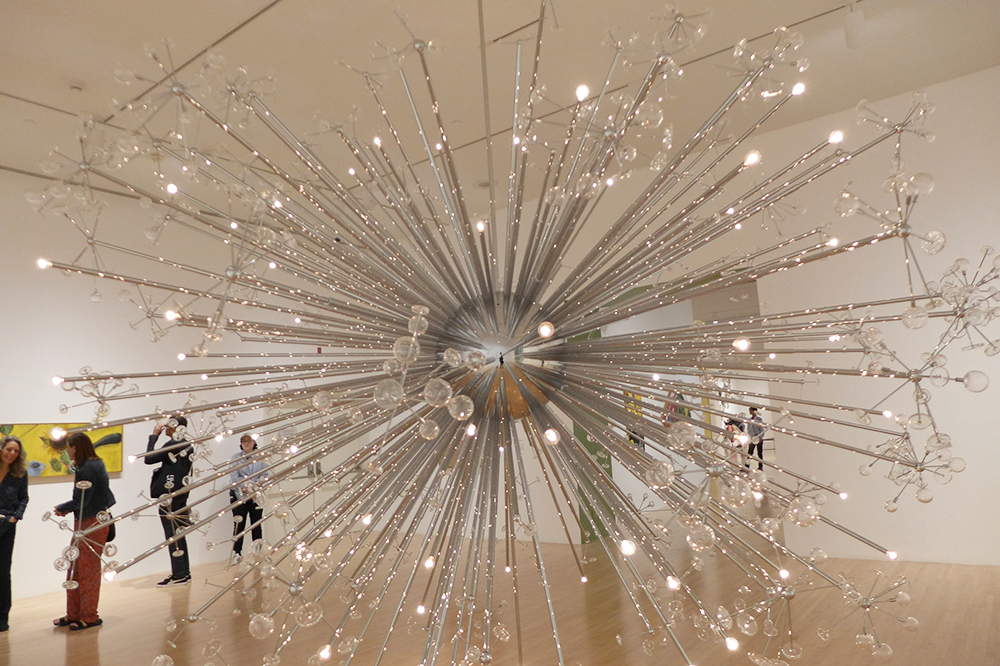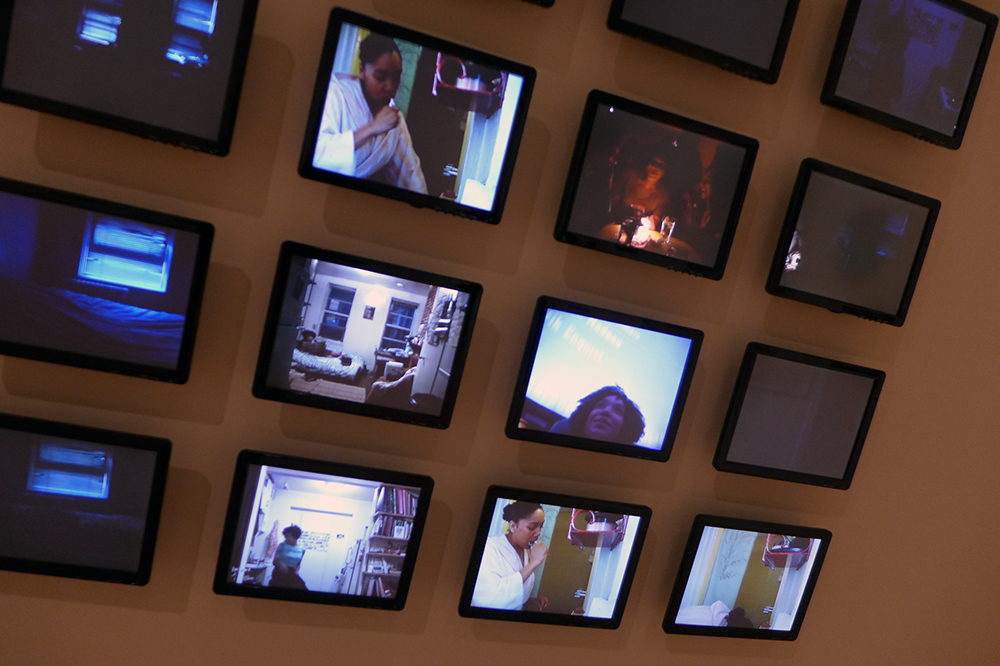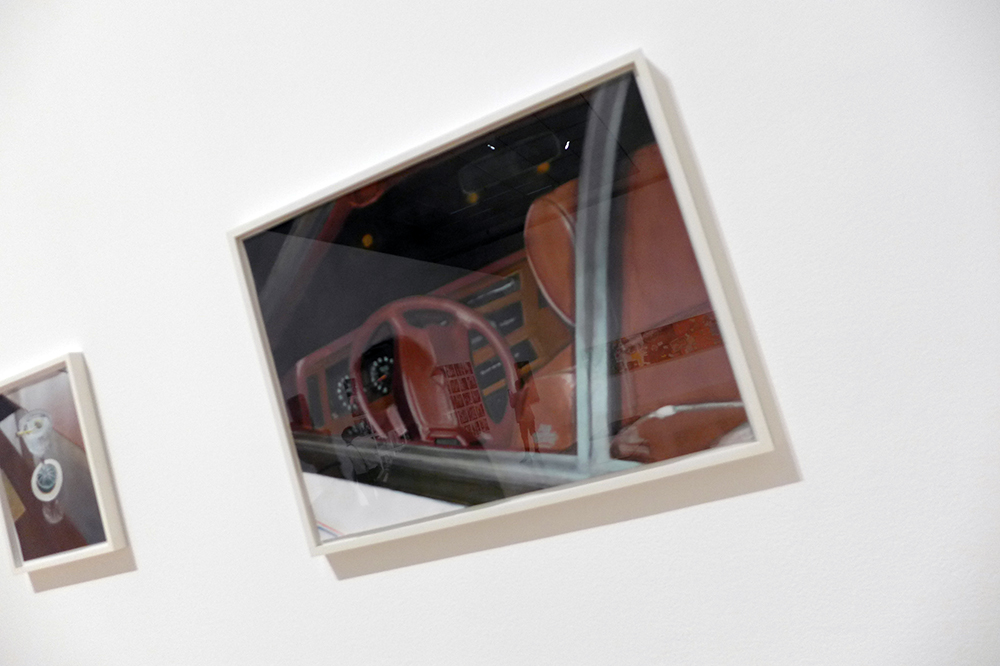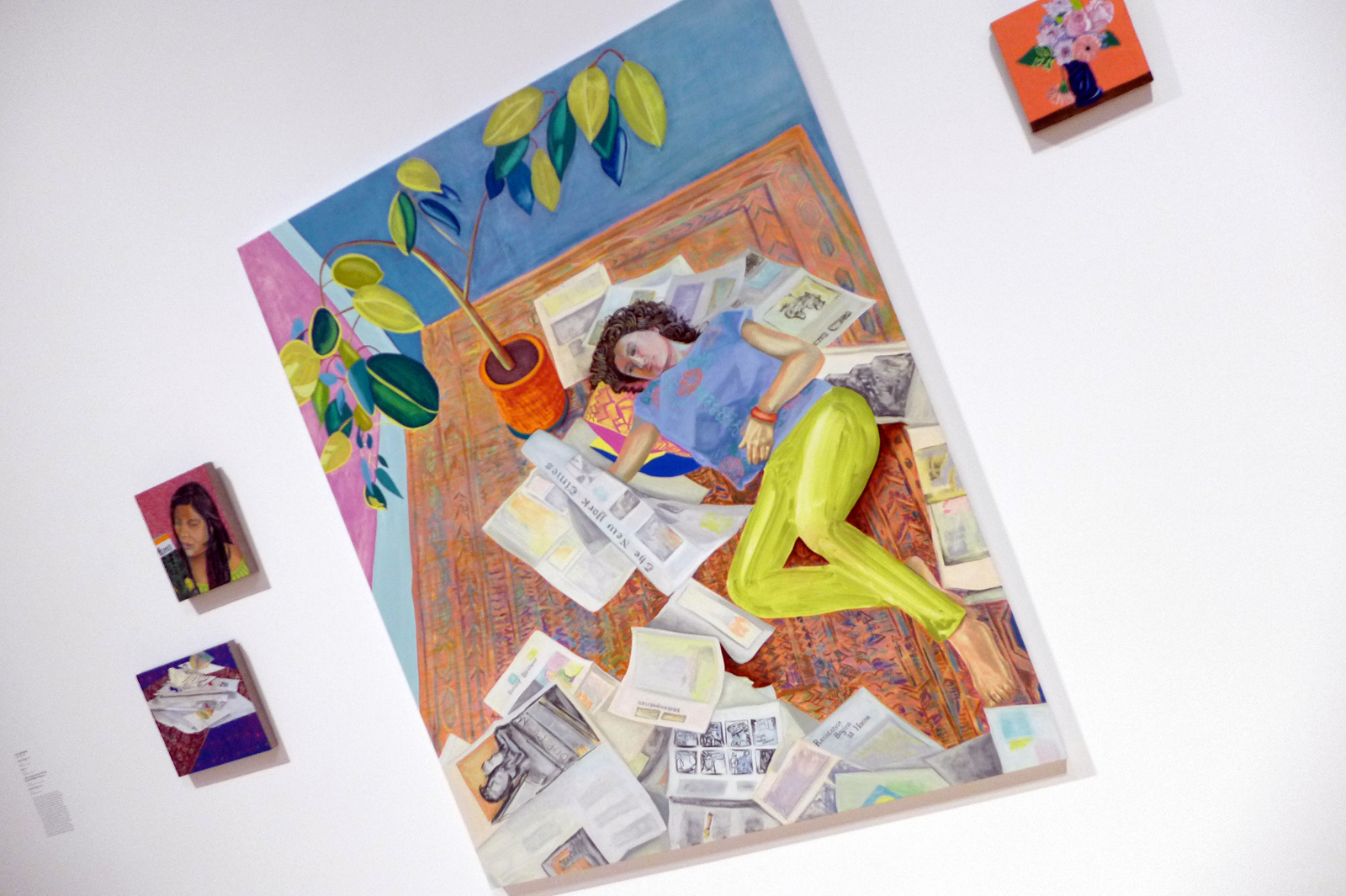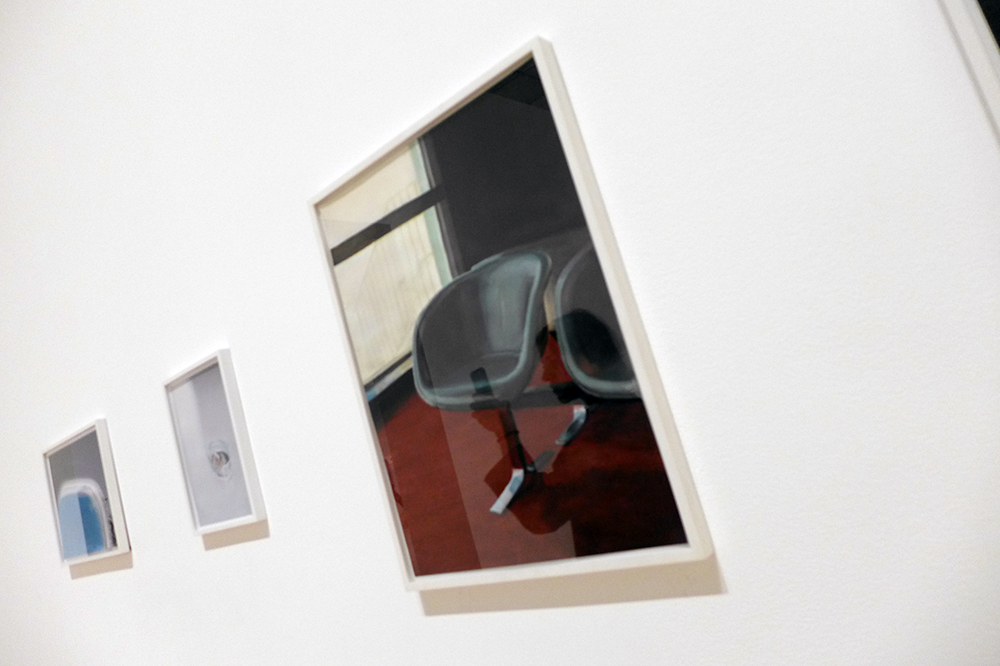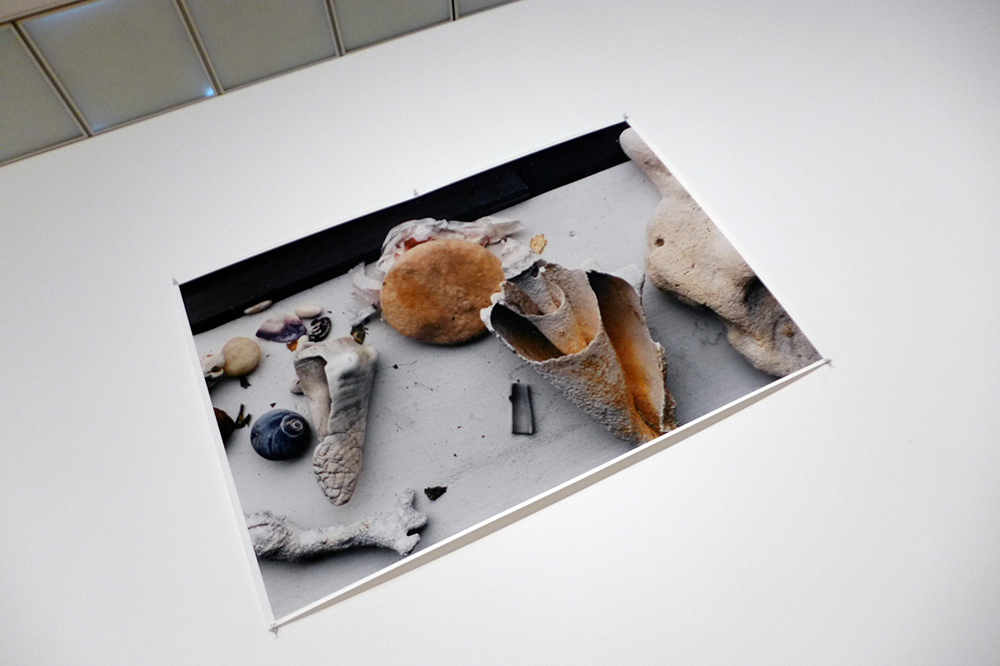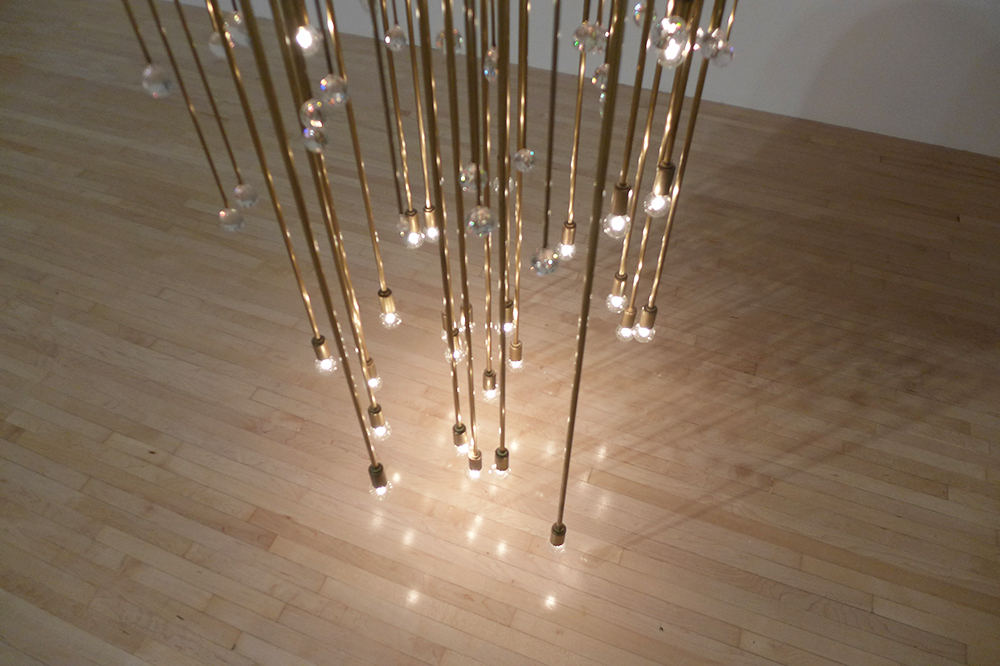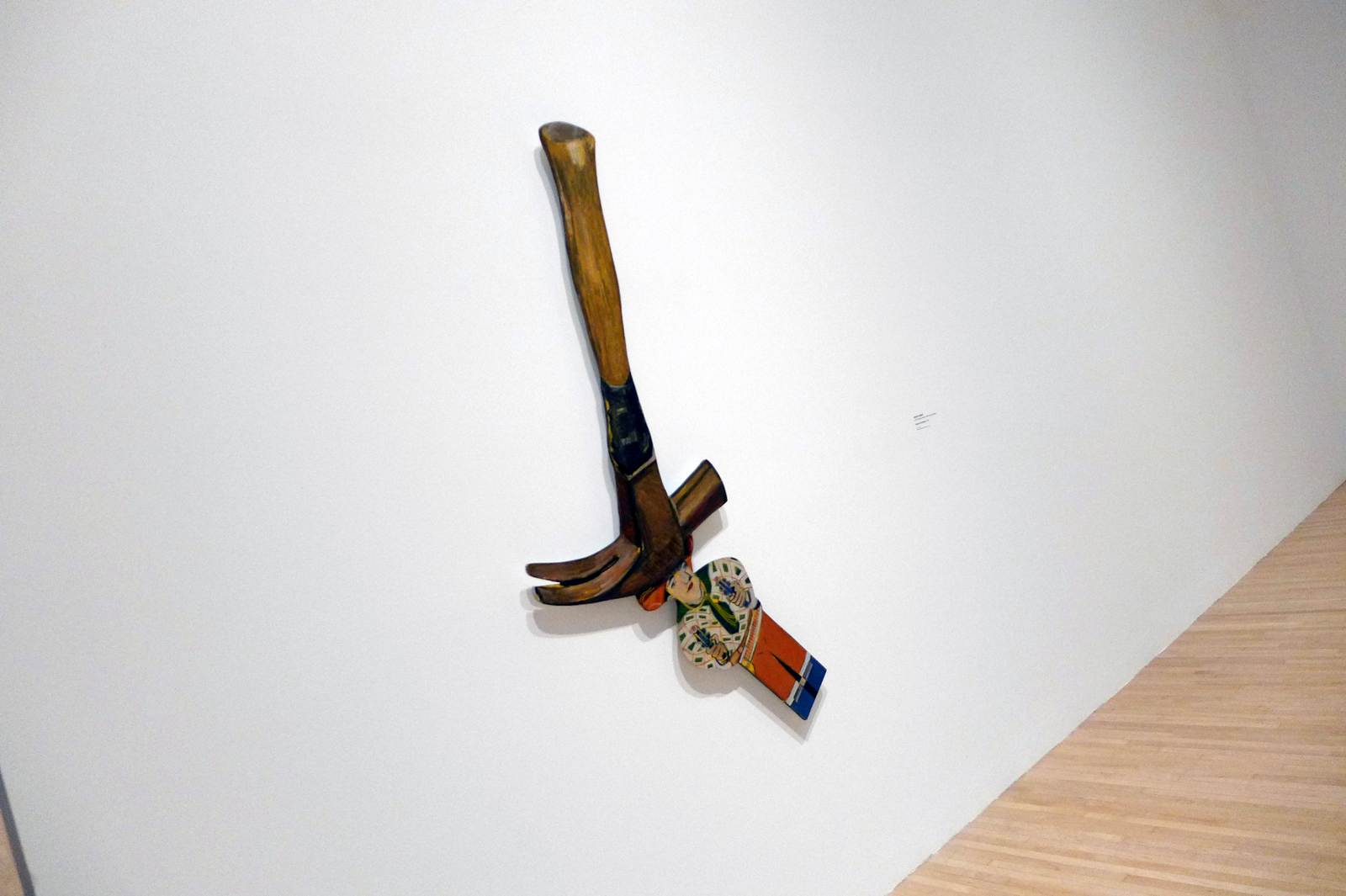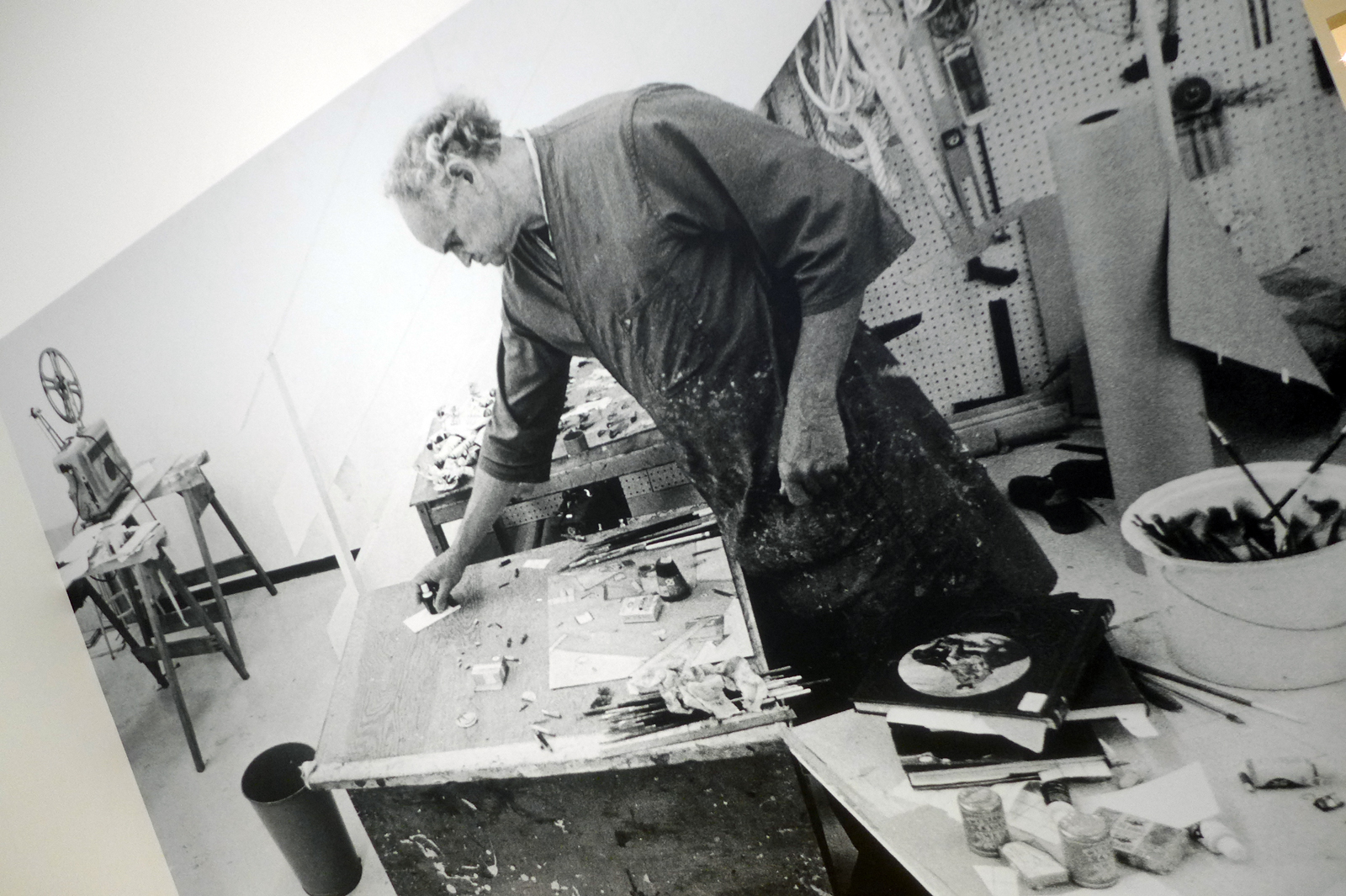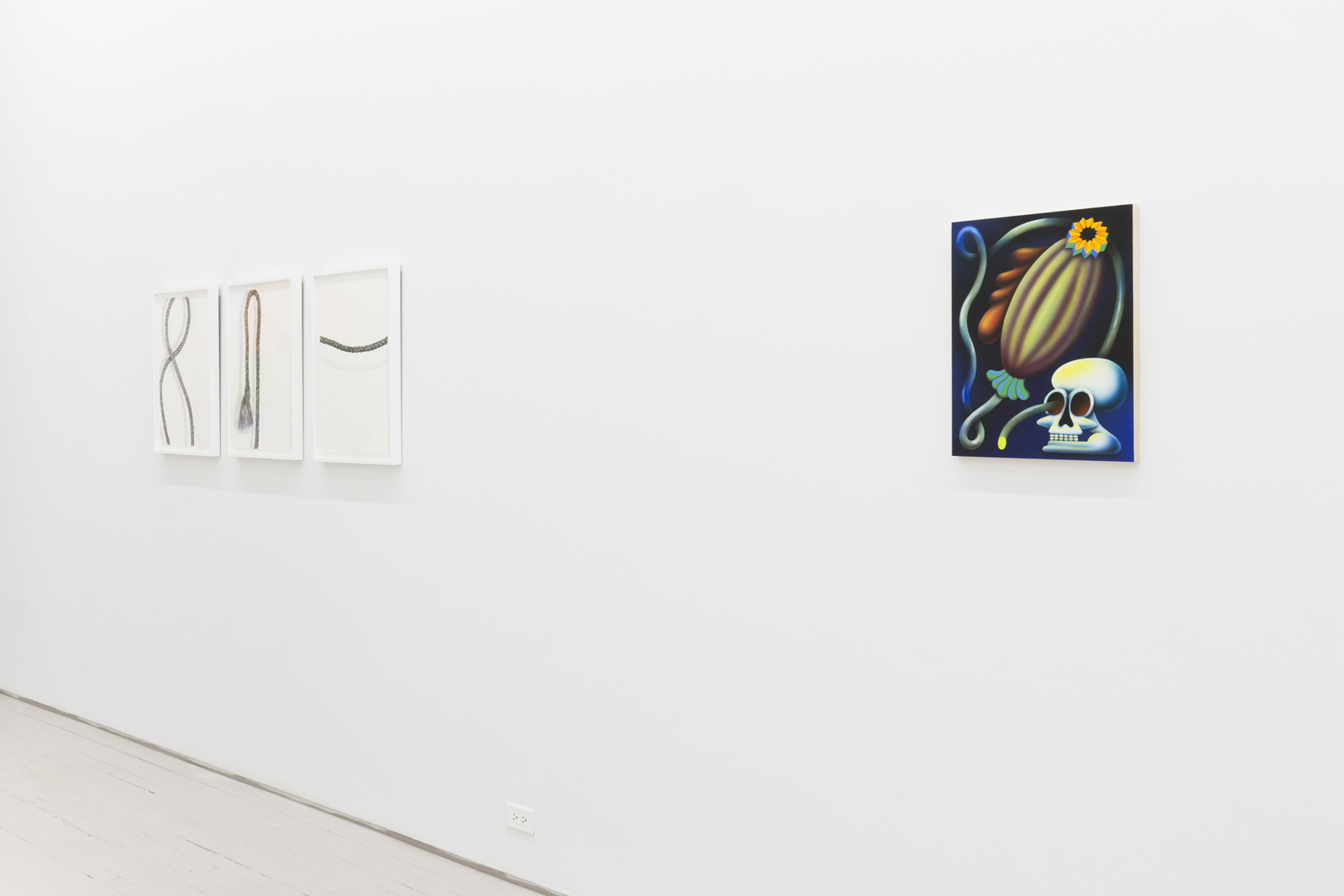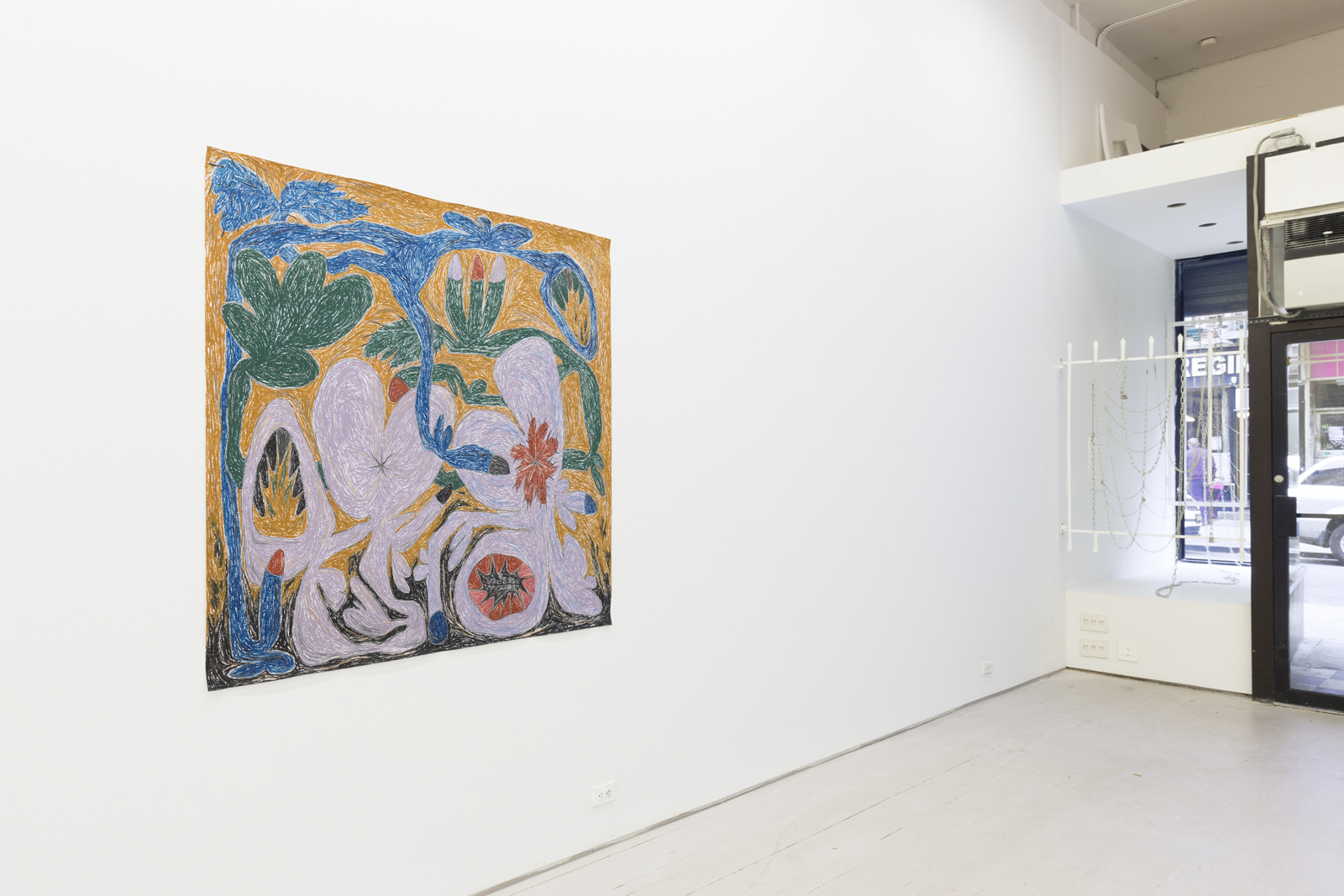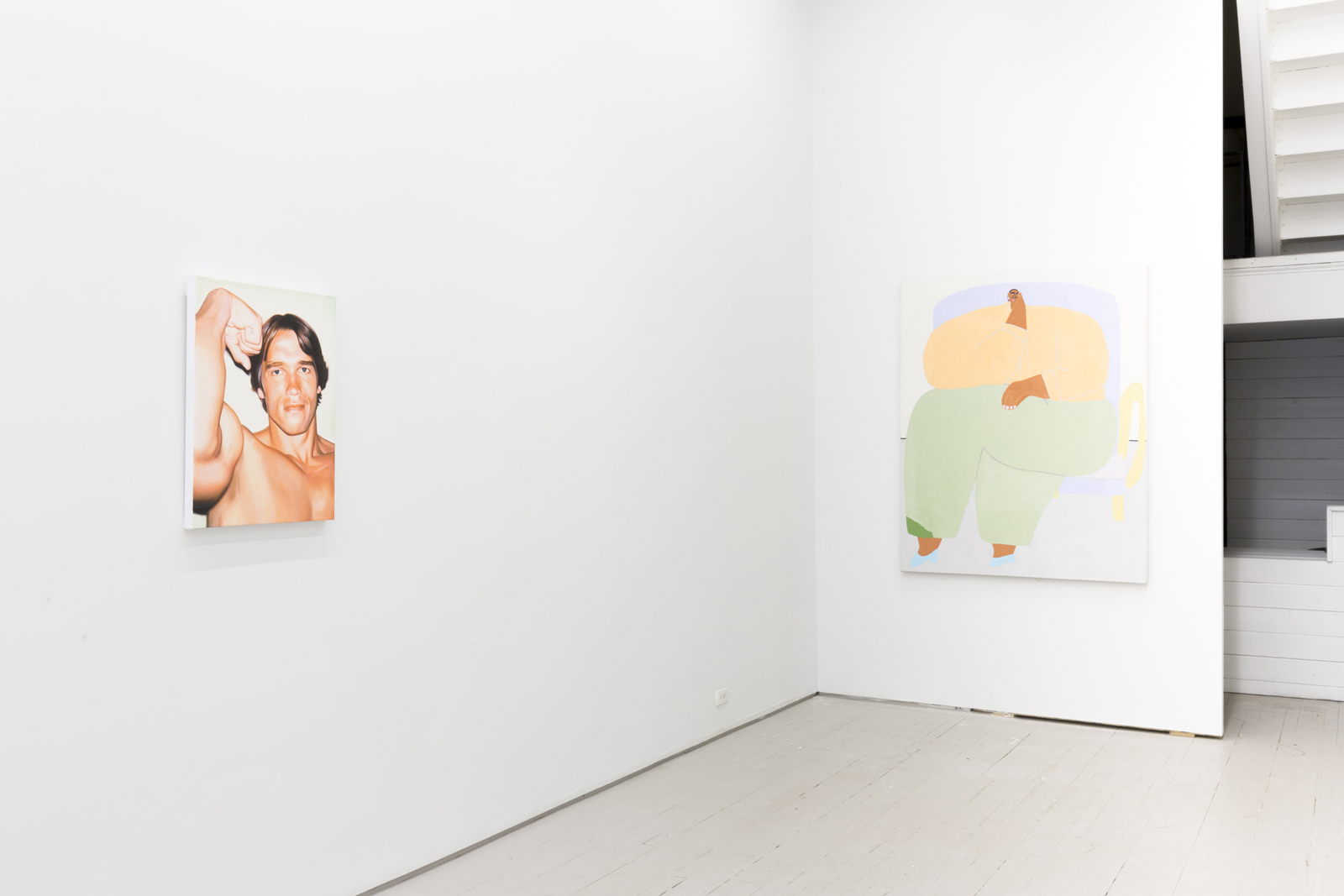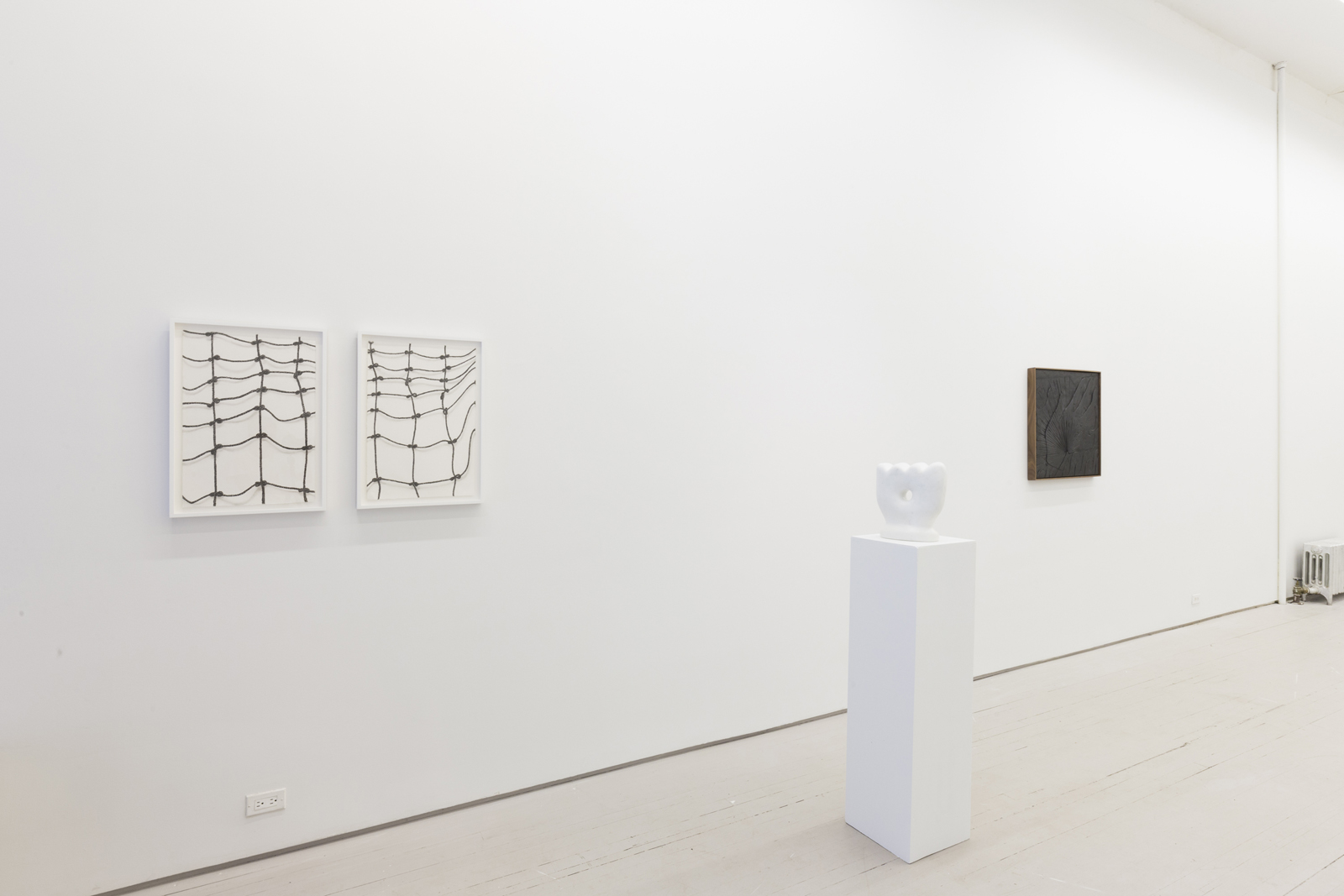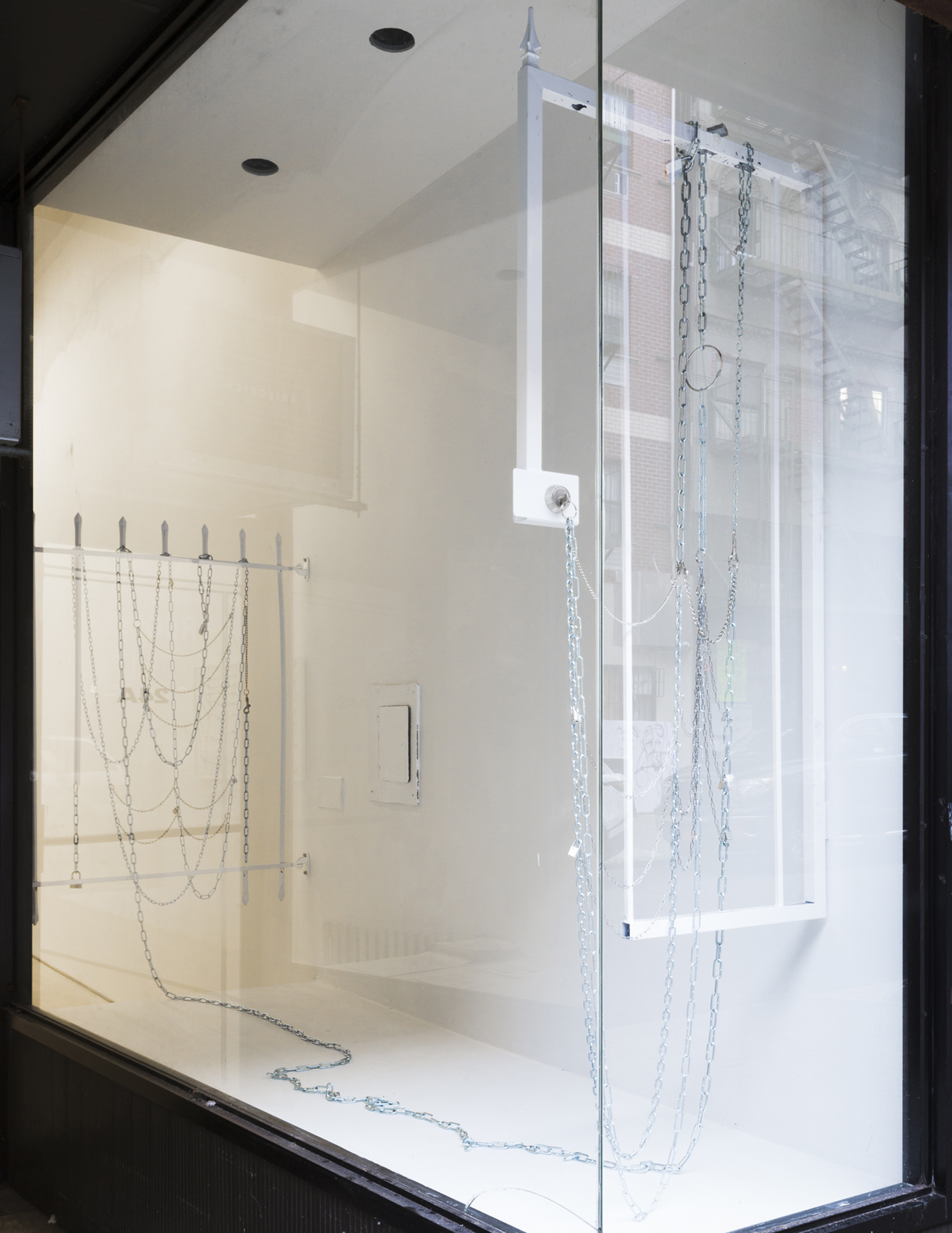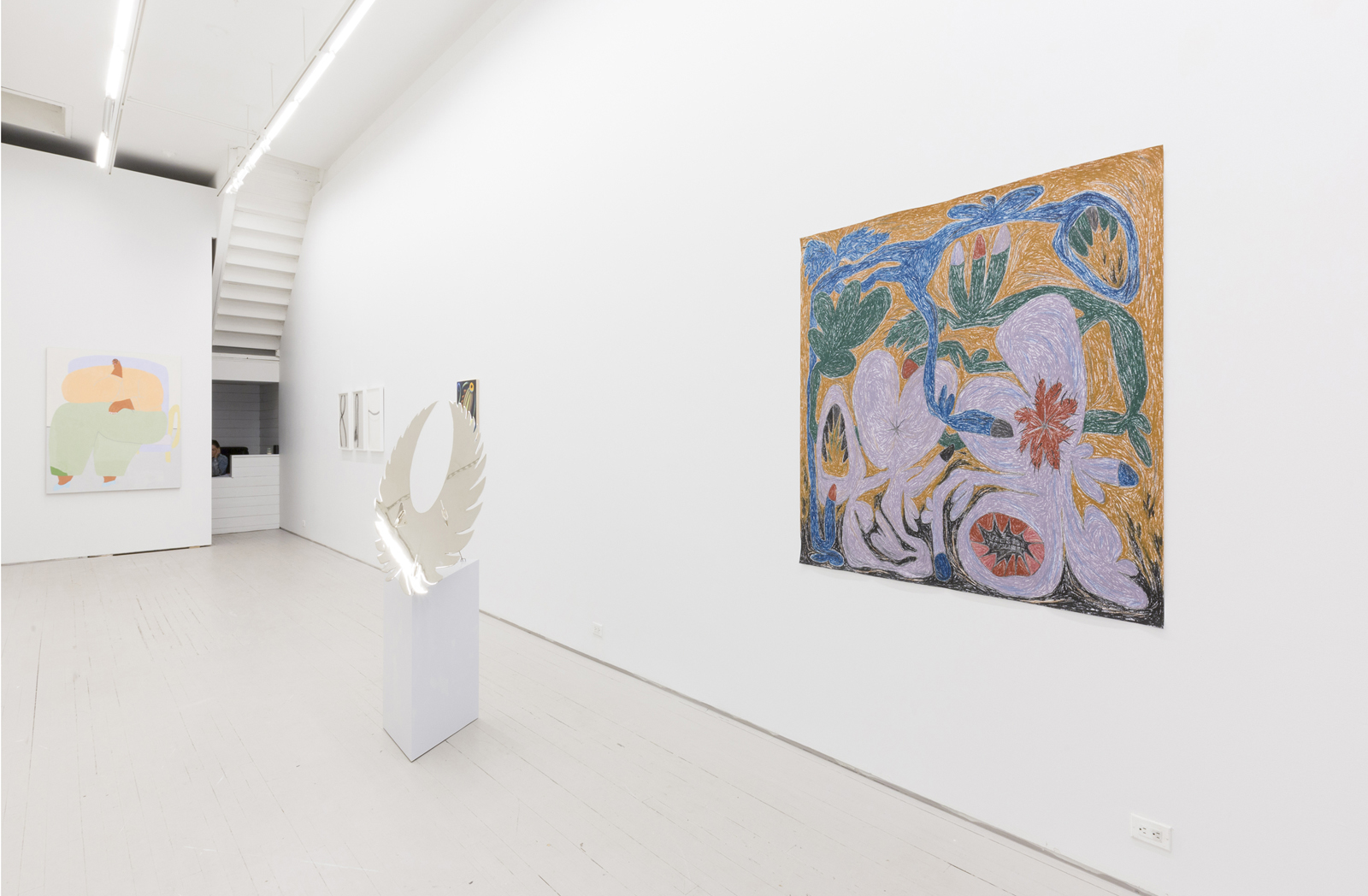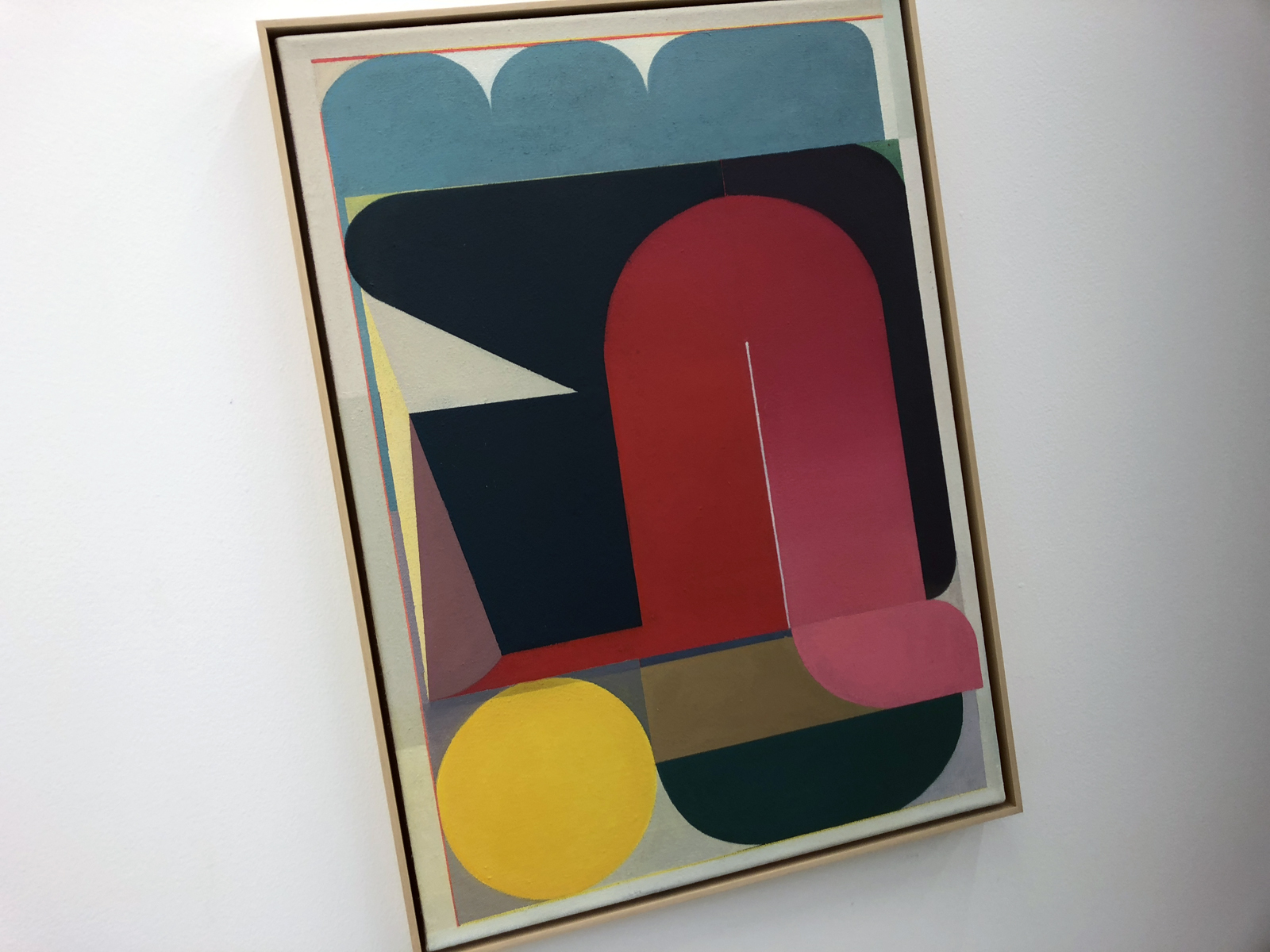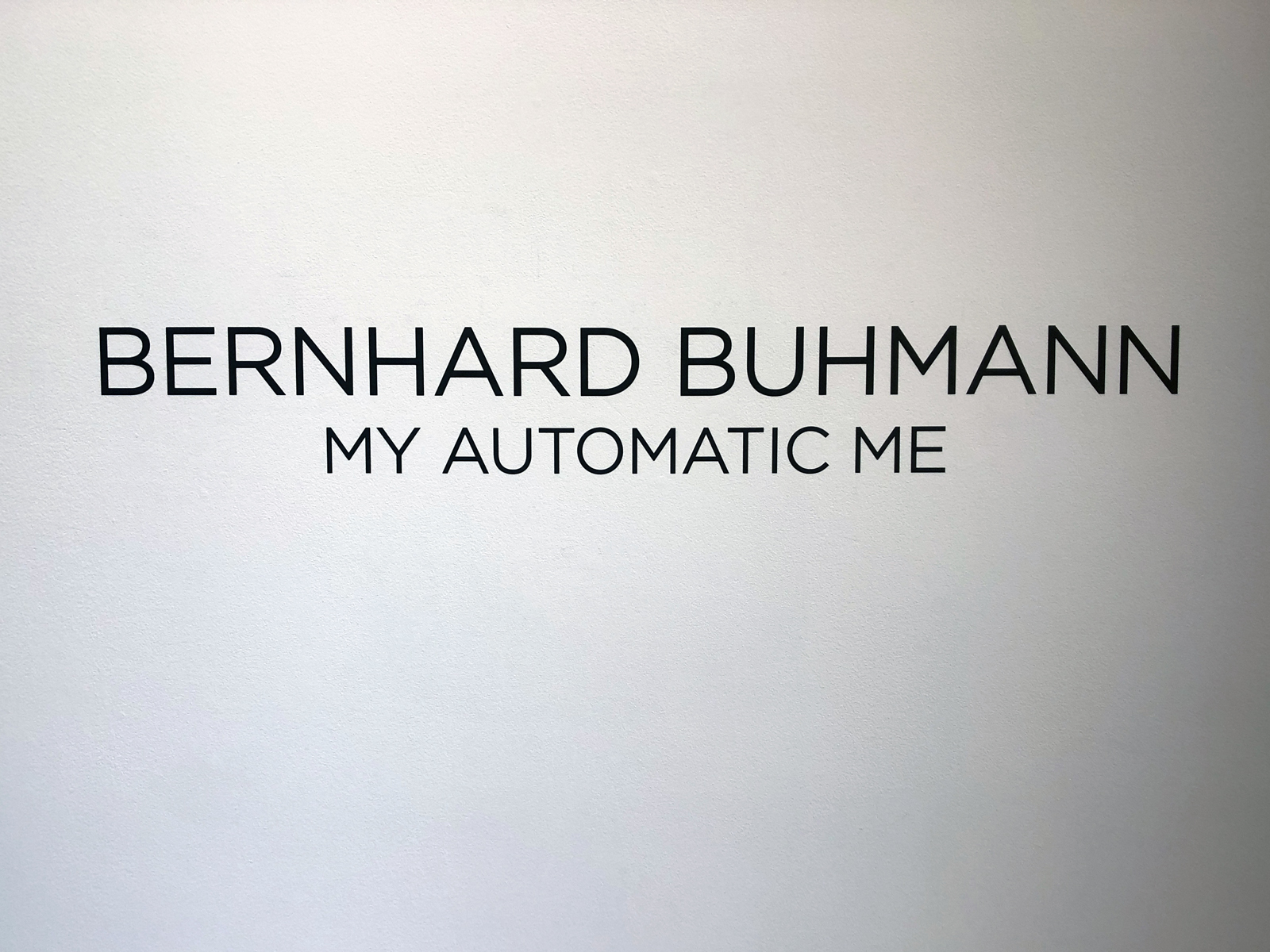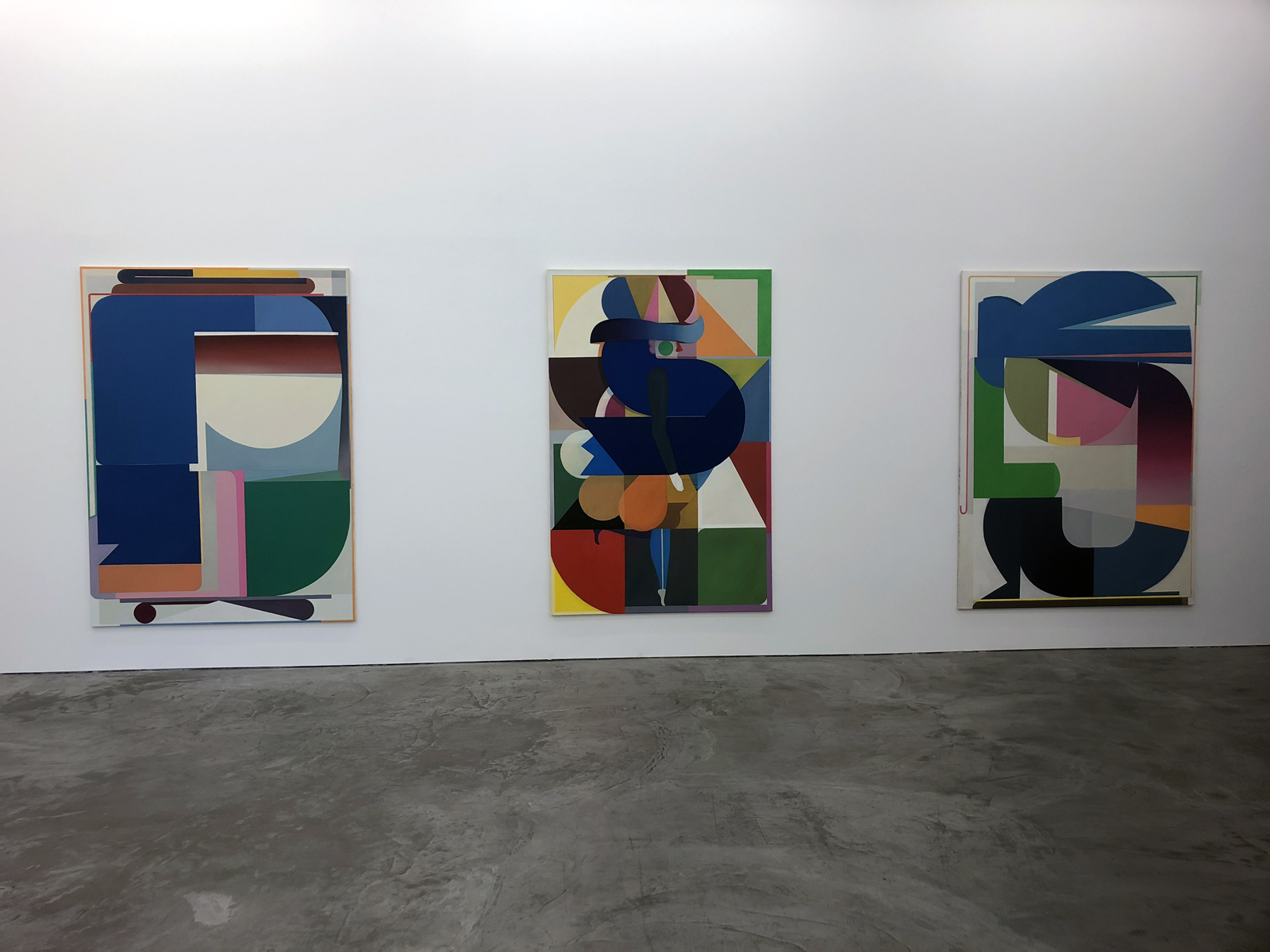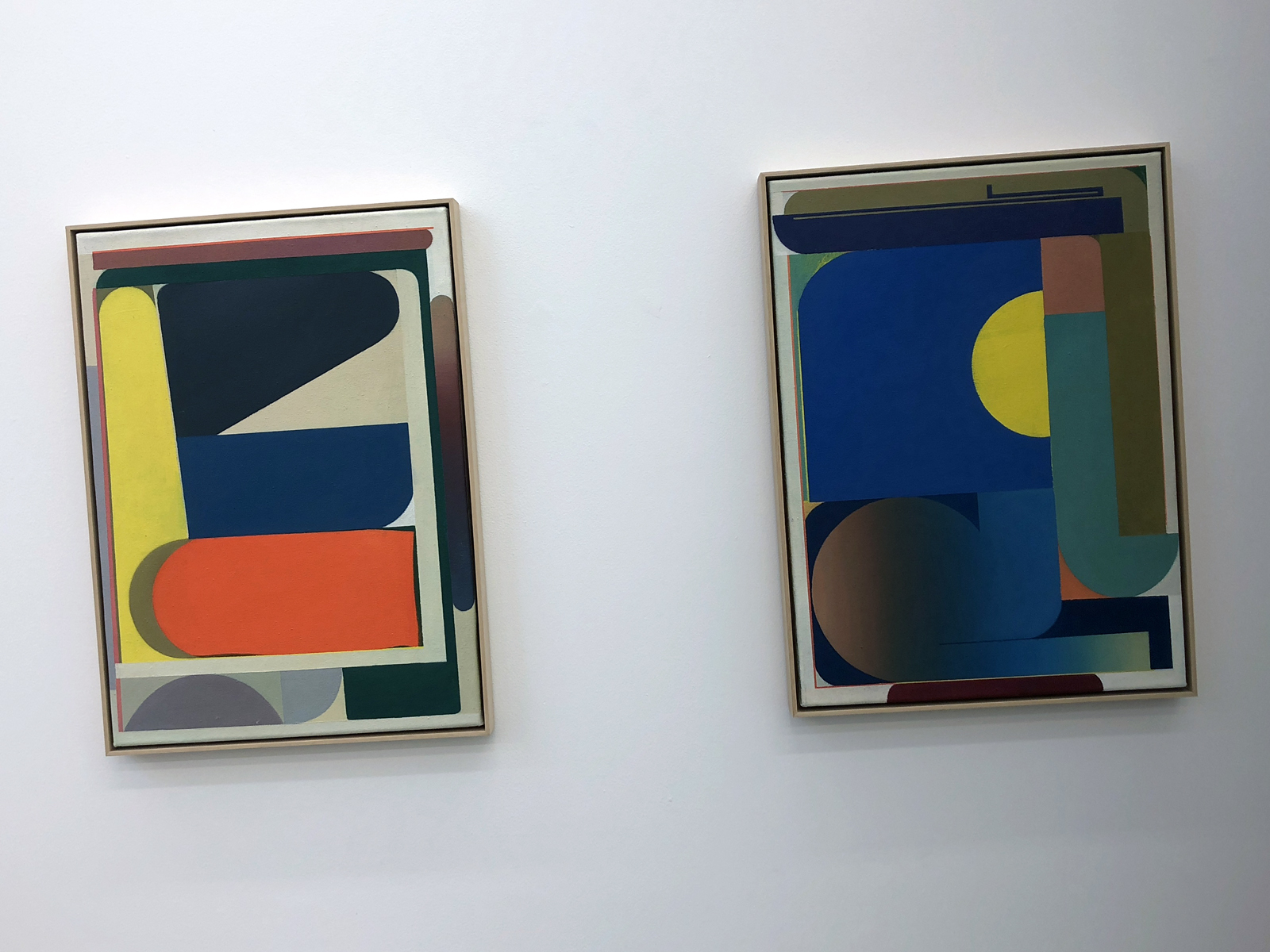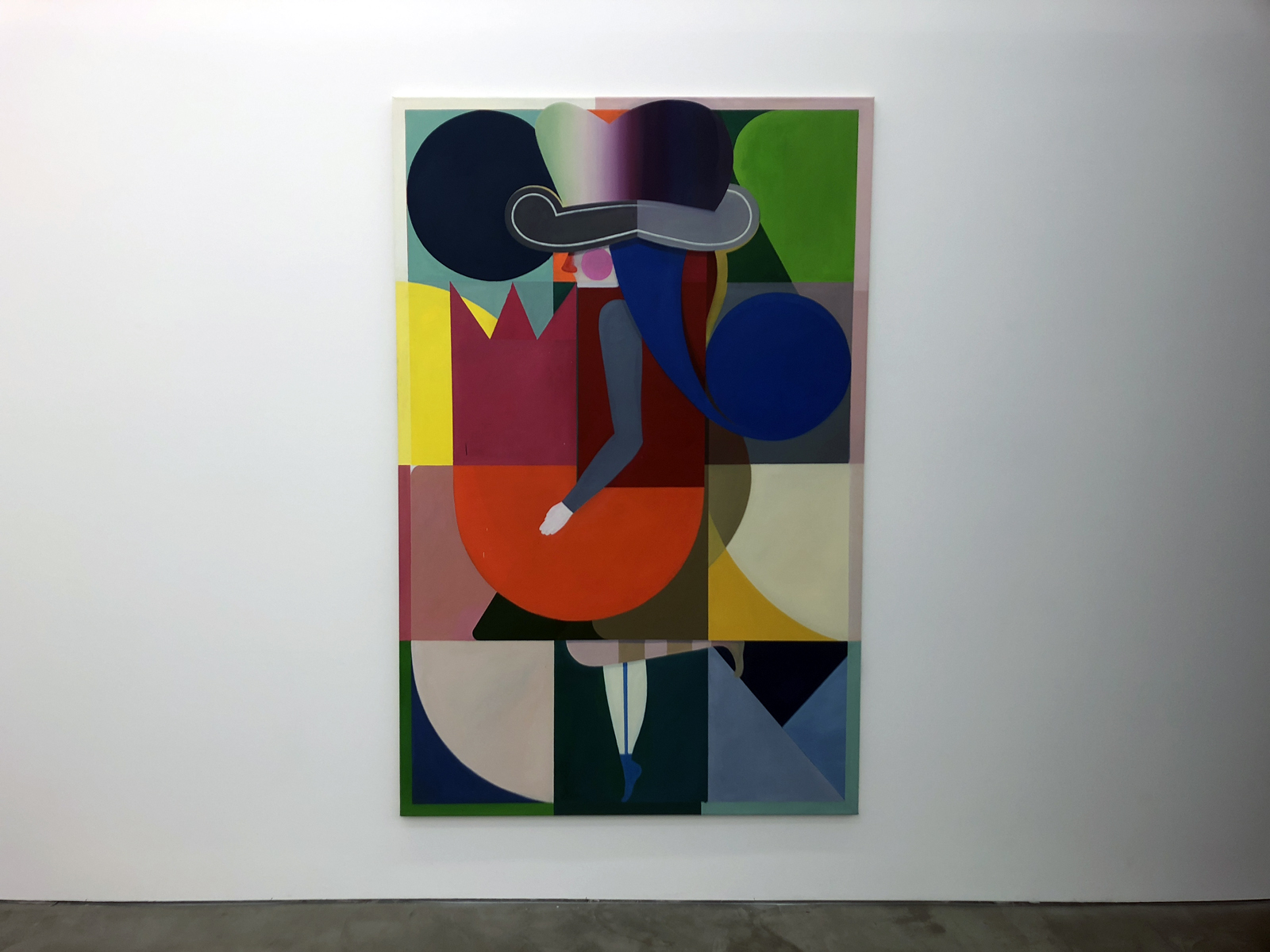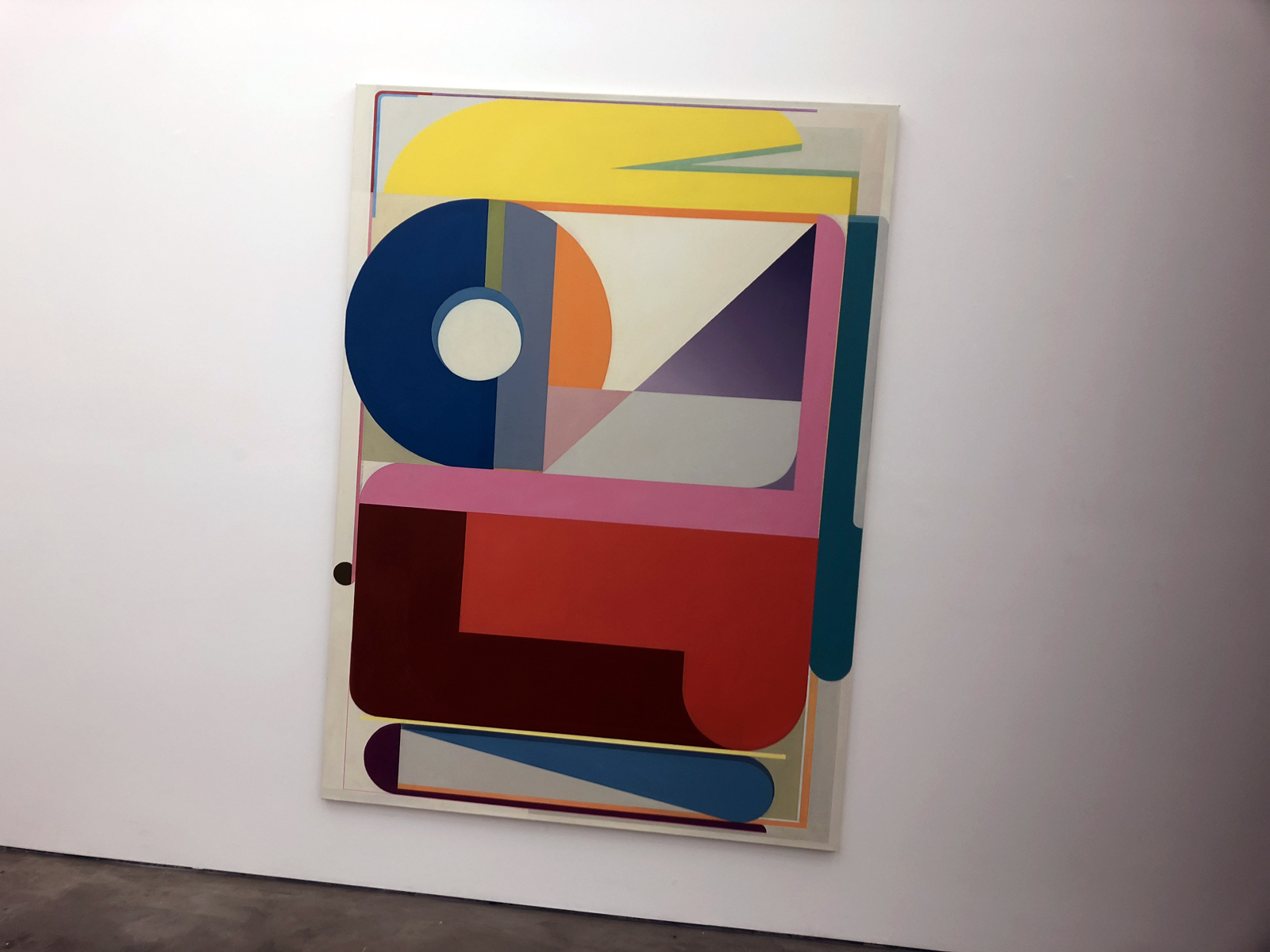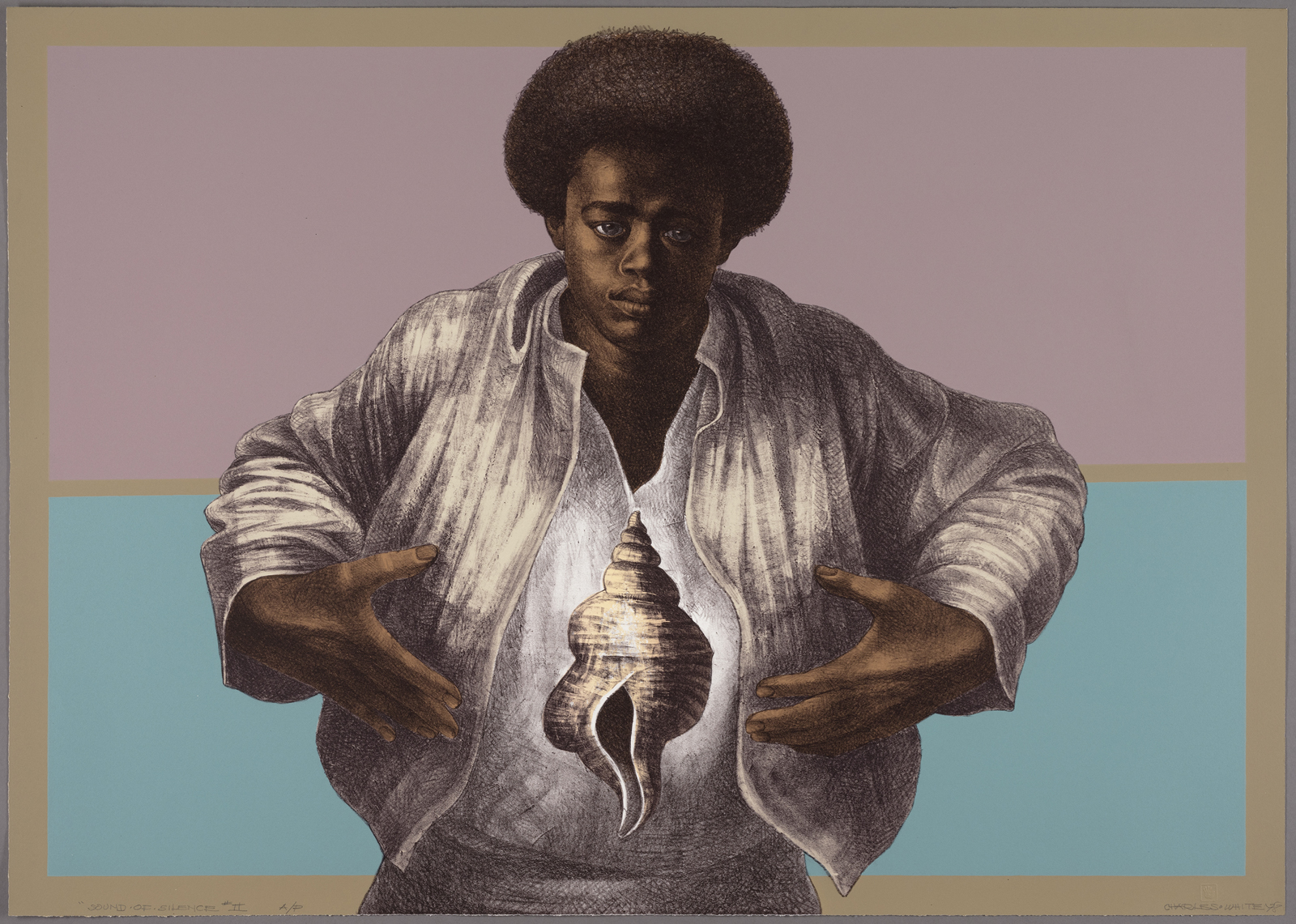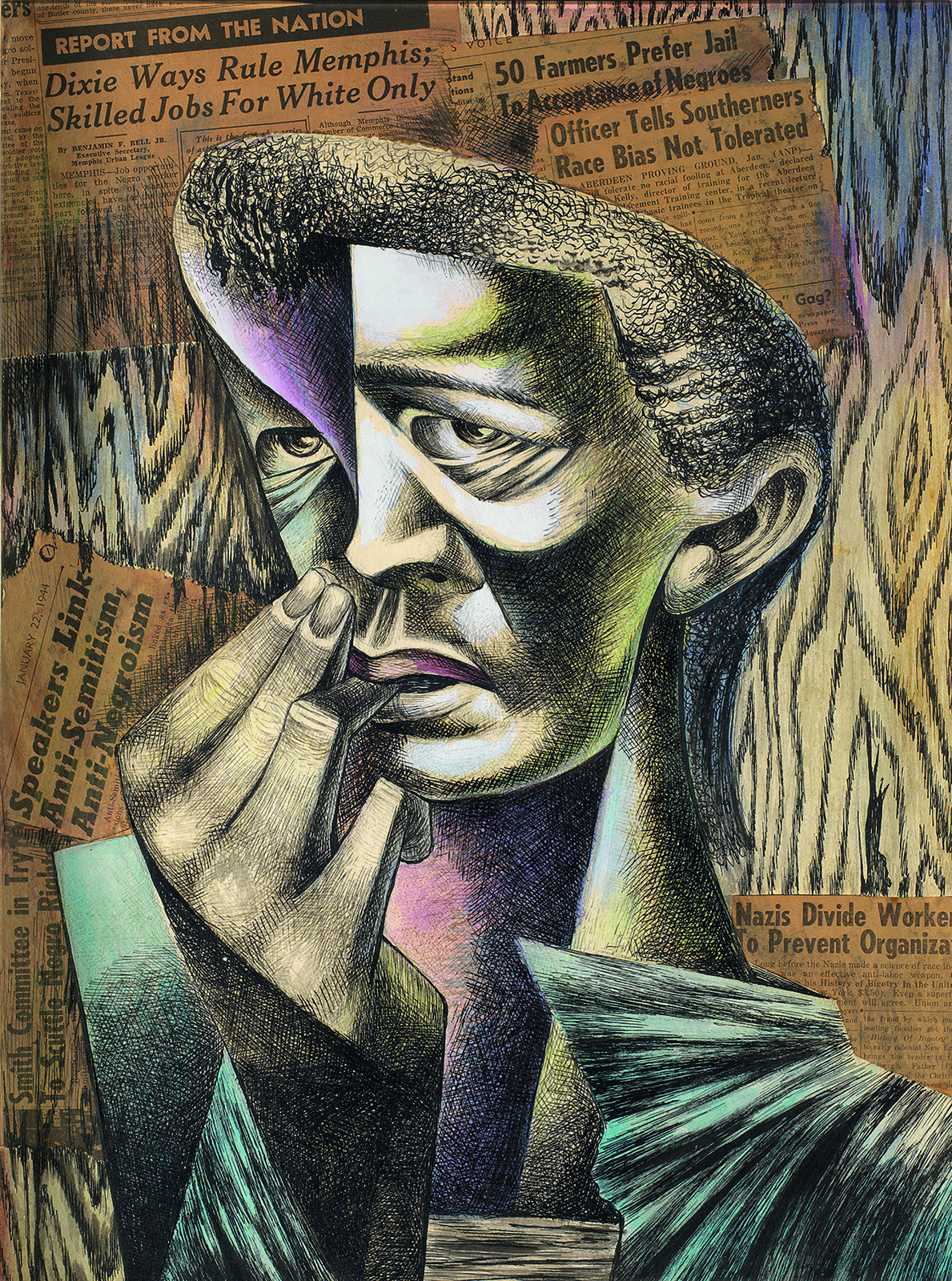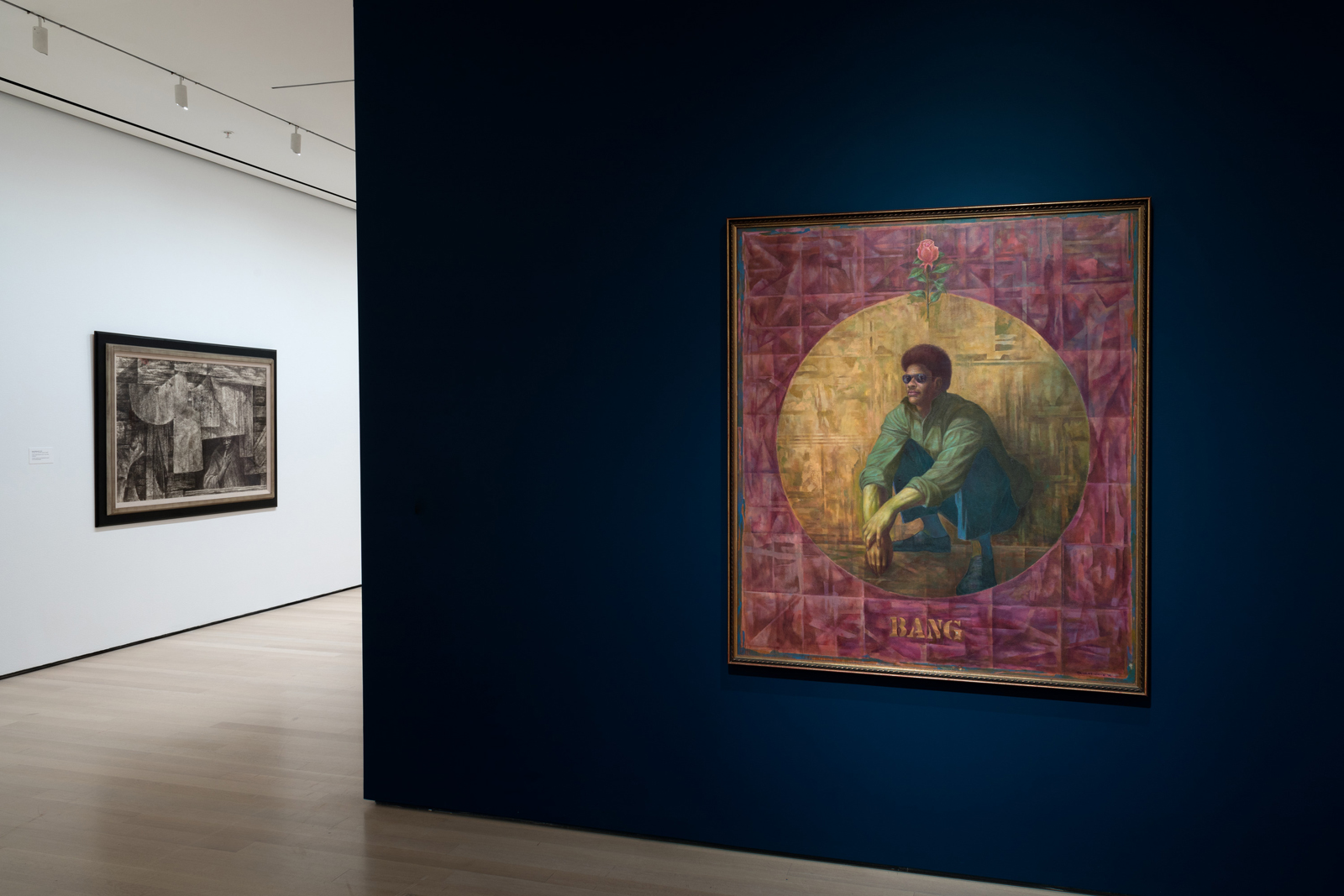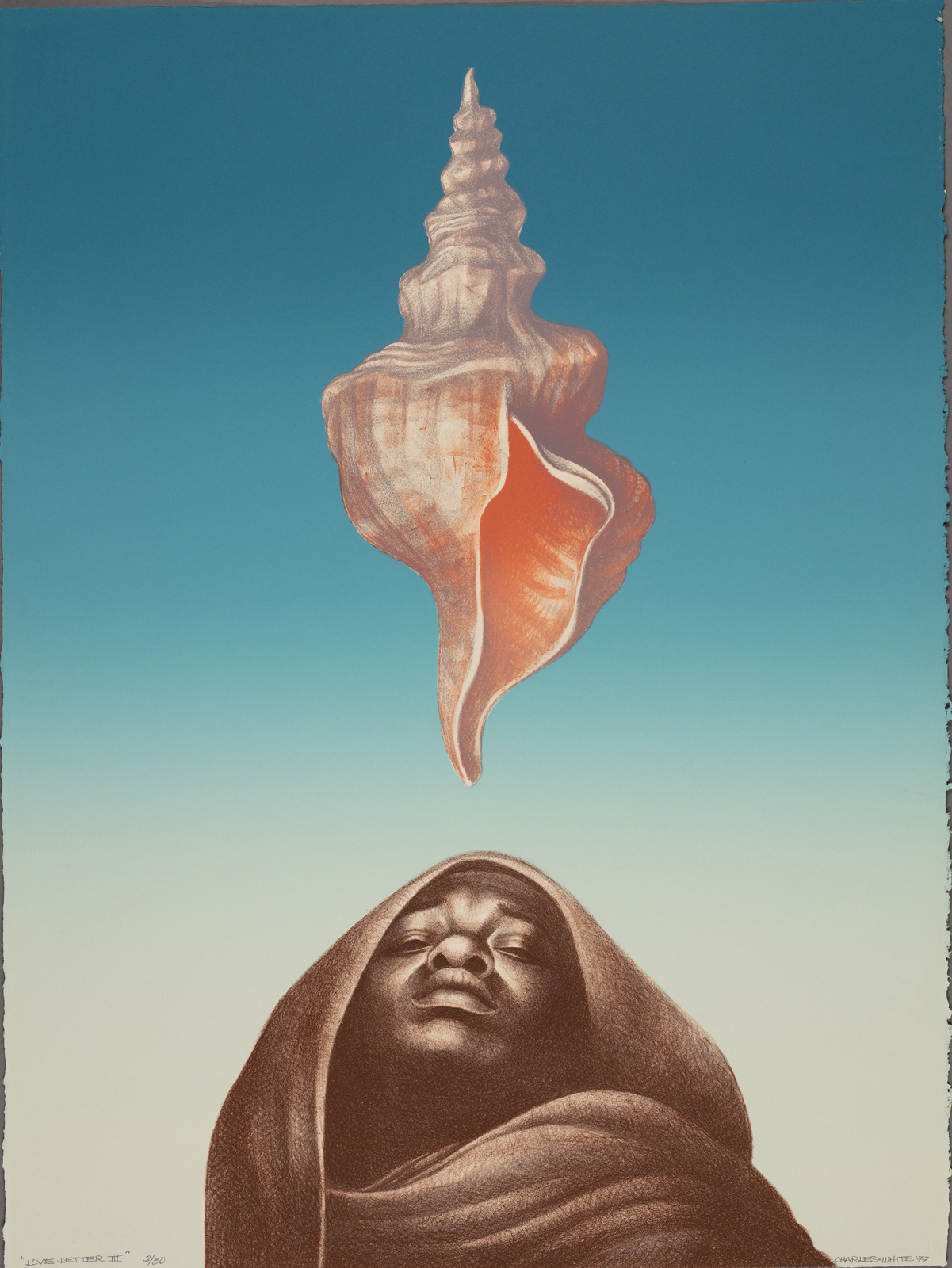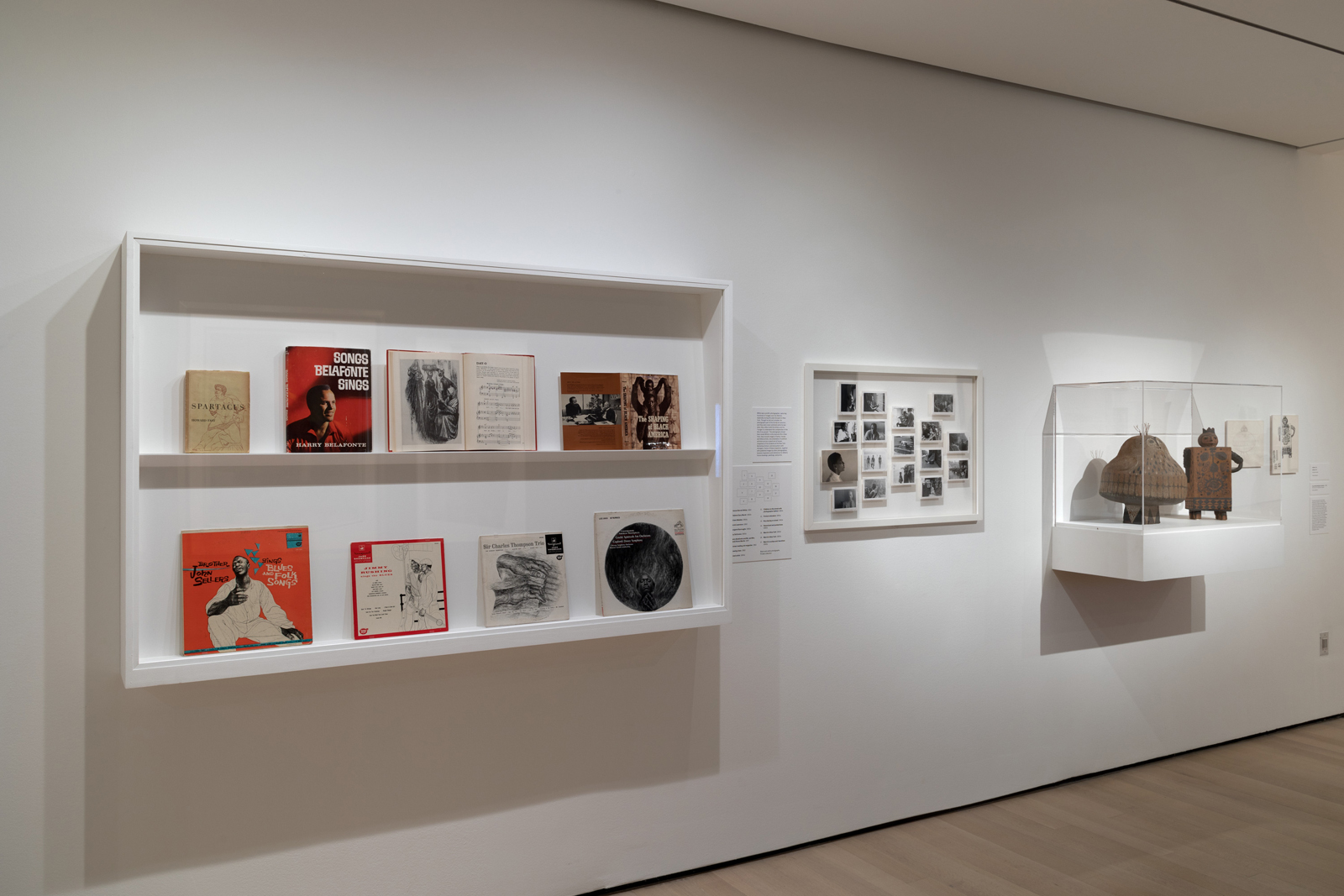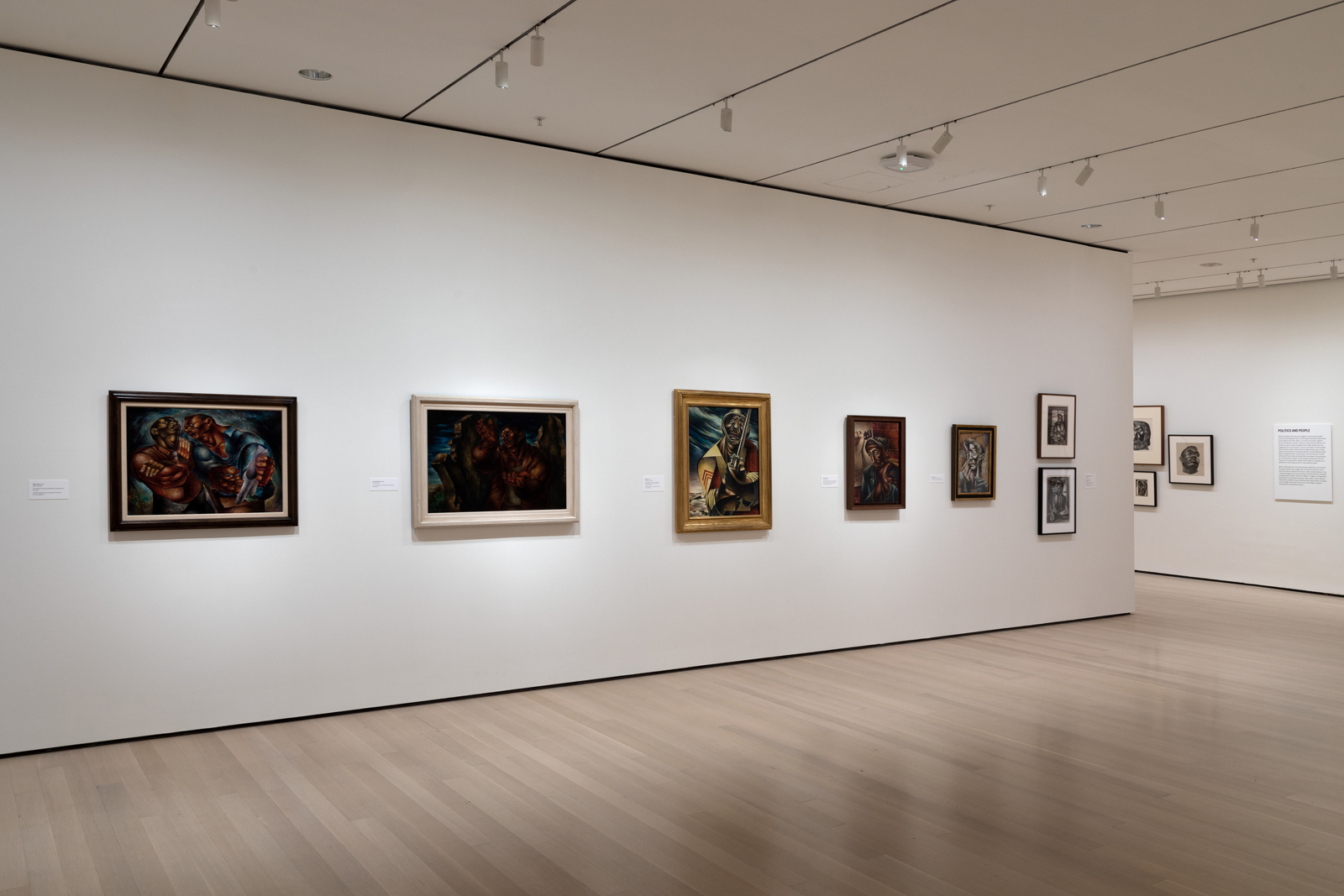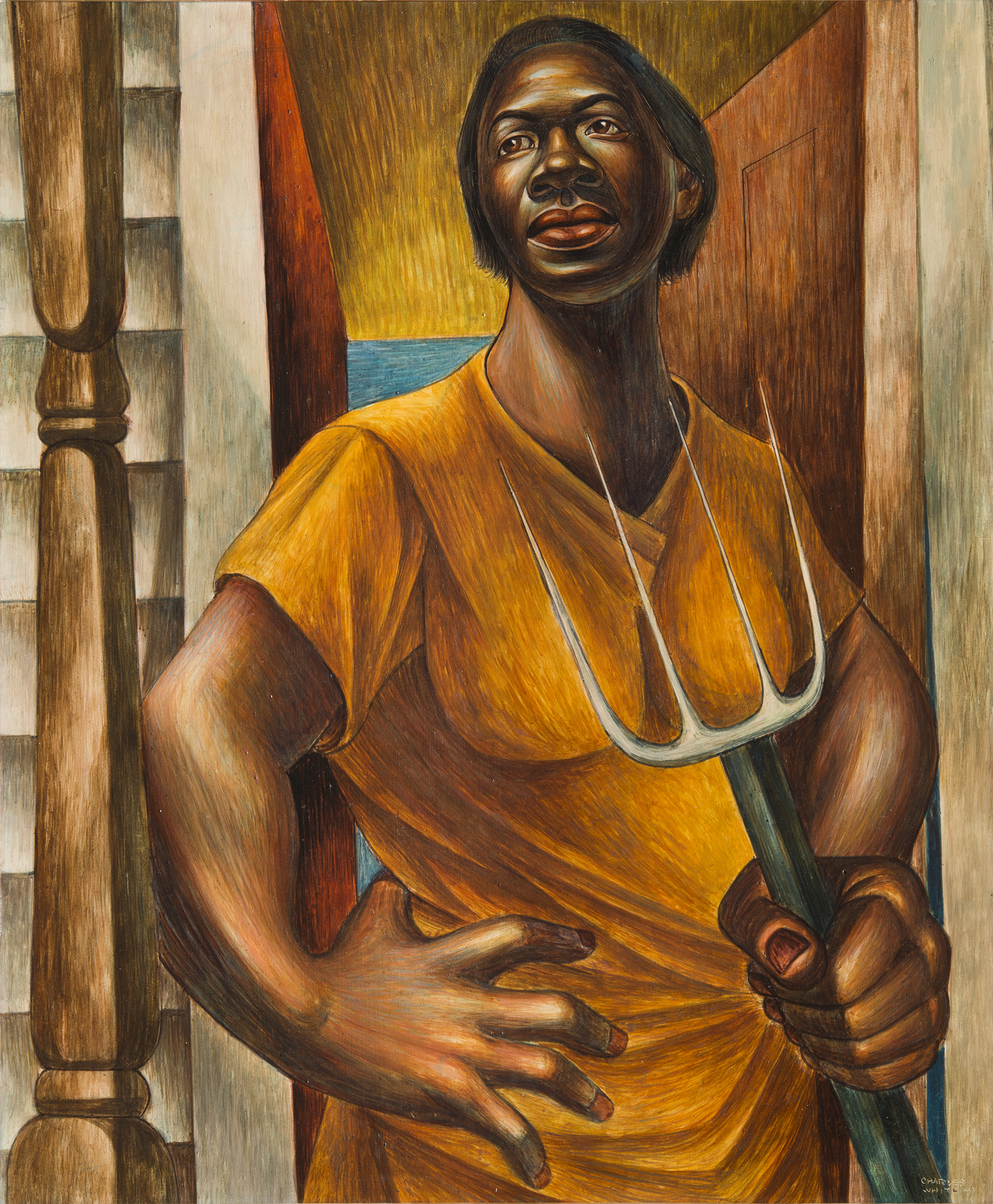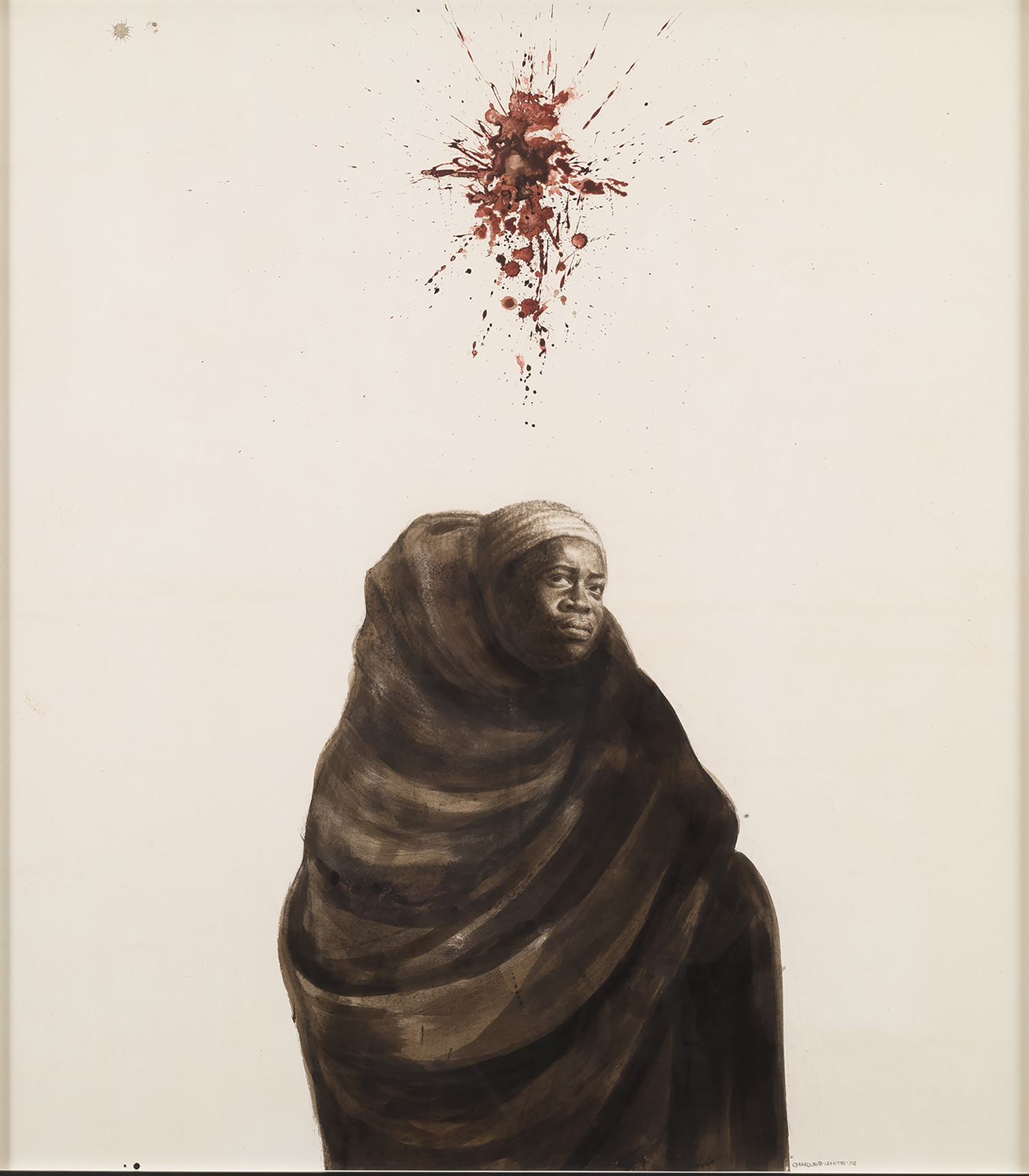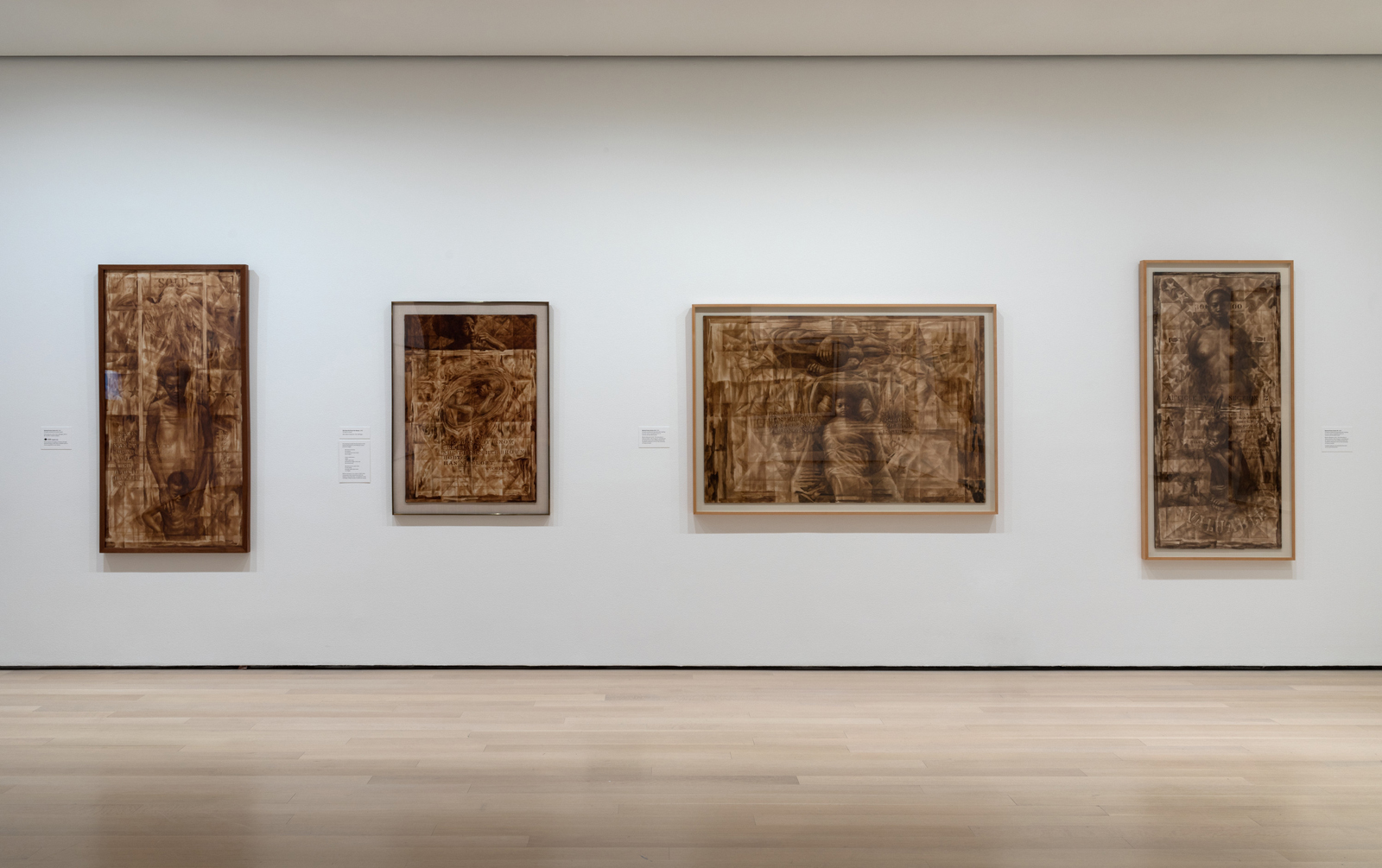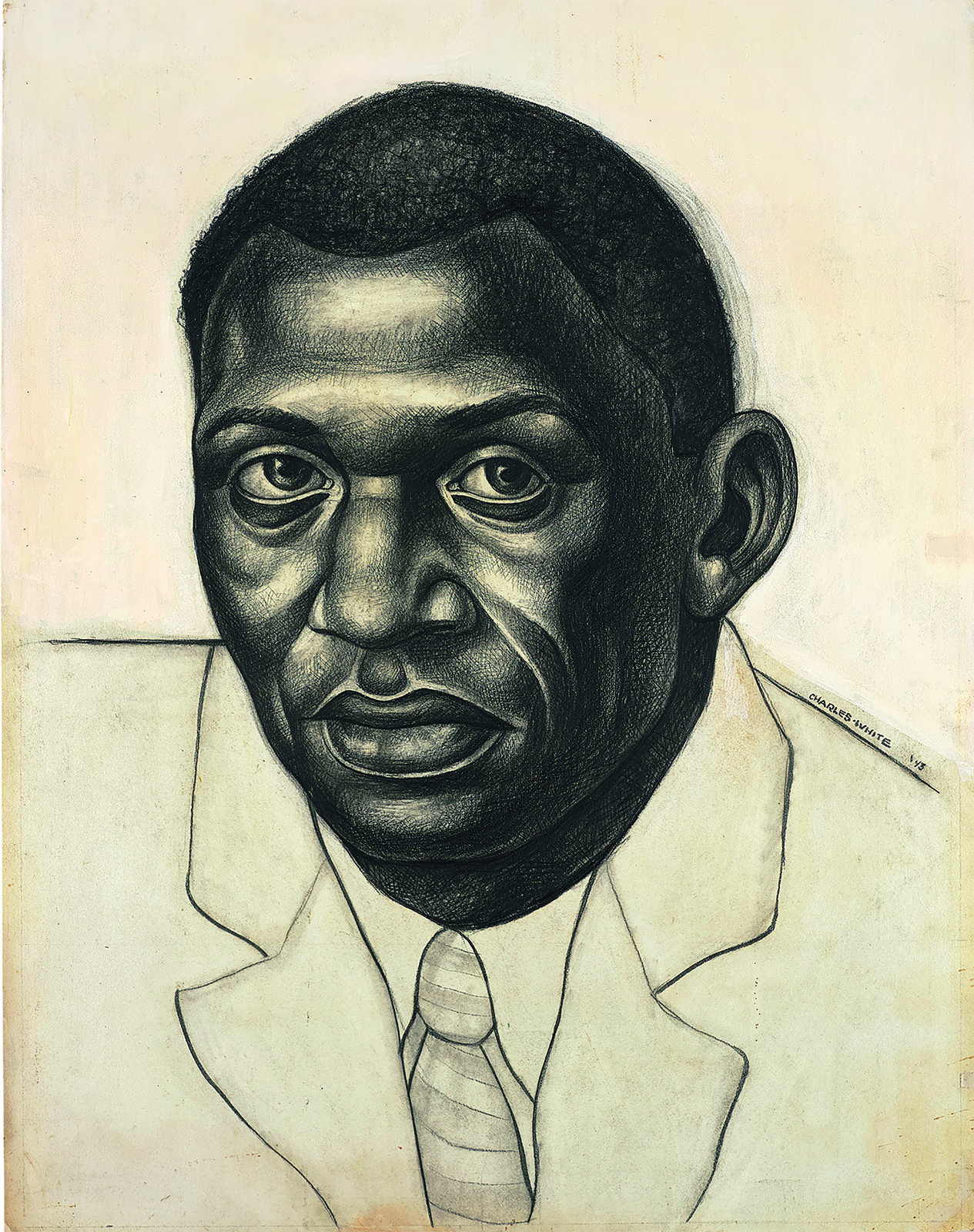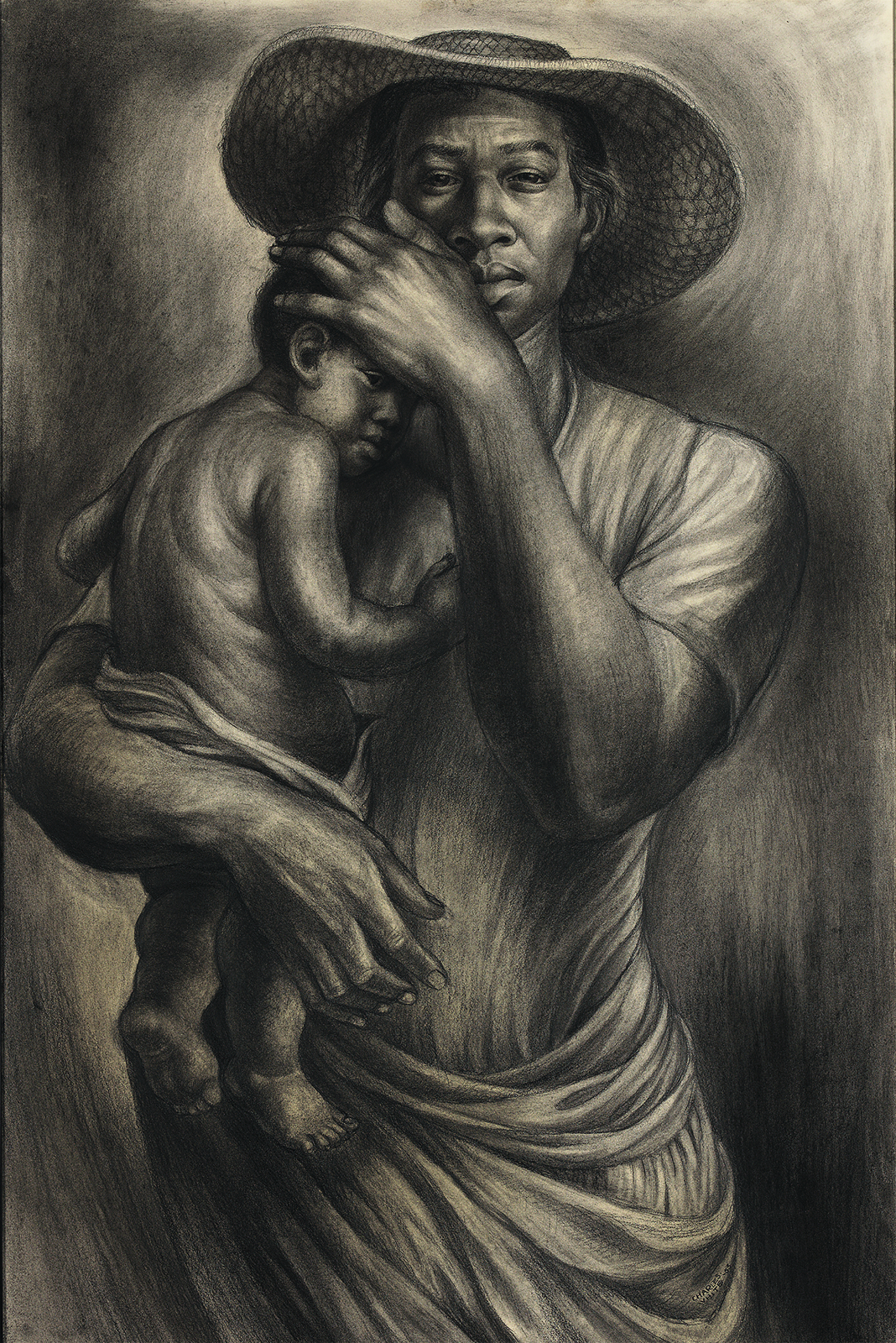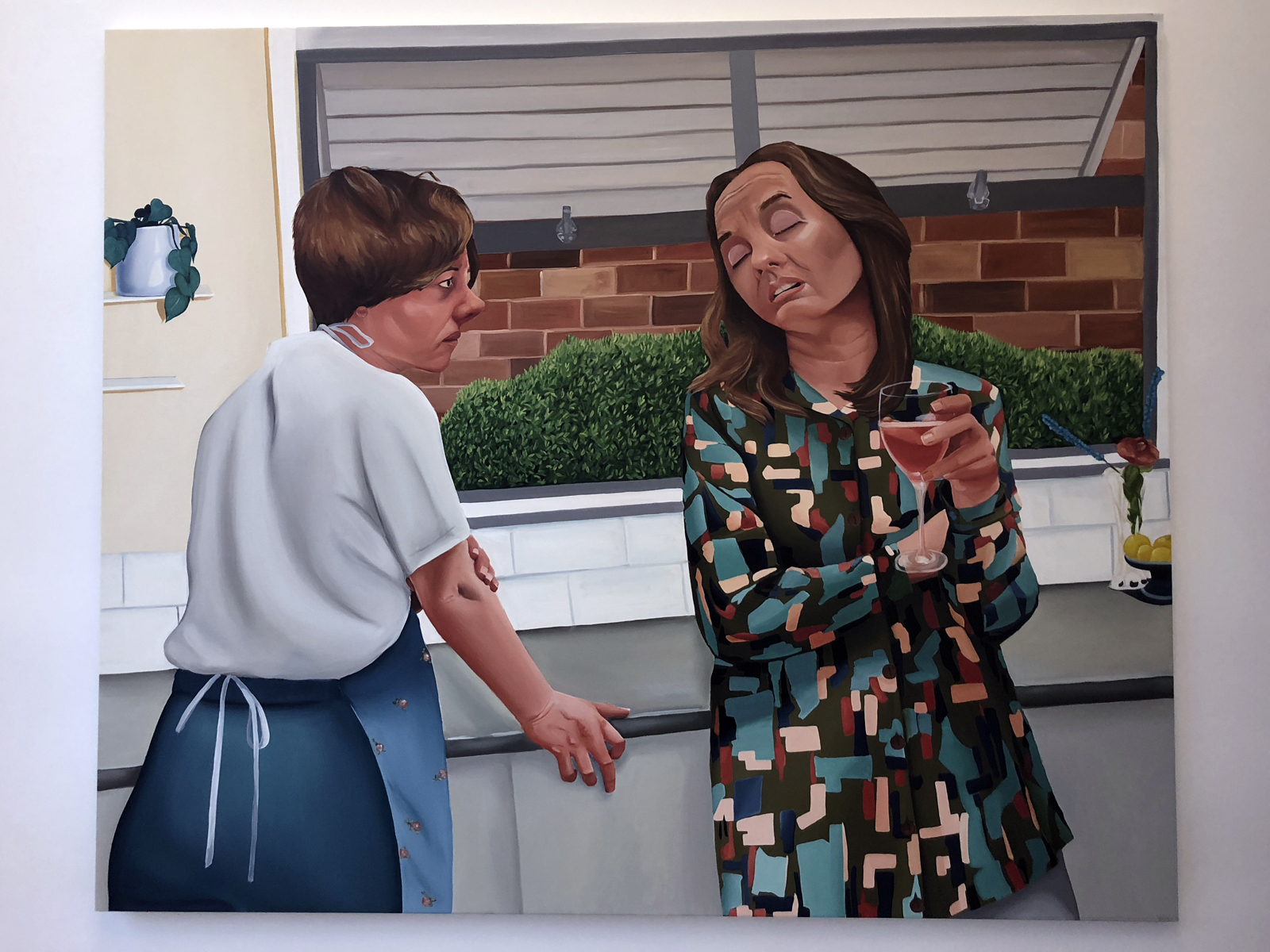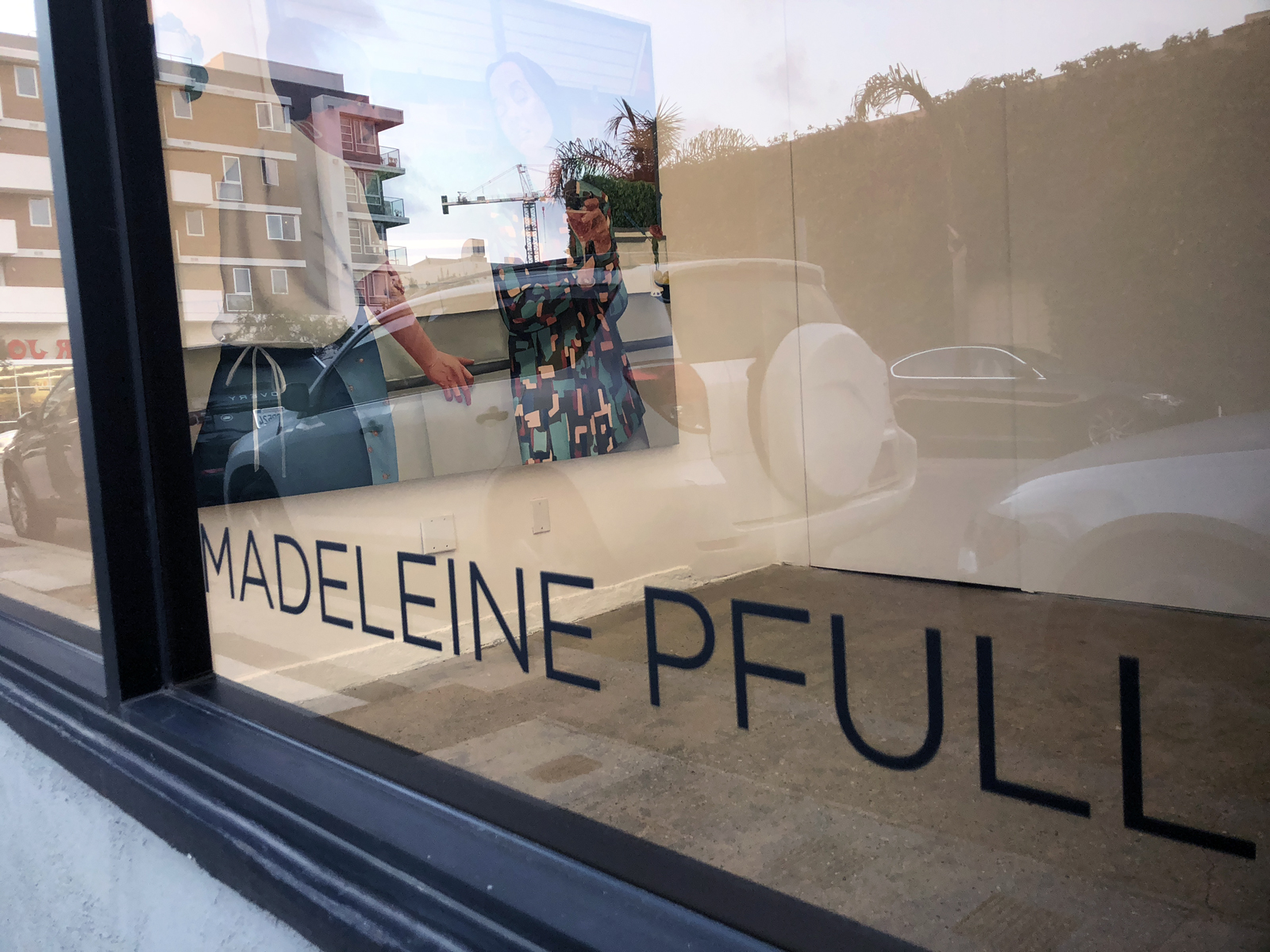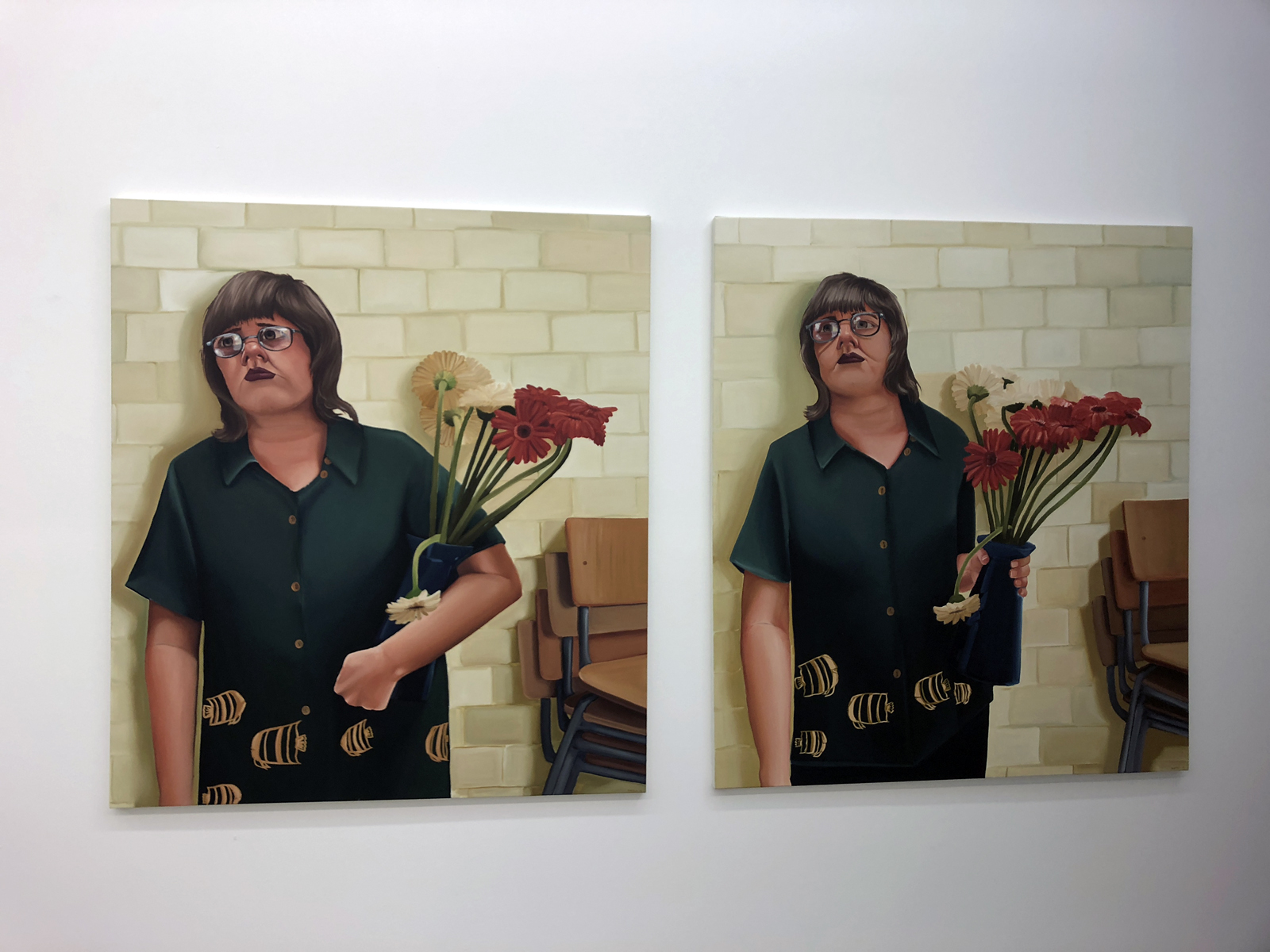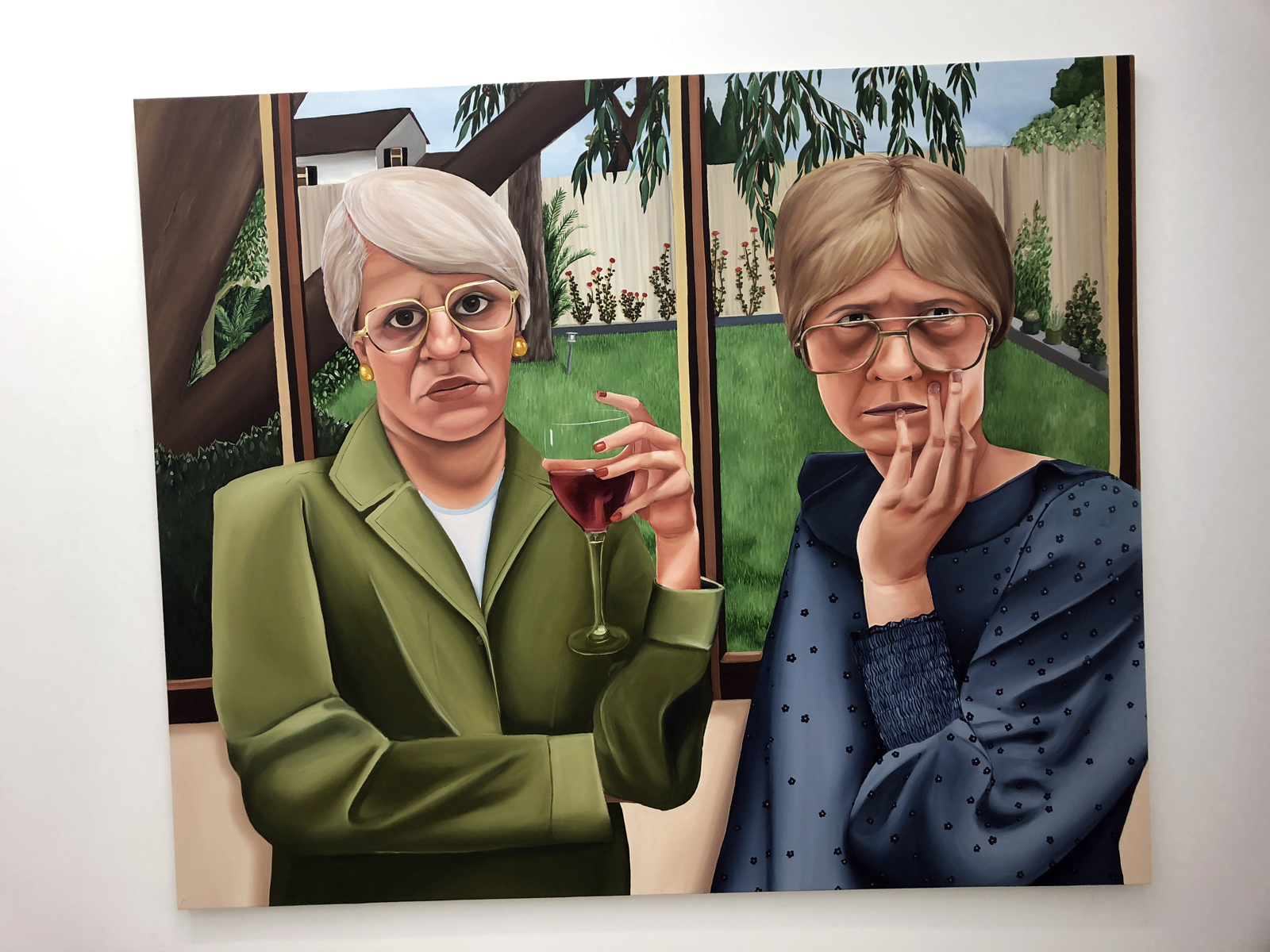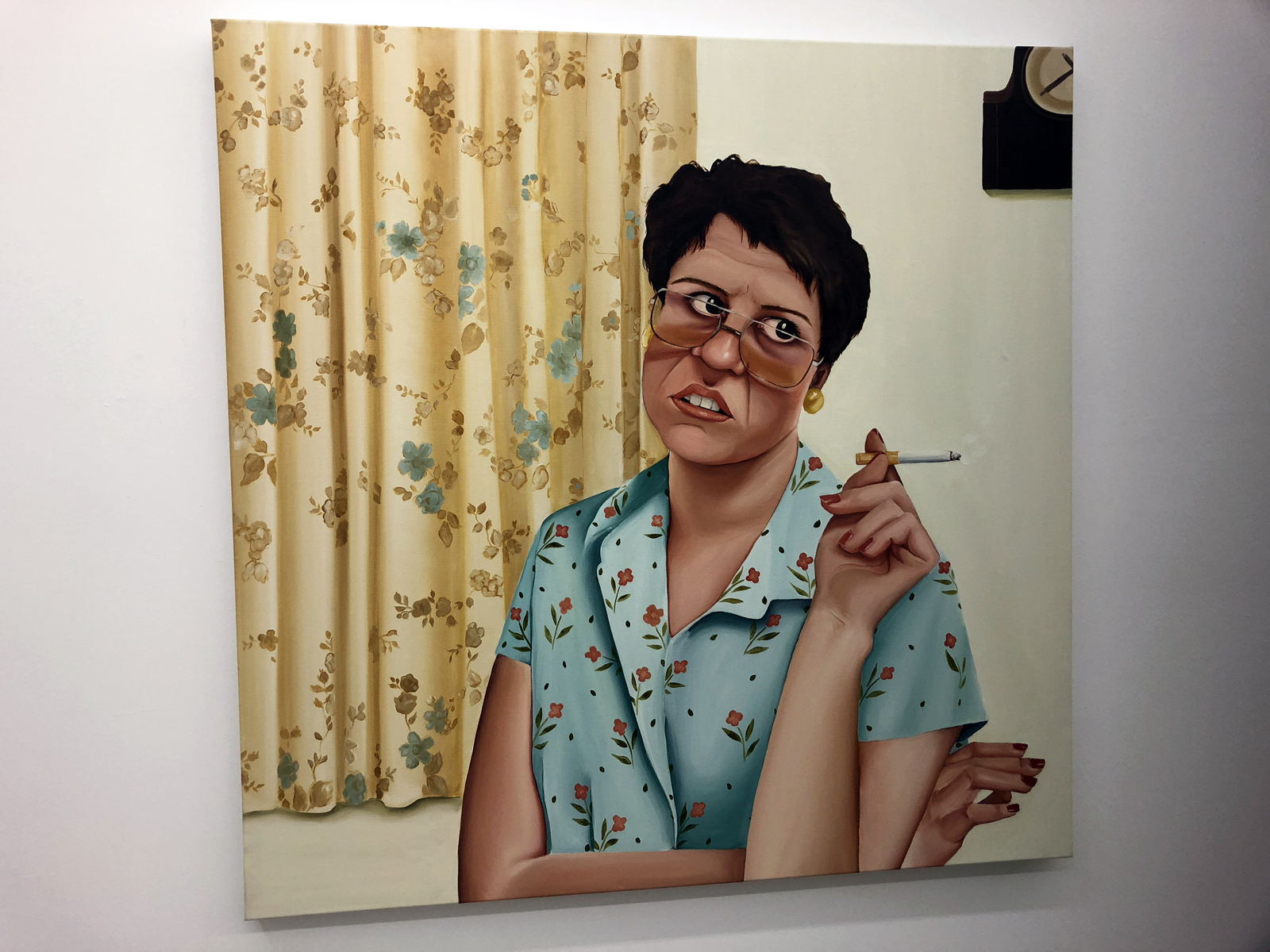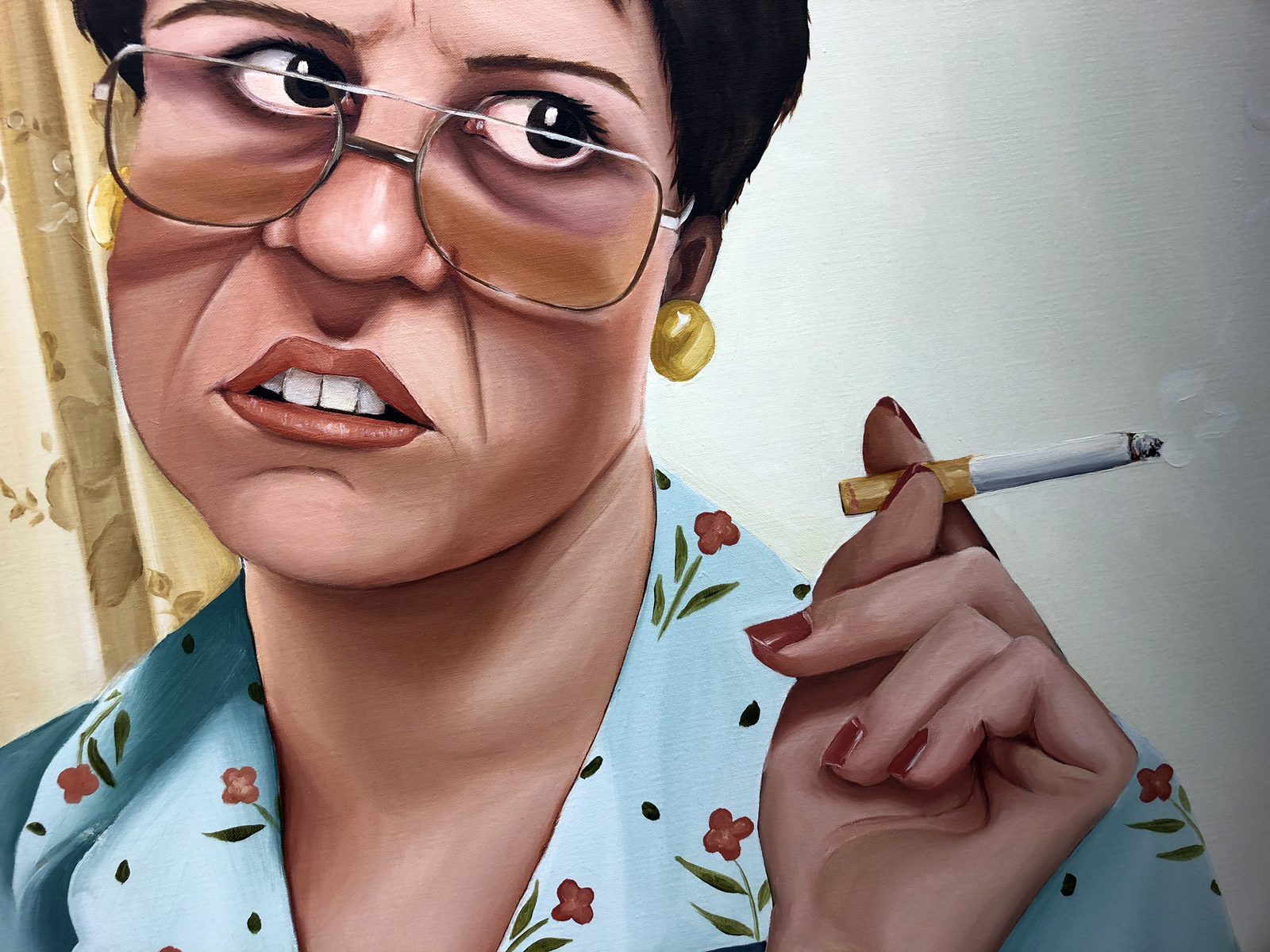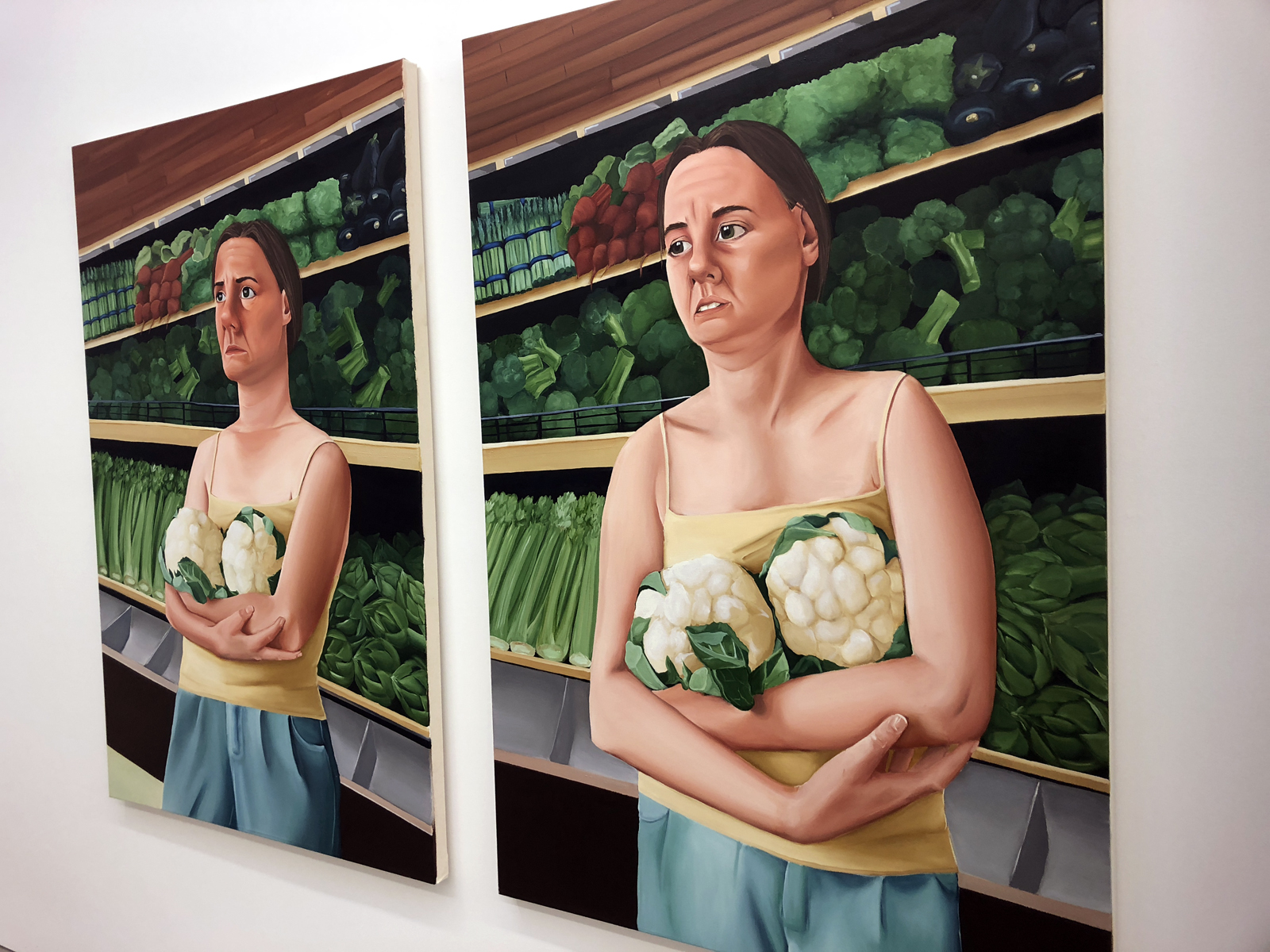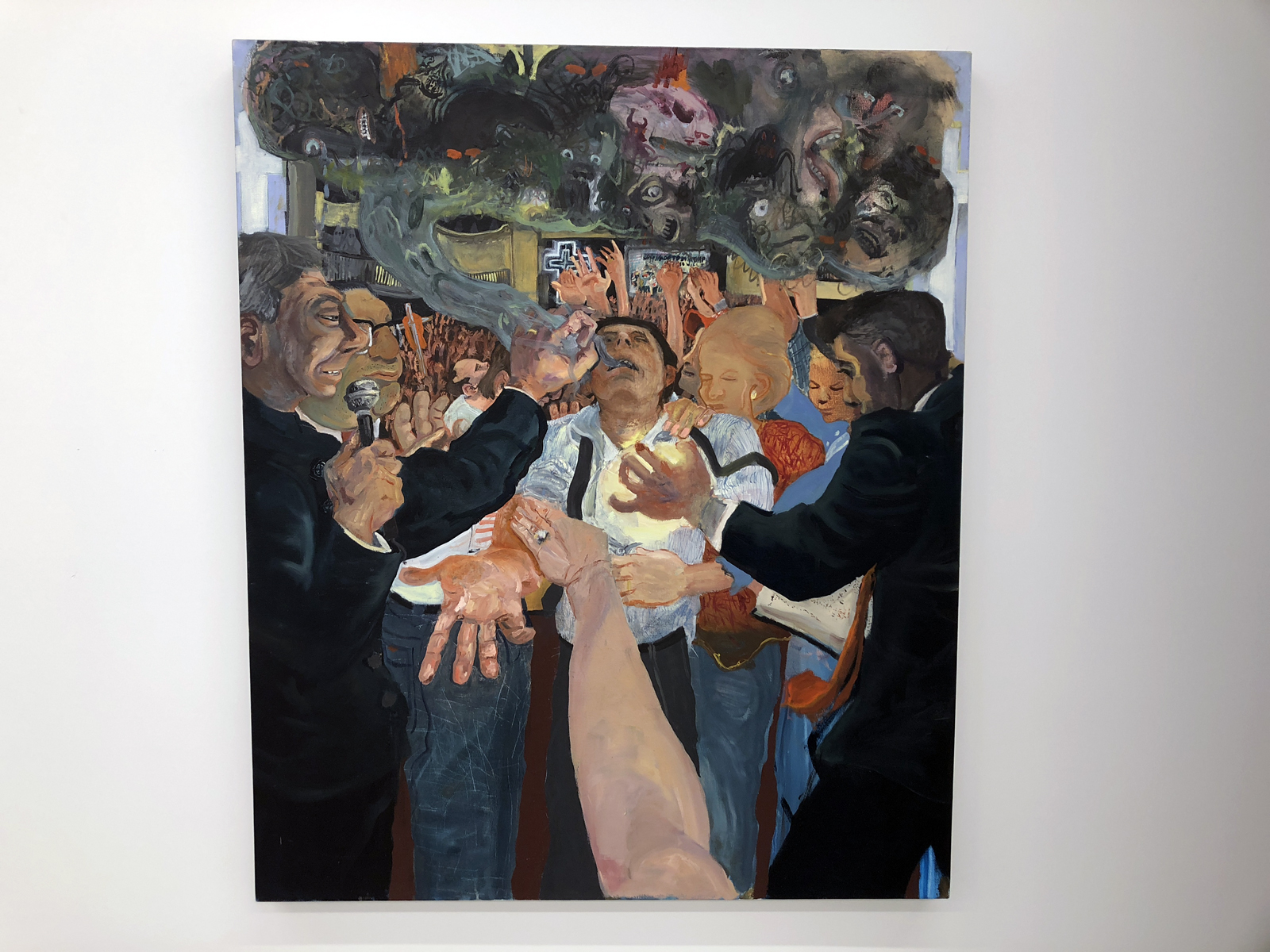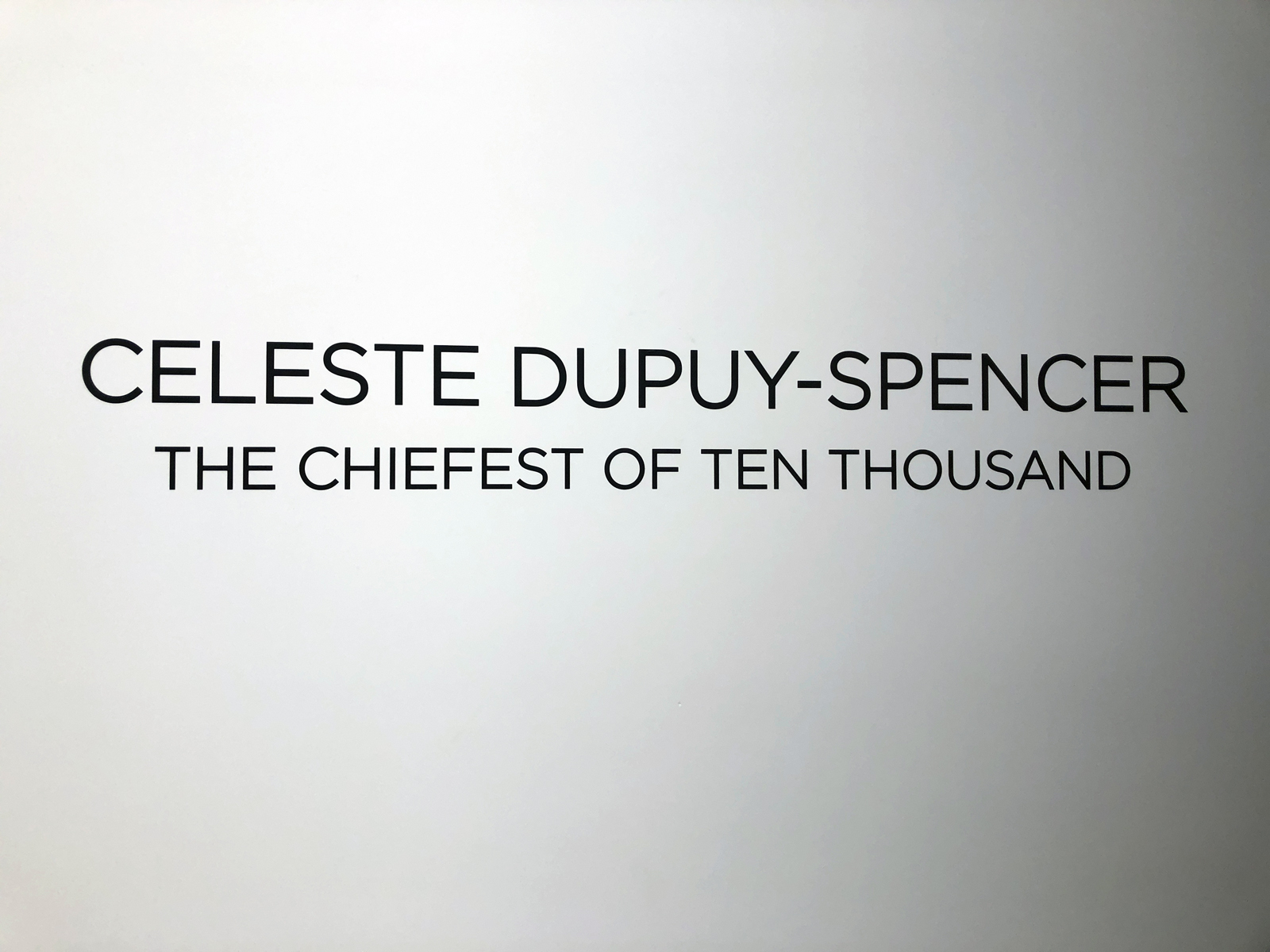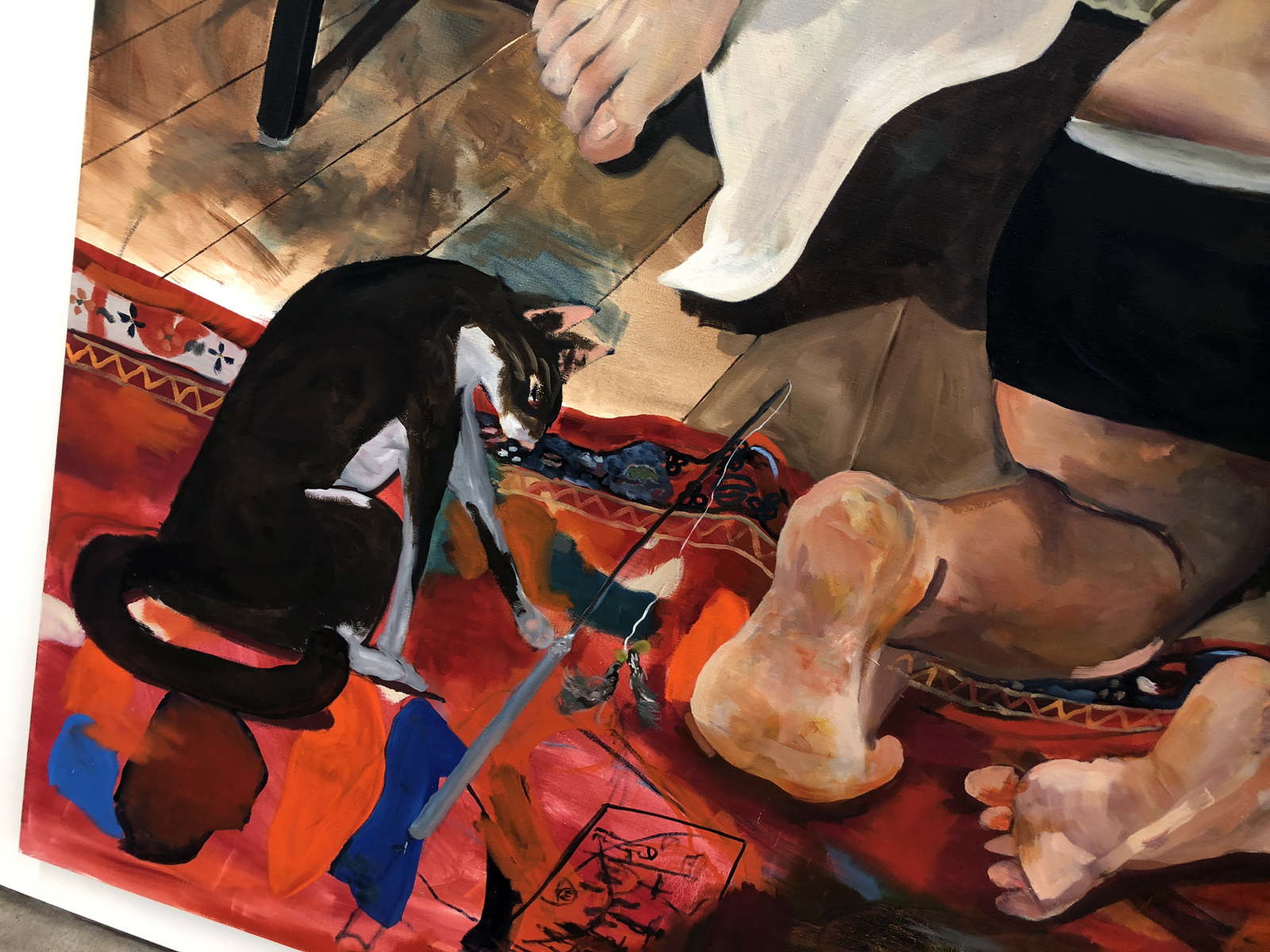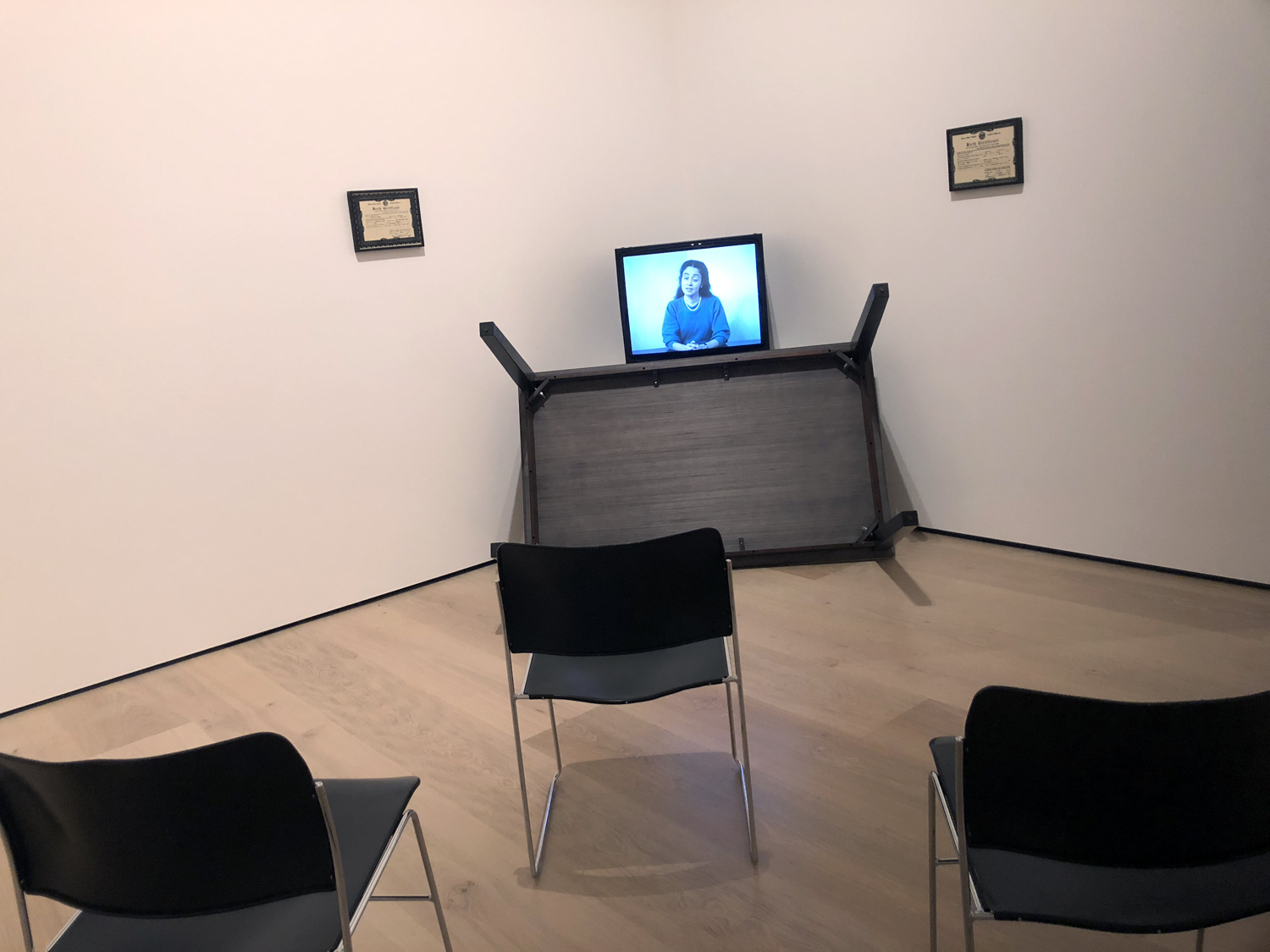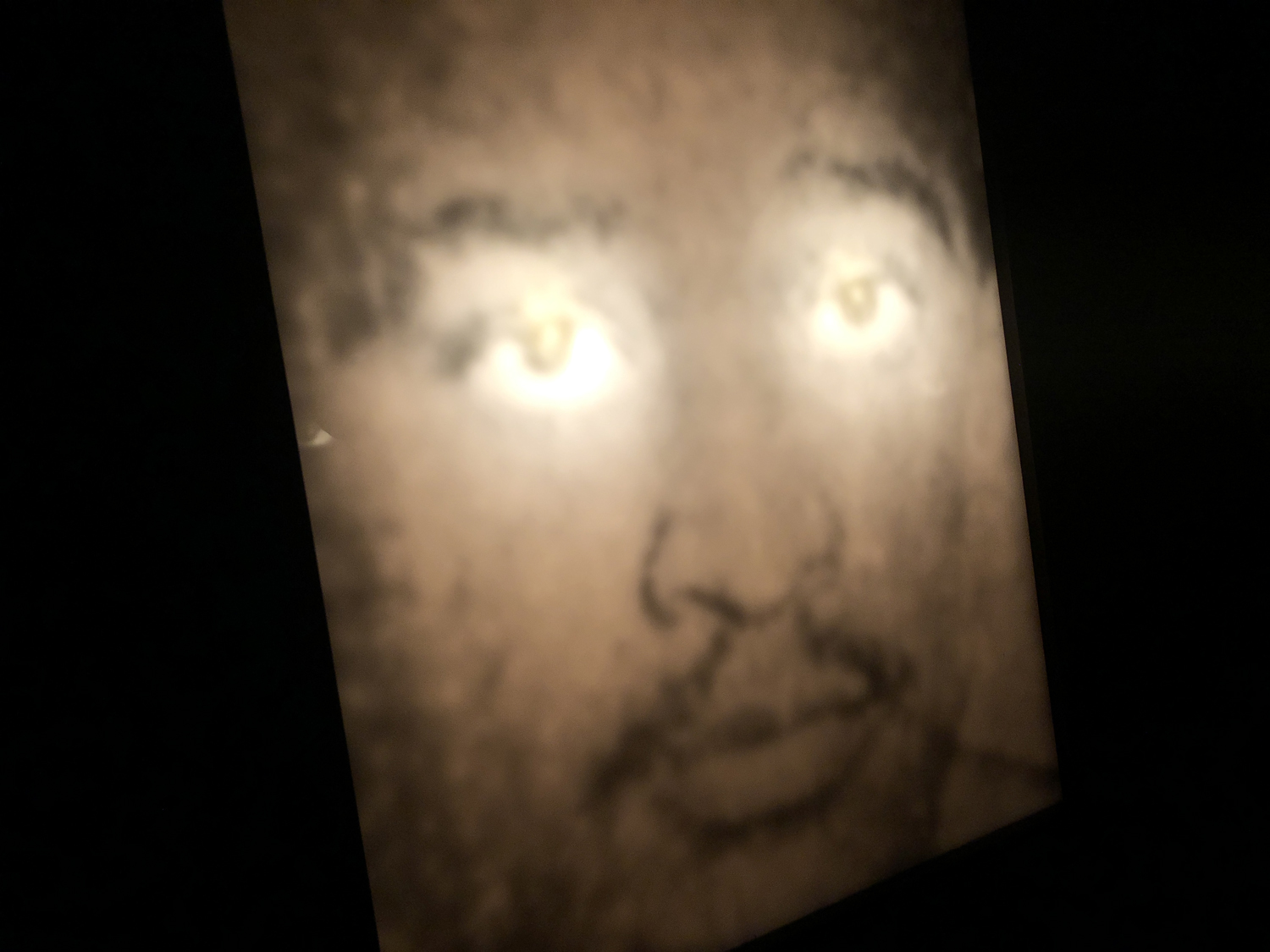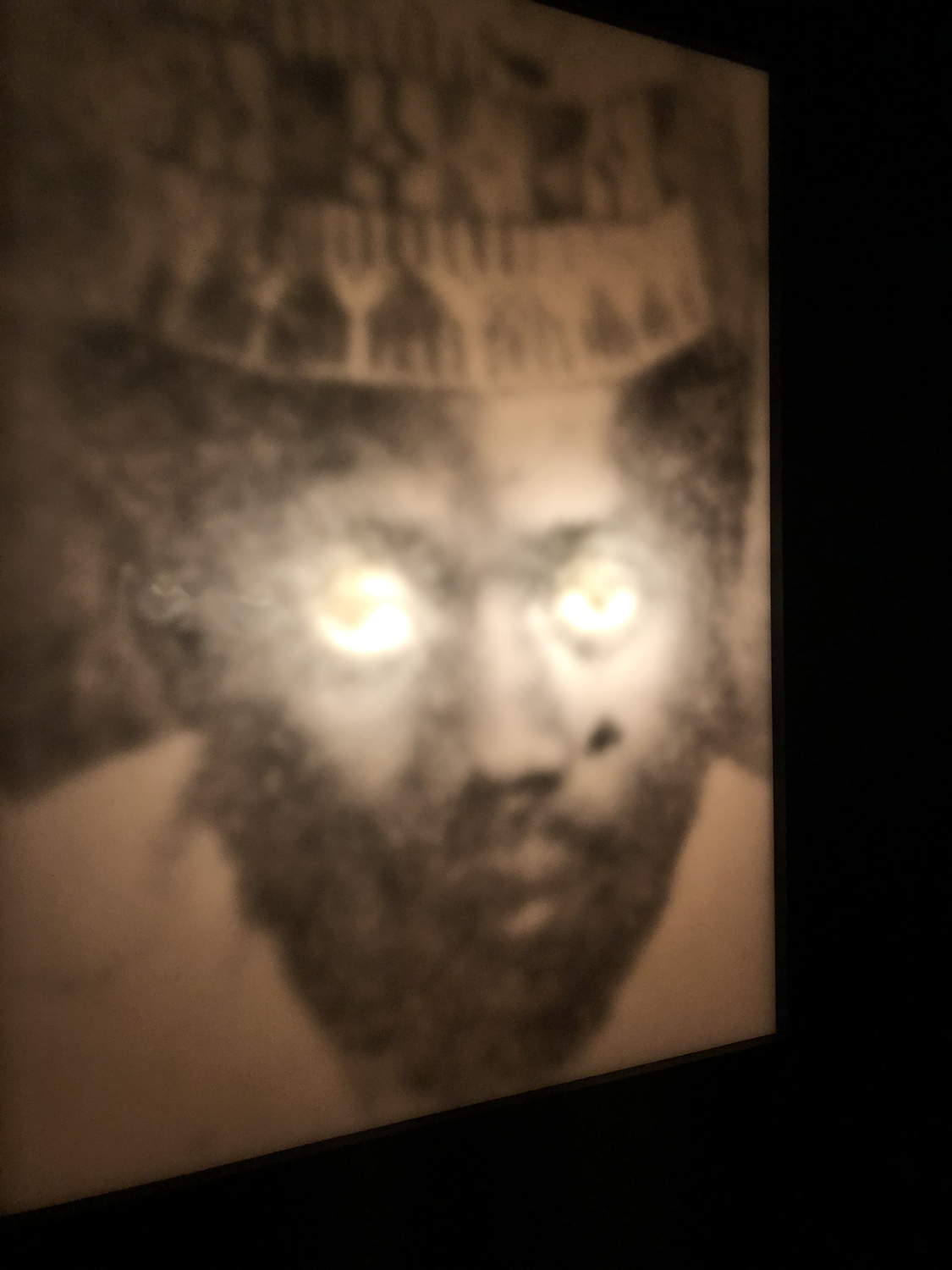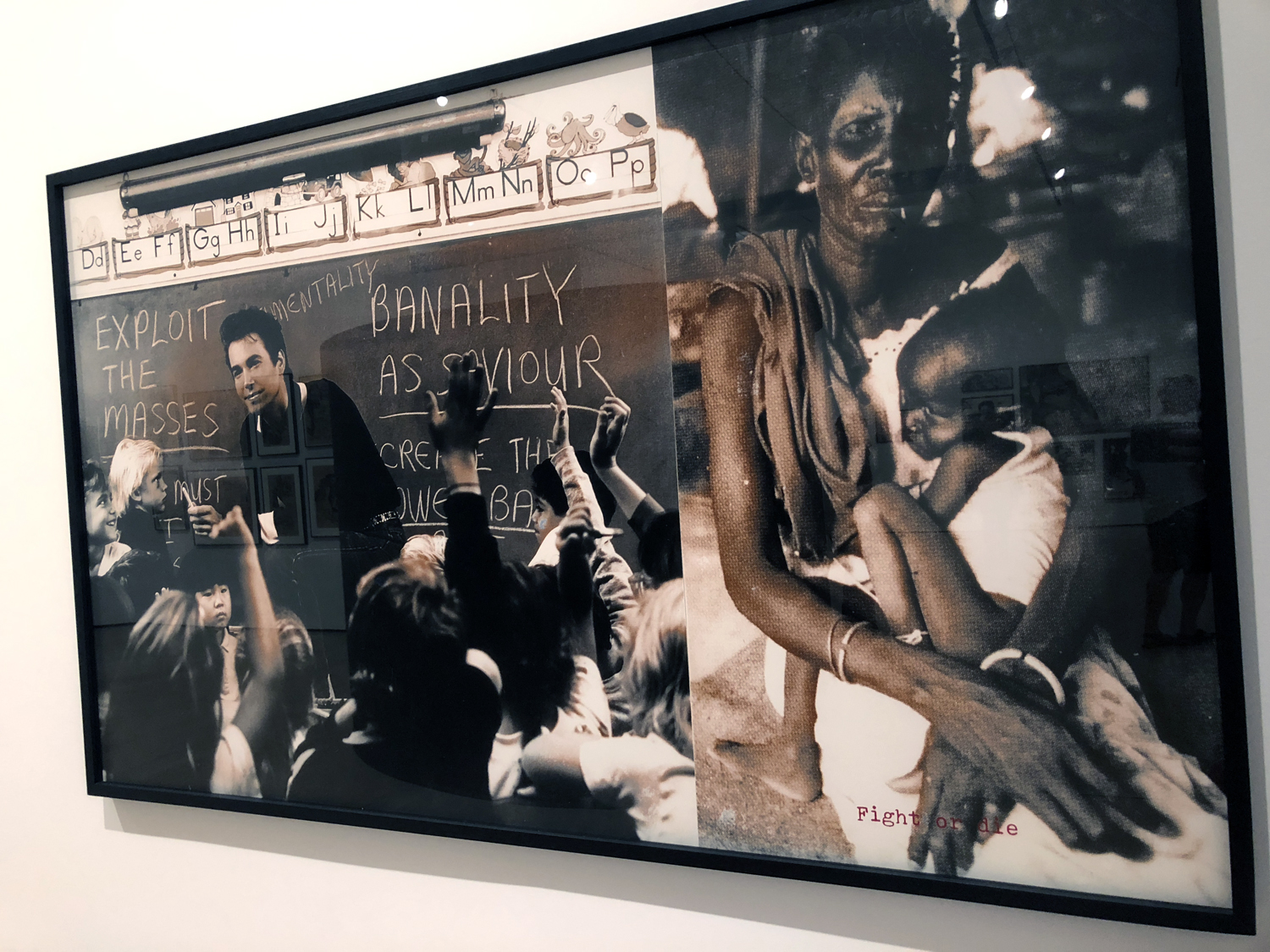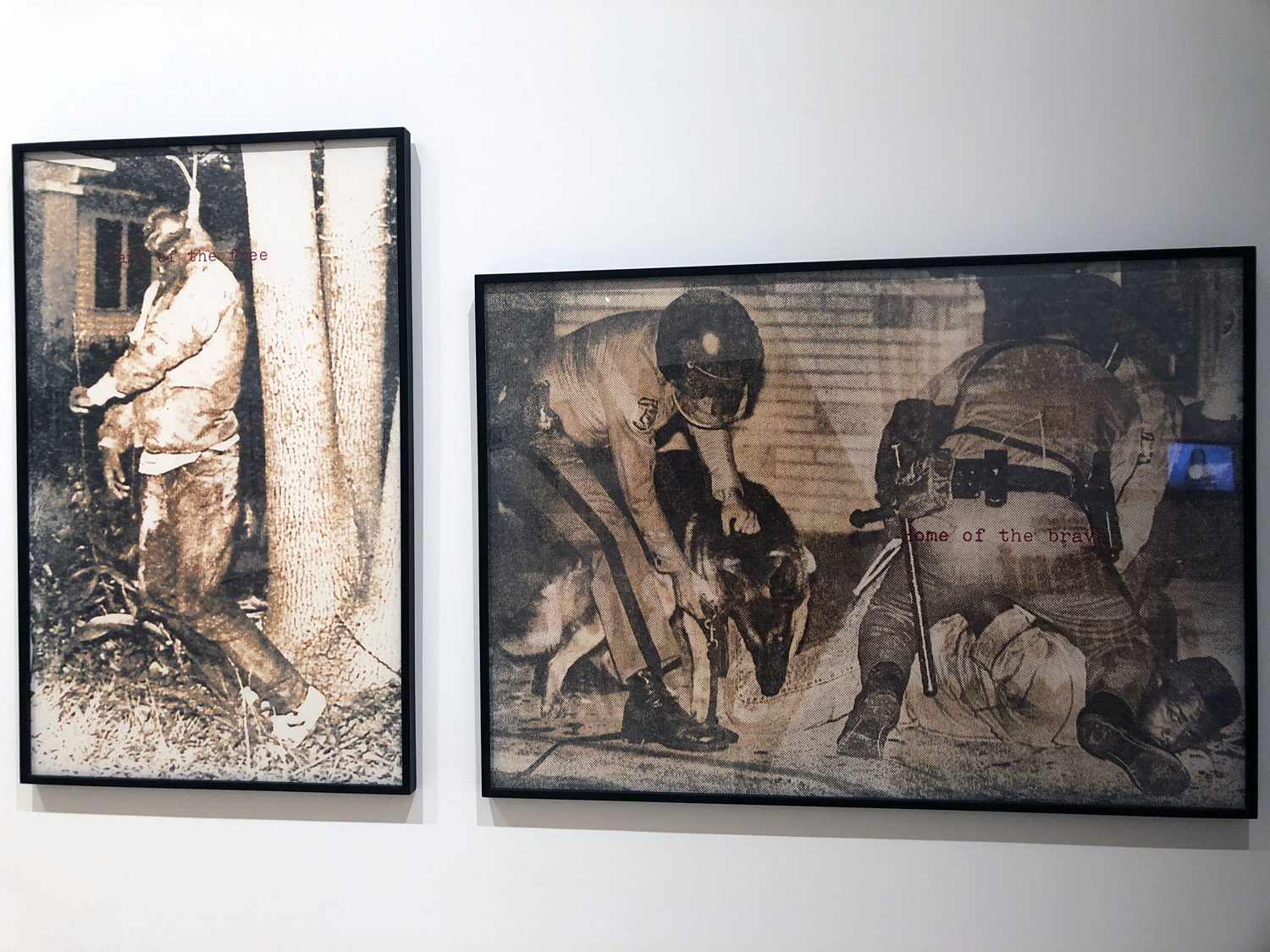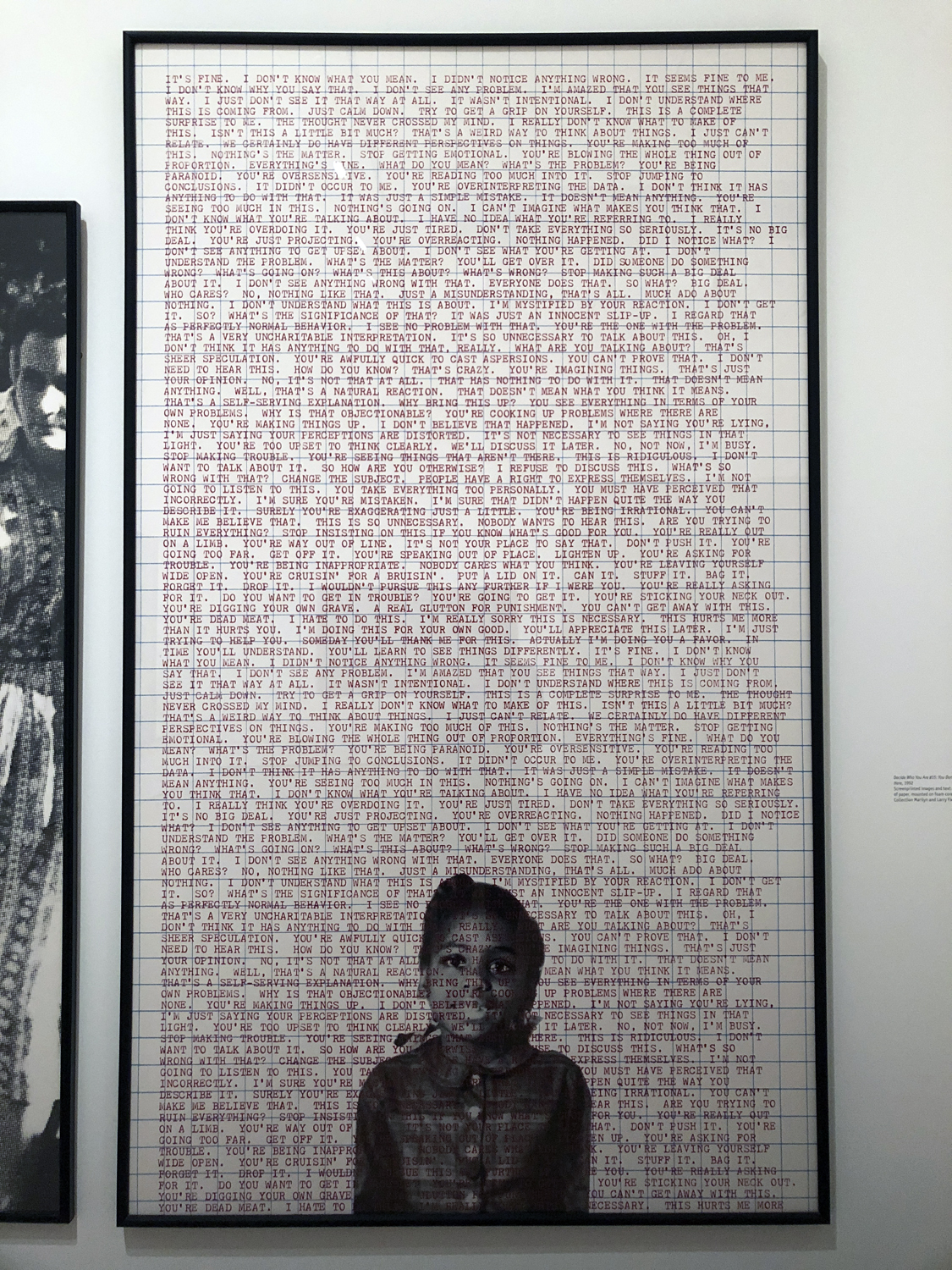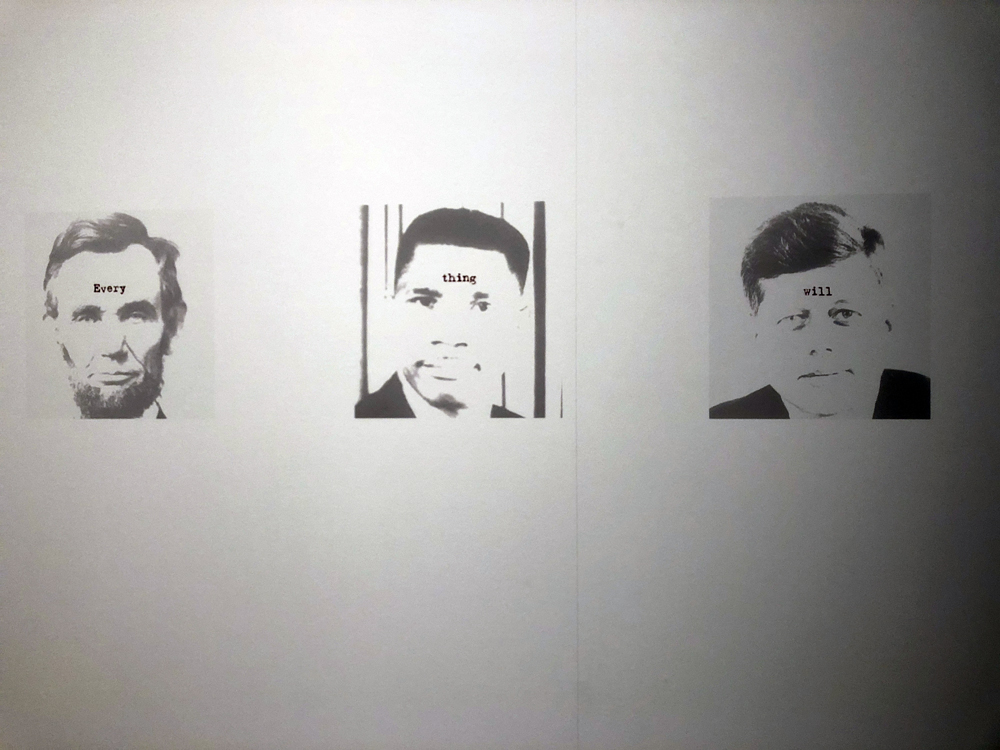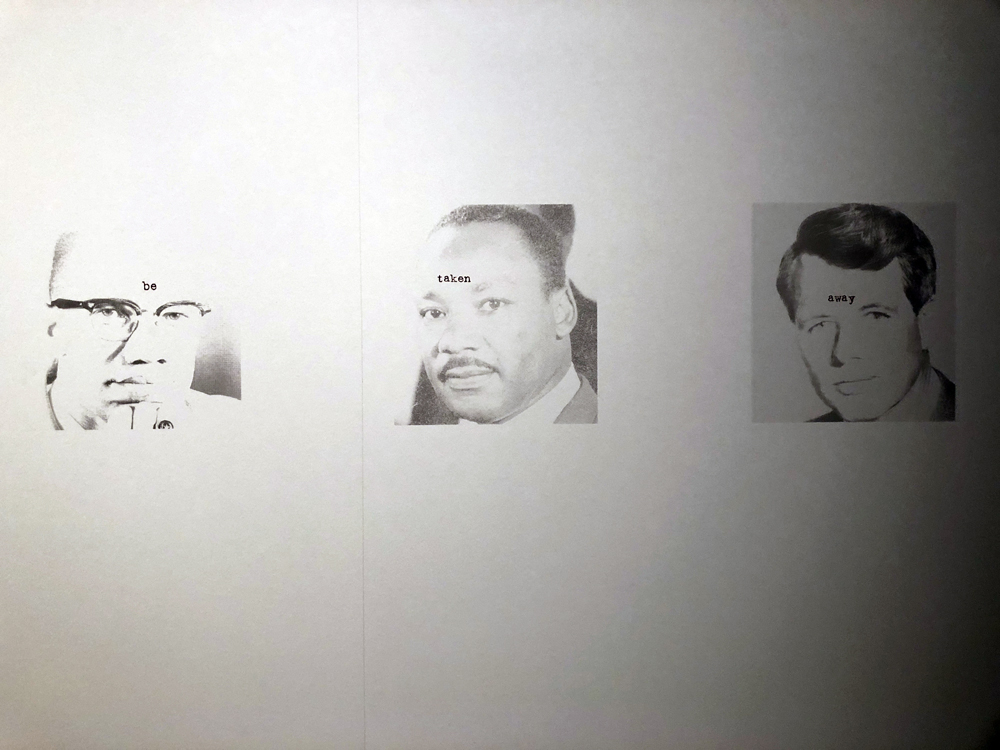“It has been through all the phases of decline and is now thoroughly blighted. Subversive racial elements predominate; dilapidation and squalor are everywhere in evidence. It is a slum area and one of the city's melting pots. There is a slum clearance project under consideration but no definite steps have as yet been taken. It is assigned the lowest of ‘low red’ grade.”
The following is an essay written by the artist, which serves as the only contextual reference for the show, since the pieces do not include didactics. For a copy of this essay with full footnotes, print copies are available at the entrance of the gallery
Home Owners’ Loan Corporation, Residential Security Map.
Location: Bunker Hill
Security Grade: 4th
Area No.: D37
Date: 2/27/39
Slaves were constructed as property. By withholding citizenship from people who were enslaved, slavery in the United States did not violate constitutional rights. As both persona and property, the slave functioned as a source of labor, chattel, and reproduction for the master as well as the greater economy. Saidiya Hartman describes the efficacy of this dual status:
The protection of property (defined narrowly by work capacity and the value of capital), the public good (the maintenance of black subordination), and the maintenance and reproduction of the institution of slavery determined the restricted scope of personhood and the terms of recognition…In the case of motherhood, the reproduction and conveyance of property in favor with the latter.
State governments considered slaves taxable property. Slave owners were taxed for each slave they owned. Every state which allowed slavery taxed the slaves. States relied on the salve economy to develop state government and infrastructure. These state tax codes formalized governmental involvement in the slave economy. In the United States between 1776 and 1865, the definition of public must be qualified to exclude the entirety of the salve population, and the definition of property must be understood to include the entirety of the slave population. Under antebellum tax codes, slaves were recognized and recorded as equivalent to cattle, pigs, clocks, carriages, and land. In 1860, slaves comprised 20% of all American wealth, including real estate.
Immediately following emancipation, the legal status of former slaves remained ambiguous. Congress passed the Civil Rights Act of 1866 to define their legal status. Section 1 reads:
Be it enacted by the Senate and House of Representatives of the United States of America in Congress assembled, That all persons born in the United States and not subject to any foreign power, excluding Indians not taxed, are hereby declared to be citizens of the Unite States; and such citizens, of every race and color, without regard to any previous condition of slavery or involuntary servitude, except as a punishment for crime whereof the party shall have the same right, in every State and Territory in the United States, to make and enforce contracts, to sue, be parties, and give evidence to inherit, purchase, lease, sell, hold, and convey real and personal property, and to full and equal benefit of all laws and proceedings for the security of person and property, as is enjoyed by white citizens, and shall be subject to like punishment, pains, and penalties, and to none other, any law, statute, ordinance, reputation, or custom, to the contrary notwithstanding.
By conferring legal protection “as is enjoyed by white citizens,” the Civil Rights Act of 1866 uses “white citizens” as its benchmark for legal protection. Harman writes, “[T]he rejection of an explicit antidiscrimination clause in the Civil Rights Act of 1866 and the Fourteenth Amendment in favor of the language of equal protection attests to the nebulous character of the equality conferred. The Civil Rights Act both permitted discrimination in certain arenas and narrowly defined the scope of civil rights.
In 1896, Plessy v. Ferguson confirmed the constitutionality of racial segregation, maintaining that the doctrine of “separate but equal” did not violate the Fourteenth Amendment. State laws stipulating the terms of segregation came to be known as Jim Crow laws. Jim Crow laws were enforced by both police and white citizens. Lynching secured the racial order of segregation. This order secured control of governments that were designed to serve white citizens at the federal, state, and local levels and to protect property owned by white citizens. After emancipation, citizenship–as defined by the ability to make contracts and own property equal to that of white citizens–remained reserved for white citizens.
Land ownership in the United States is most commonly registered with a deed, which also indicates restrictions of encumbrances on an owner’s use of the land. In 1918, white landowners began to incorporate racially restrictive covenants into their deeds. By 1940, 80% of property in Chicago and Los Angeles carried racially restrictive covenants. As the U.S. Commission on Civil Rights reported in 1973, the typical language of racially restrictive covenants stipulated:
…hereafter no part of said property or any portion thereof shall be…occupied by any person not of the Caucasian race, it being intended hereby to restrict the use of said property…against the occupancy as owners or tenants of any portion of said property for resident or other purpose by people of the Negro or Mongolian race.
Racially restrictive covenants were implemented on the basis of private contract, but they were utilized collectively among groups of white neighbors. By prohibiting nonwhite ownership, these covenants protected the value of individual homes and maintained neighborhood and regional property values. Because restrictive covenants “run with the land,” all subsequent owners of the property were required to abide by the terms of the covenant. Although Shelley v. Kraemer rendered these clauses unenforceable in 1948, the clauses remain as a part of the deeds they were written into.
The racial restrictions imposed through private contract interlocked with federal policy to maintain segregation by instituting racially restrictive financing guidelines. In 1933, a mortgage company operating as part of the federal government–called the Home Owner’s Loan Corporation (HOLC)–was established to assist in the refinancing of homes in foreclosure. “According to the 1940 Housing Census, fewer than 25,000 of more than one million homes refinanced by HOLC went to nonwhites. Beginning in 1935, the HOLC surveyed the lending risks of all cities that had a population over 40,000. these surveys were consolidated into Residential Security Maps, which were to be used by lenders to rebuild the real estate market that had been destabilized by the Great Depression. These 239 maps were divided into distinct sections, and each section was given a rating: “Best” A (green), “Still desirable” B (blue), “Definitely Declining” C (yellow), and “Hazardous” D (red). Rae, class, and ethnicity were explicit criteria for the determination of these grades, as indicated in the rating reports. The maps directly influenced the mortgage lending of private banks, the Federal Housing Administration, and the Veterans Administration. Areas rated A were deemed worthy of mortgage financing. Areas rated D were described as “hazardous” and mortgage loans were restricted from them. the restriction of financing on the basis of race became known as redlining. the Federal Housing Administration used and continued to update the maps, continued the HOLC’s use of race and the criteria of “inharmonious racial groups” in their ratings, and recommended the use of racially restrictive covenants. Redlining codified the use of racial discrimination to enhance real estate markets and formalized segregation as federal policy. It also incepted redevelopment projects that resulted in widespread displacement, dislocation, and dispossession. Like sharecropping, redlining systematically maintained racial-economic subordination to white citizens, federally defining the terms of property ownership on the basis of race.
Law enforcement compounds racial definitions of property in its use of asset forfeiture to fund its operations. Asset forfeiture takes numerous forms. Criminal asset forfeiture describes the forfeiture of property from a person charged with a crime. Administrative asset forfeiture describes the forfeiture of property as a result of unpaid debt. Civil asset forfeiture describes the forfeiture of property involved with a crime for which no person has been charged.
Civil asset forfeiture originated in the English Navigation Act of 1660. The Navigation Acts were established to maintain the English monopoly on the triangular trade between England, West Africa, and the English colonies. As Eric Williams writes, “Negroes, the most important export of Africa, and sugar, the most important export of the West Indies, were the principal commodities enumerated by the Navigation Laws. The Navigation Acts stipulated that only English ships were to dock in English ports in both England and the colonies. If this law was vilated, in lieu of pursuing a criminal proceeding, the ship and all property on board were subject to forfeiture.
The Comprehensive Drug Abuse Prevention and Control Act of 1970 allowed police to seize drugs and any property used in their production or transportation. The 1984 Comprehensive Crime Control Act designated all forfeiture profits at the federal level to be used for law enforcement purposes. Forfeiture laws passed on the state level have created similar provisions. These laws effectively constitute a financial incentive to practice asset forfeiture.
A 1995 report by the Government Accountability Office expressed concern for law enforcement agencies “becoming overzealous in their use of the asset forfeiture laws or too dependent of the funds derived from such seizures.” Federal and state laws have consistently expanded the violations that can result in forfeiture. In a 2001 study of 1,400 municipal and county law enforcement agencies, 60% reported that forfeiture profits were a necessary part of their budget. Forty states have forfeiture statutes that allow law enforcement to keep 45% to 100% of forfeiture proceeds. Through the Department of the Treasury Equitable Sharing Program, local and state police departments can seize property under federal authority, transfer the property to the Treasury Forfeiture Fund, and receive up to 80% of the proceeds from its auction.
Civil asset forfeiture is treated as an in rem proceeding. Rather than charging the owner with a crime, the property itself is charged. As such, forfeiture is now simply based on “whether a law enforcement agency has probable cause to believe that the property is connected to illegal activity.” In many states, assets may be forfeited without a conviction. “[B]ecause the civil forfeiture is deemed an in rem action, the government conducts warrantless seizures baed on probably cause, and unless the forfeiture involves a residential home, claimants are not entitled to pre-deprivation notice or hearing.” Former owners of forfeited property are considered third parties to in rem proceedings and are not entitled to public defense.
In 2015 the average cash seizure in Philadelphia was $192. Low-value forfeitures are less likely to be contested, given that the costs of litigation would outweigh the value of the property in question, and low-income owners are less likely to contest the forfeiture of their property. This creates an incentive for police to target low-income people to seize low-value property, given that it has a higher likelihood of being retained.
In Philadelphia between 2011 and 2013, civil asset forfeiture disproportionately targeted black people, who made up 44% of the population, 63% of all forfeitures, and 71% of forfeitures without conviction. In California in 2013 and 2014, 18% and 85% of all payments, respectively, went to police agencies in majority and minority communities. A survey of forfeitures in Oklahoma between 2010 and 2015 found that nearly two-thirds of forfeitures from traffic stops came from black and Hispanic drivers.
Civil asset forfeiture is also a practice and source of funding for the Department of Homeland Security (DHS). The creation of the Department of Homeland Security in 2003 included the creation of three new agencies: United States Citizenship and Immigration Services (USCIS), which processes applications for citizenship, residency, and asylum; Customs and Border Protection (CBP), which enforces law at the border and includes the Border Patrol agents formerly part of Immigration and Natural Services (INS); and Immigration and Customs Enforcement (ICE), which is charged with immigration and customs law enforcement within the border. ICE and CBP frequently overlap in their jurisdictions and functionality. Both can delegate powers to local law enforcement agents. CBP is the largest single law enforcement agency in the country, with approximately 60,000 employees. The Treasury Forfeiture Fund also receives assets from federal enforcement agencies through the Equitable Sharing Program and distributes up to 80% to the seizing agency. Between 2003 and 2013, DHS contributed 53% of the total revenues collected in the Treasure Forfeiture Fund. In 2013, ICE contributed $1 billion in seized property to the Treasure Forfeiture Fund, almost twice that of all non-DHS agencies.
No More Deaths describes the forfeiture practices of ICE, CBP, and Border Patrol as part of the “cycle of dispossession” of people who are undocumented, carried out by
private employers who engage in illegal and exploitative labor practices in the United States; local police and toting companies that seize private vehicles and charge exorbitant daily storage rates; detention bonds and related fees associated with the immigration court system; government officials in Mexico and the United States who solicit bribes or otherwise directly rob migrants of their belongings; private prison companies whose exploitative labor practices fail to follow basic standards established in the Fair Labor Standards Act; and phone, commissary and credit card companies that contract with prisons and extract exorbitant fees for the provision of basic services.
Each of these practices relies on the absence of protections for those rendered as noncitizens. This absence creates vested financial interests in both the labor exploitation of people who are undocumented as well as the enforcement of their “legal status.” These seemingly conflicting interests form a productive double bind that maintains the status of noncitizens. These methods of dispossession have developed to closely resemble the nexus of fines, fees, and forfeitures imposed on those who are incarcerated. Criminal charges eliminate basic protections and incept dispossession through cash bail; public defender fees; court fees; pay-to-stay jail and prison fees; overpriced and monopolized prison commissary, phone, and internet services; administrative forfeiture; criminal forfeiture; and private probation, among other means. Citizenship is explicitly withheld from people who are incarcerated, formerly incarcerated and undocumented; it is implicitly withheld from those who don’t meet the standard of white citizenship. The withholding of citizenship continues to structure the racial terms of dispossession.
42 USC § 1981, “Equal rights under the law,” last updated in 1991, maintains white citizenship as the standard for legal protection in current U.S. statute law:
(a) Statement of equal rights.
All persons within the jurisdiction of the United States shall have the same right in every State and Territory to make and enforce contracts, to sue, be parties, give evidence, and to the full and equal benefit of all laws and proceedings for the security of person and property as is enjoyed by white citizens, and shall be subject to like punishment, pains, penalties, taxes, licenses, and exactions of every kind, and to no other.
D37 will open on October 14 and will be on view through March 11, 2019 at The Museum of Contemporary Art 250 South Grand Ave, Los Angeles. photographs by Oliver Maxwell Kupper

